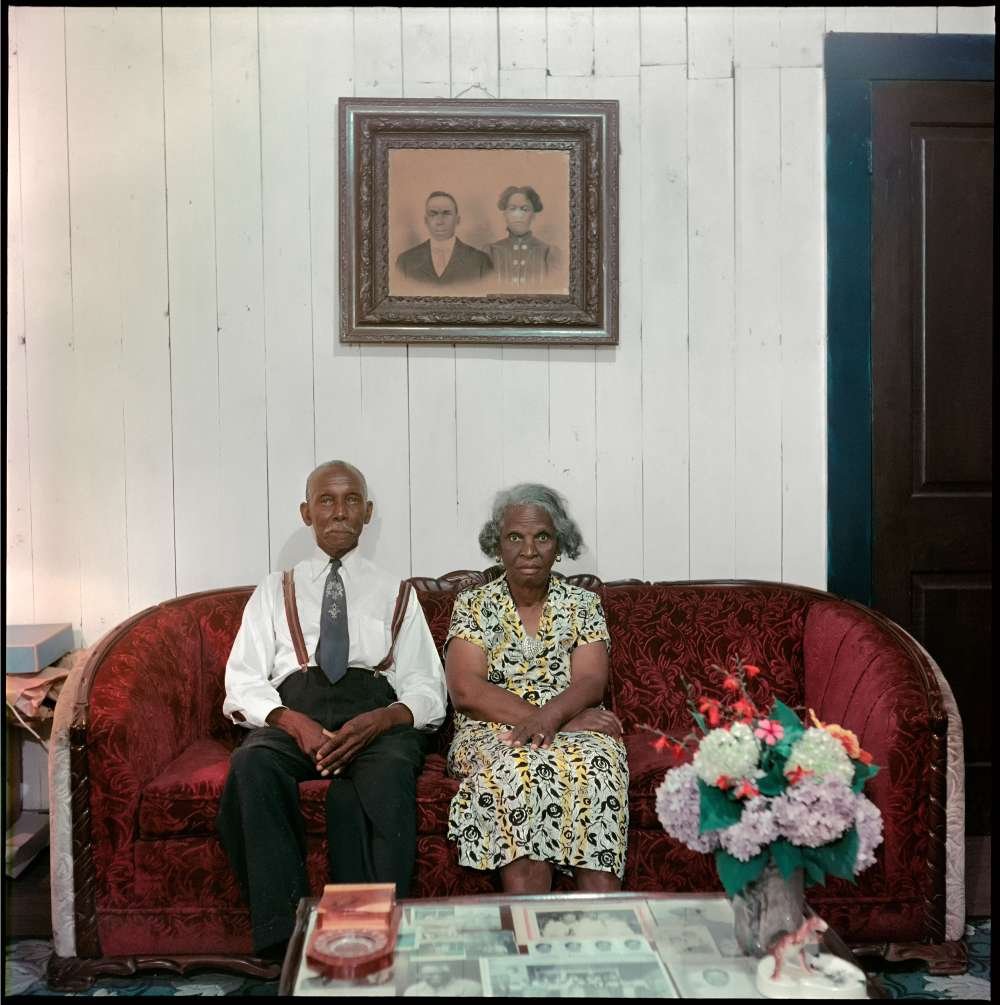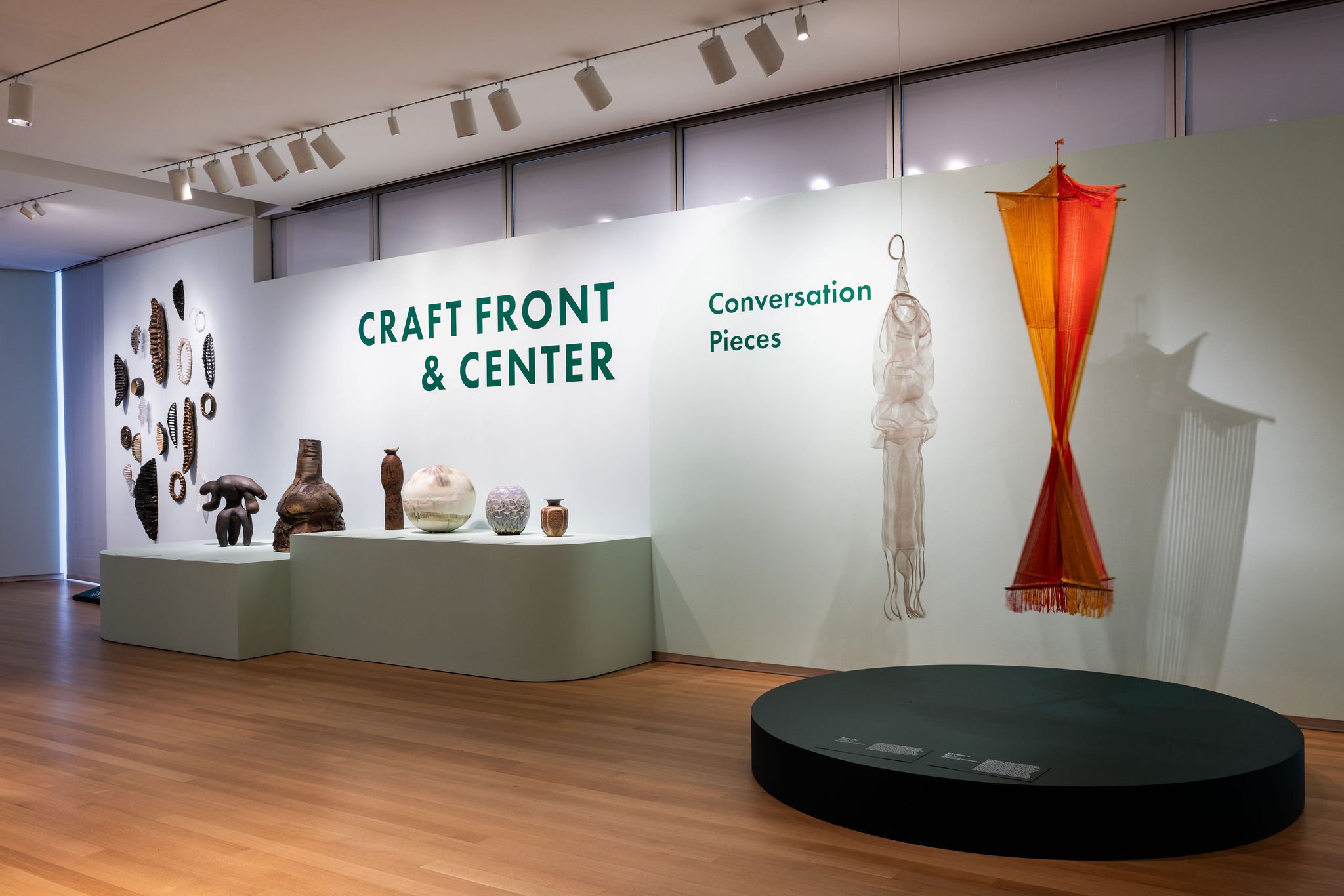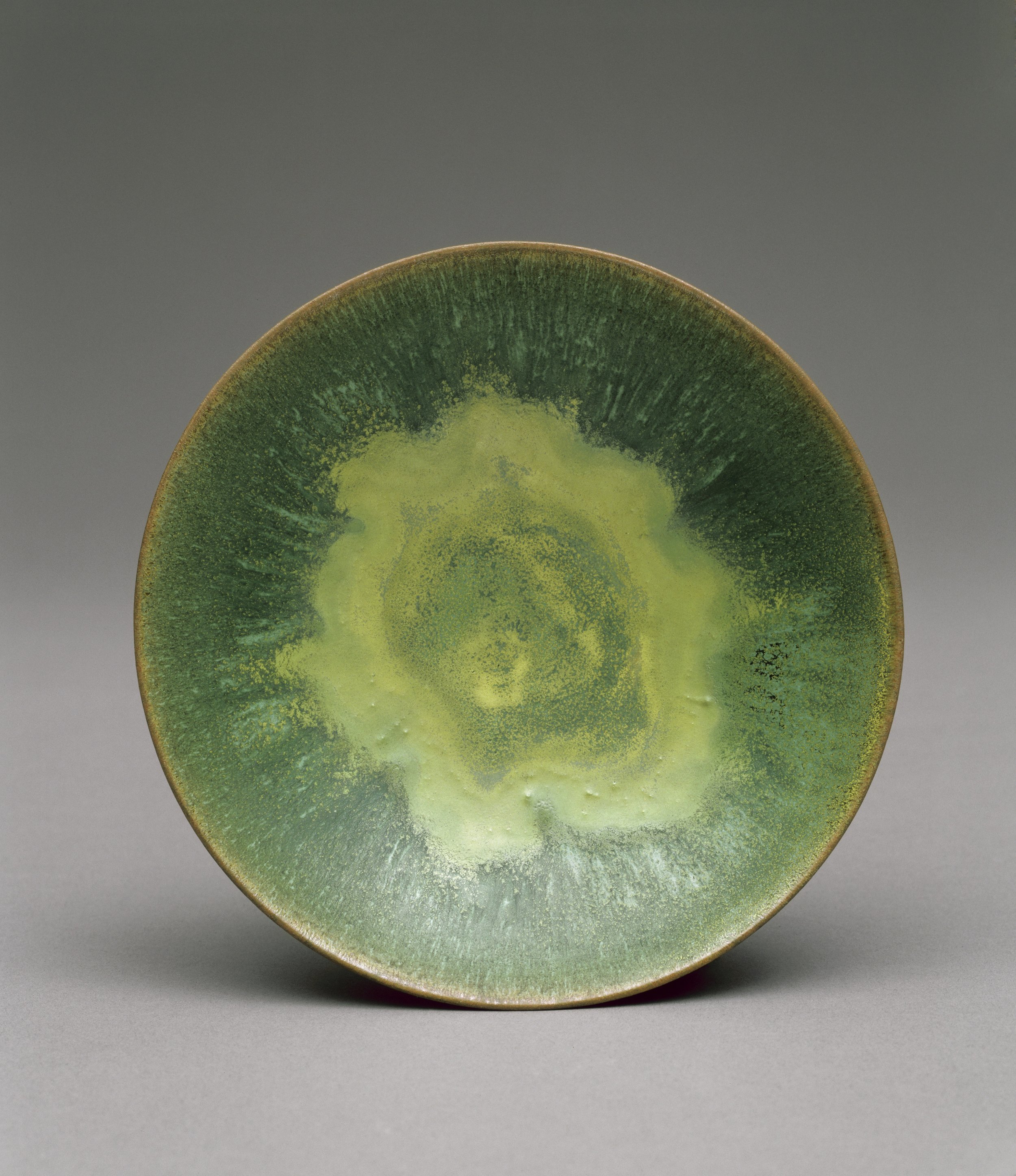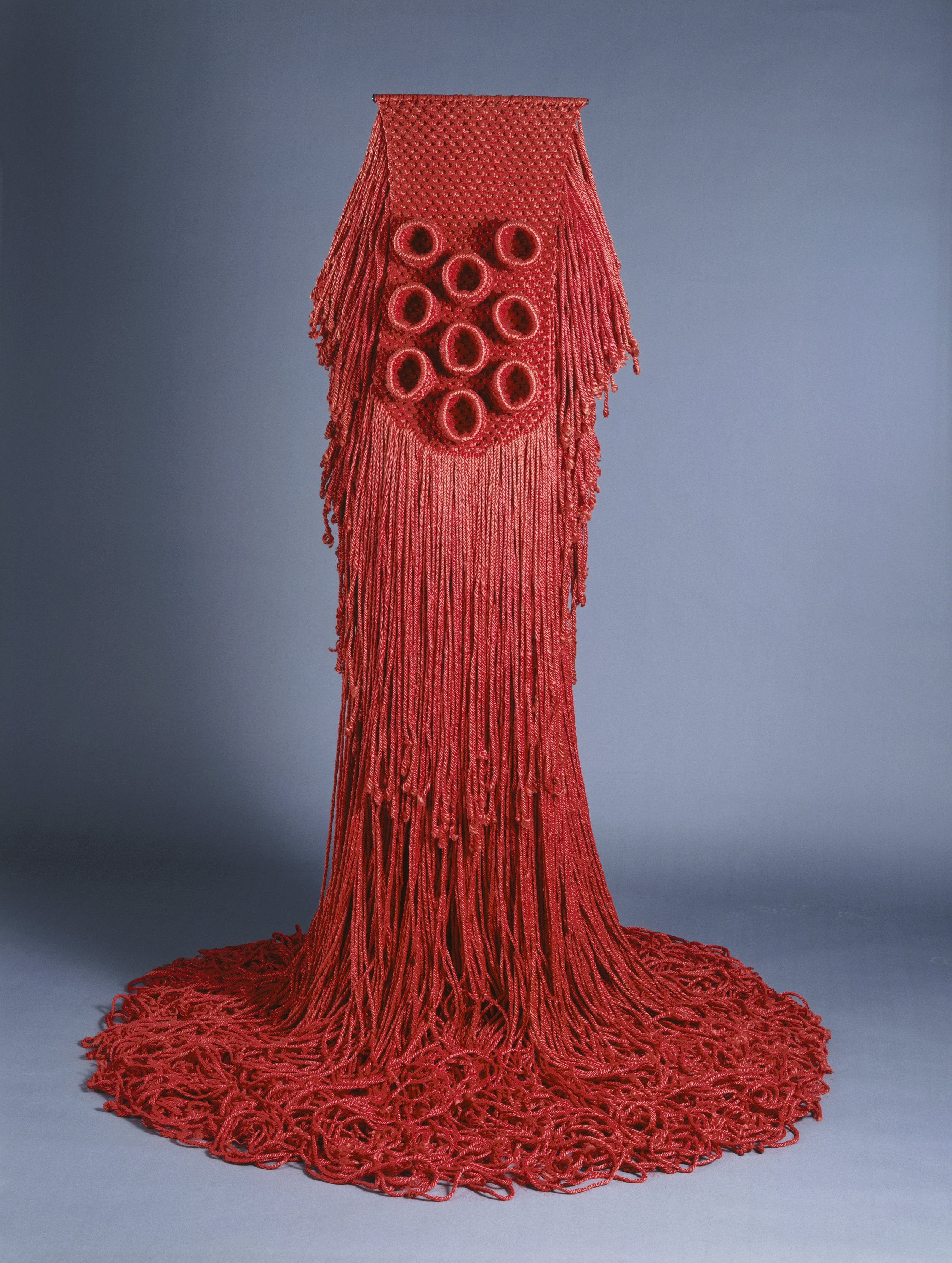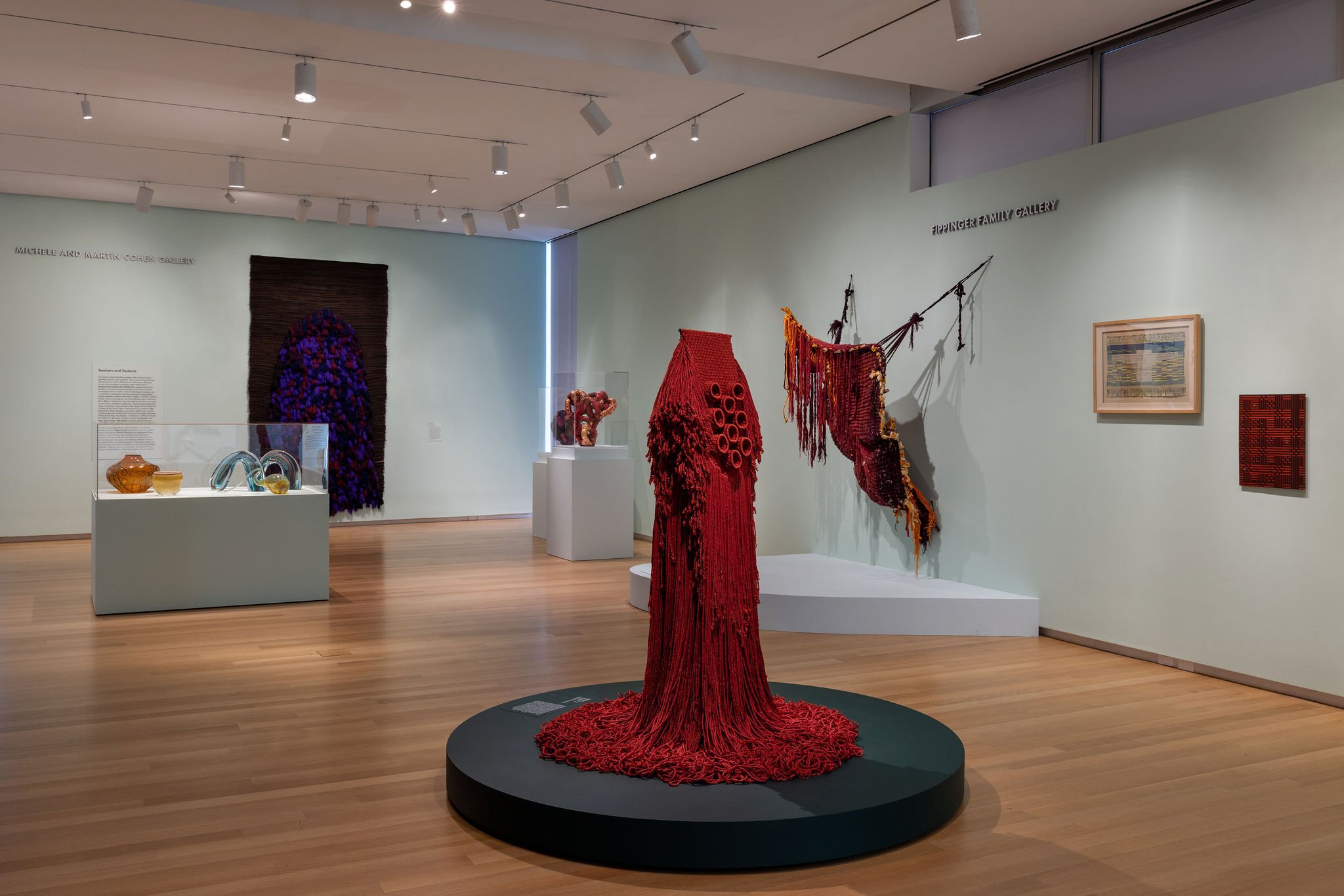Camille Claudel : Retrospective
Visitors at the Camille Claudel exhibition at the Getty Center. Image courtesy of the J. Paul Getty Trust
LOS ANGELES — The J. Paul Getty Museum presents Camille Claudel, an exhibition showcasing nearly 60 sculptures by one of the most daring and visionary artists of the late 19th century. On view at the Getty Center from April 2 to July 21, 2024, the exhibition seeks to reevaluate Claudel’s work and affirm her legacy within a more complex genealogy of modernism.
A trailblazing artist working in France in the late 19th and early 20th centuries, Claudel defied the social expectations of her time to create forceful sculptures of the human form. Her innovative artworks treat the universal themes of childhood, old age, love, and loss with an expressive intensity in a variety of genres, materials, and scales.
Camille Claudel working on her Vertumnus and Pomona marble group, about 1903 Photo: Collection Gregoire / Bridgeman Images
“A pioneer for women artists of the time, in a short but extraordinary career, Claudel established herself as one of the most important sculptors of the late 19th and early 20th-century Europe,” says Timothy Potts, Maria Hummer-Tuttle and Robert Tuttle Director of the Getty Museum. “Revered in France, and now widely sought after by museums around the world, her deeply moving images of the human body are one of the high points of romantic sculpture in Europe, and I am sure will be greatly admired by our visitors and especially the artist community.”
Claudel’s career has often been interpreted through her dramatic personal life, which involved a complicated relationship with her mentor, Auguste Rodin, and mental health issues resulting in a 30-year confinement in a psychiatric institution. While French collectors and critics immediately recognized Claudel’s talent, her art remains little known outside of France.
Organized chronologically and thematically, the exhibition invites visitors to experience a diverse array of sculptures Claudel created during her career and many of the masterpieces that earned her much success.
Young Roman, 1882/1883–1887 Camille Claudel (French, 1864–1943) Painted plaster The Art Institute of Chicago, Through prior bequest of Joseph Winterbotham; purchased with funds provided by an anonymous donor, Anne Searle Bent, and Celia and David Hilliard, 2022.1438 EX.2024.1.14
“Claudel excelled at capturing the likeness of her subjects, depicting individuals at every stage of life with powerful emotion and empathy,” says Anne-Lise Desmas, senior curator of sculpture and decorative arts at the J. Paul Getty Museum. “The support and success she experienced with collectors, fellow artists, and journalists during a time when few women artists were widely regarded is testimony to her rare talent and ceaseless creativity.”




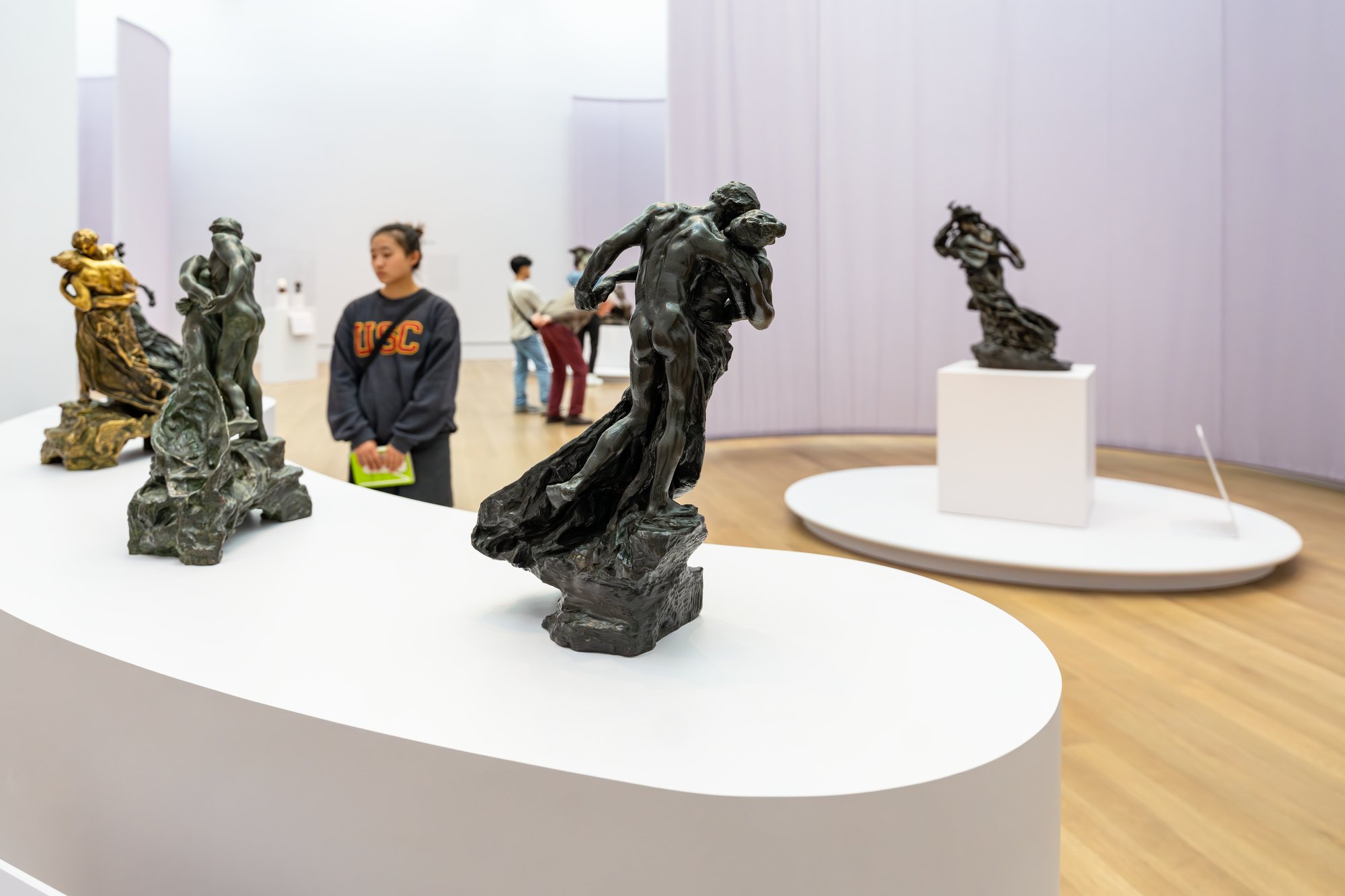
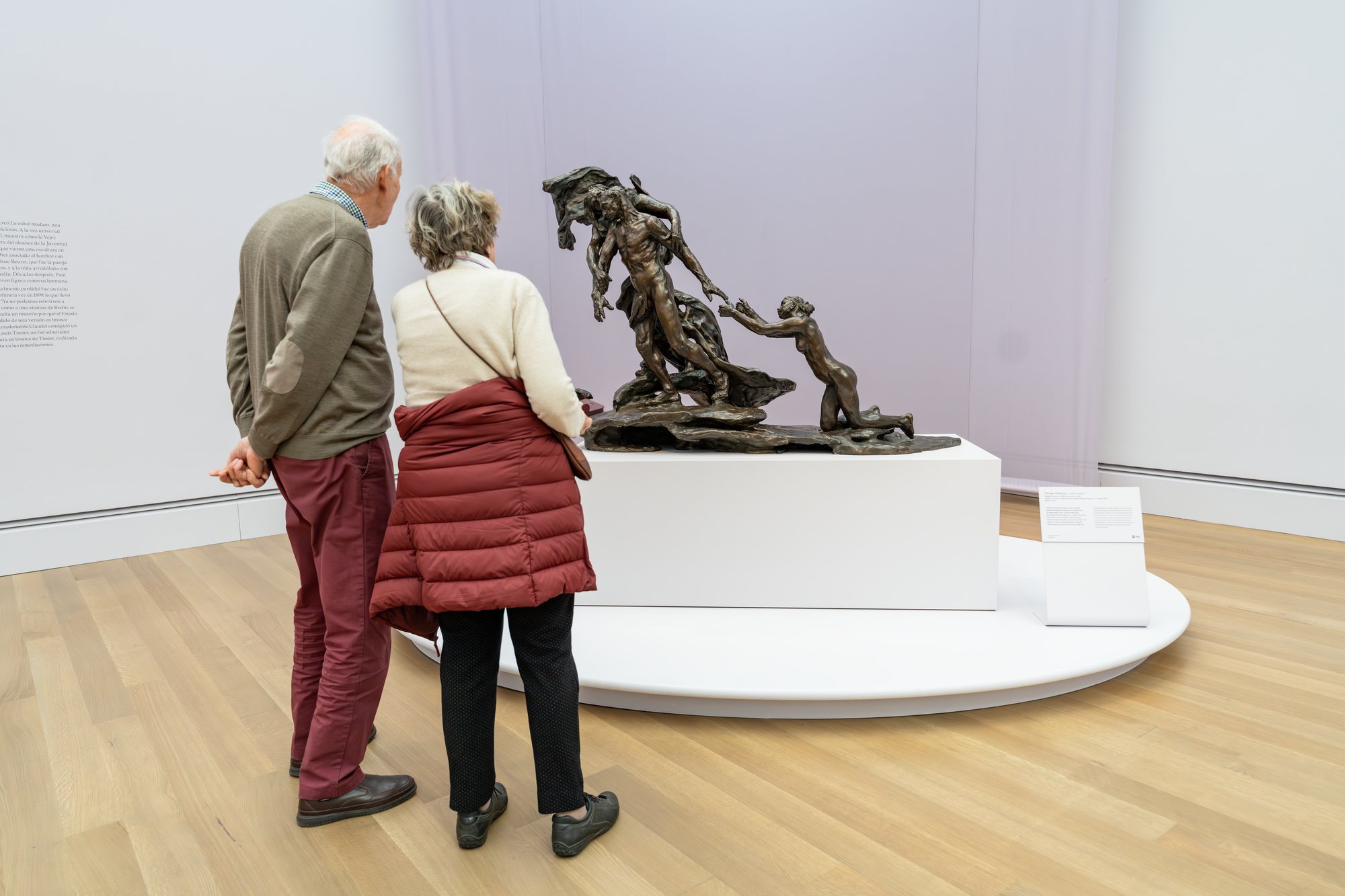
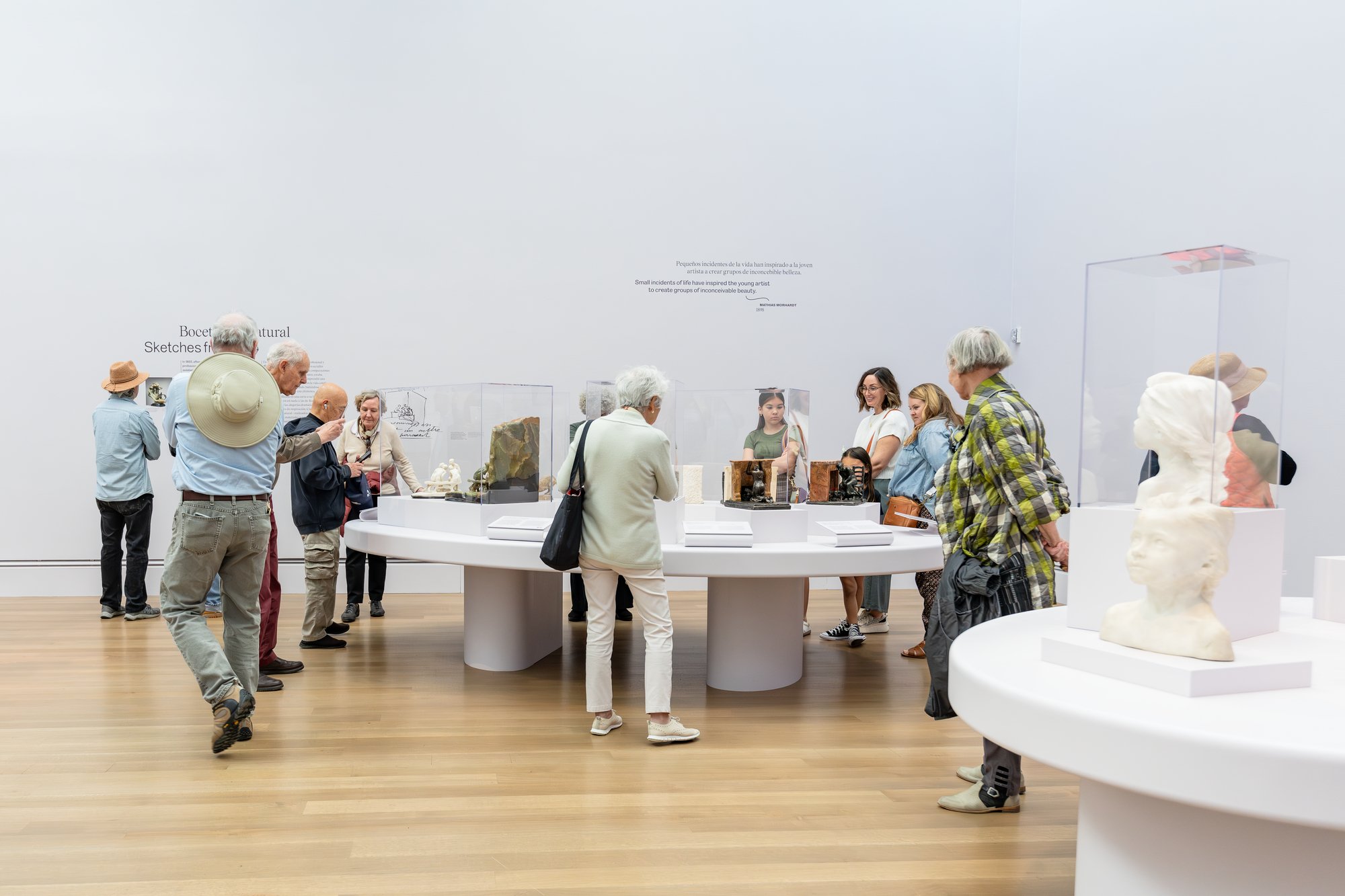

Visitors at the Camille Claudel exhibition at the Getty Center. Image courtesy of the J. Paul
Getty Trust
Claudel impressed critics with compositions that pushed the boundaries, such as The Waltz—a dynamic scene of two lovers surrendering to a dance. The first iteration Claudel created of the sculpture is on view—a unique bronze cast with complex, openwork draperies or “veils” swirling behind the figures. In response to demand from collectors, Claudel produced several inventive versions of the couple at a smaller scale, including a few bronzes which is on view to juxtapose their varied patina effects with brown, green, and gilded surfaces.
Another masterpiece in the exhibition is Age of Maturity, on loan from the Musée d’Orsay. One of her most ambitious sculptures, the three large figures depict life’s tragic journey with Old Age leading Middle Age forward, beyond the grasp of a kneeling, abandoned Youth. When it was exhibited, a critic declared, “We can no longer call Mademoiselle Claudel a student of Rodin; she is a rival.”
Crouching Woman, about 1884–1885 Camille Claudel (French, 1864–1943) Patinated plaster Musée Camille Claudel, Nogent-sur-SeinePhoto: Marco Illuminati EX.2024.1.10
When Claudel embarked on a series of compositions inspired by everyday life, she “created a new art,” as her biographer and art critic Mathias Morhardt noted with amazement. Smaller in scale and often featuring novel materials, these works focus on the intimacy, poetry, and humanity of lived experience. The most famous is The Chatterboxes, which depicts a group of nude women seated on benches, leaning forward to listen as one woman whispers a secret. The Musée Rodin version, rendered in green marble onyx, is reunited with another variation in white marble for the first time. Another compelling example is Fireside Dream, depicting an intimate scene of a woman sitting by a fireplace. Produced in marble and bronze, the sculpture was Claudel’s most reproduced composition: three versions is on display, including one conceived as a nightlight, with a red light bulb mimicking the fire.
In the last decade of her career, Claudel experienced physical, mental, and financial problems. However, she continued to participate in exhibitions, receive commissions, and create compelling works, including powerful Greek mythological scenes like Wounded Niobid and Perseus and the Gorgon. Commissioned by her patron Countess de Maigret, Claudel incorporated her own likeness in the face of Medusa for Perseus and the Gorgon.
Torso of a Crouching Woman, modeled about 1884–1885, cast about 1913 Camille Claudel (French, 1864–1943) Bronze Getty Museum 2018.32
Claudel later became the subject of numerous books, films, and exhibitions. Still, fewer than 10 of her sculptures reside in U.S. museums. Getty’s recently acquired Torso of a Crouching Woman is also on view, a work created during Claudel’s years in Rodin’s studio, highlighting the important role she played as collaborator and muse of the artist. Young Roman, acquired by the Art Institute of Chicago, is also displayed and is a great example of Claudel’s art of portraiture, a genre in which she excelled at a young age.
The exhibition features a hands-on touch experience with reproductions of one of the feet of the Torso of a Crouching Woman in various materials Claudel used in her practice. Additional components of the exhibition include murals of Claudel based on historic photographs and a video about the Musée Camille Claudel in Nogent-sur-Seine.
Vertumnus and Pomona, 1905 Camille Claudel (French, 1864–1943) Marble on a red marble plinth Musée Rodin, Paris Image © Musée Rodin, Photo: Christian Baraja EX.2024.1.32
Camille Claudel is co-curated by Anne-Lise Desmas, senior curator of sculpture and decorative arts at the Getty Museum, and Emerson Bowyer, Searle curator of painting and sculpture of Europe at the Art Institute of Chicago. The exhibition was first on view in Chicago from October 7, 2023 to February 19, 2024.
Complementing the exhibition is a catalogue co-authored by Desmas and Bowyer, with essays that explore the many facets of Claudel’s life and work, along with commentary by sculptor Kiki Smith. Getty hosted an opening day conversation at the Getty Center on April 2 at 2pm with co-curators Desmas and Bowyer, and Musée Camille Claudel director, Cécile Bertran.
The Getty Museum partnered with The Culture List, Inc. to present two immersive six-week art classes for aging seniors at Annenberg GenSpace in Koreatown. Which was led by teaching artist Silvi Naci from the Feminist Center for Creative Work; students considered form, materiality, and the human body in transformation, movement, and gesture through hands-on activities.
At Getty, the exhibition is generously supported by Anissa and Paul John Balson II in honor of Dr. Paul M. Balson, along with City National Bank.
For more information about this exhibition and others at the Getty, please see their site here. The Getty can also be found on Instagram, X, Facebook, and TikTok.
Gordon Parks
Gordon Parks, Mr. and Mrs. Albert Thornton, Mobile, Alabama, 1956 PHOTO archival pigment print 50"×50"(127cm×127cm), paper No. 91533.02 ©The Gordon Parks Foundation, courtesy Pace Gallery
Los Angeles – Pace is pleased to present an exhibition of work by Gordon Parks at its Los Angeles gallery, which opened on July 12 and will be on view until August 30. This show—organized by Pace’s Curatorial Director Kimberly Drew—marks the gallery’s first solo presentation of the artist’s work as part of its ongoing partnership with the Gordon Parks Foundation. The exhibition will be complemented by a guided meditation event at the gallery led by teacher, writer, and speaker Manoj Dias from 12 to 1 p.m. on July 13 and a celebratory public opening from 6 to 8 p.m. that evening.
A photographer, filmmaker, composer, and writer, Parks was one of the most influential artists of the 20th century, describing himself as “an objective reporter with a subjective heart.” Born in segregated Fort Scott, Kansas in 1912, he was first drawn to photography as a young man when he encountered magazine images of migrant workers produced by the Farm Security Administration (FSA). Though he never received formal photographic training, he would go on to create a body of work documenting American society and culture from the 1940s to the 2000s, focusing in on race relations, poverty, civil rights, and urban life.
“I saw that the camera could be a weapon against poverty, against racism, against all sorts of social wrongs,” Parks once said. “I knew at that point I had to have a camera.”
Gordon Parks 1201 South La Brea Avenue, Los Angeles, CA 90019 July 12–August 30, 2024 Photography courtesy Pace Gallery
Following his early work with government agencies—including the FSA and the Office of War Information (OWI)— and the Standard Oil Company, he became the first Black staff photographer for Life magazine in the late 1940s. Covering social issues, fashion, entertainment, and sports, Parks captured iconic images of Muhammad Ali, Malcolm X, Duke Ellington, Adam Clayton Powell, Jr., Stokely Carmichael, and others during his two decades at the publication.
The first exhibition dedicated to Parks’s work to be mounted in LA since a 2019 presentation of his Flávio da Silva series at the Getty, Pace’s upcoming show will bring together some 40 photographs spanning four decades of his career, from the early 1940s to the mid 1980s. Organized thematically, these works reflect the empathy and care with which he approached image making and storytelling, creating nuanced, intimate portraits of his subjects’ interior lives and their private spaces as part of that practice.







Gordon Parks 1201 South La Brea Avenue, Los Angeles, CA 90019 July 12–August 30, 2024 Photography courtesy Pace Gallery
Highlights in the show include American Gothic, Washington D.C. (1942), an iconic image of Ella Watson, a government employee at the FSA, who poses with a mop and broom against an American flag in the background; Baptism, Chicago, Illinois (1953), one of several photographs on view that speak to Parks’s interest in documenting worship and spirituality within Black communities; and a close-up portrait of Ali from 1966. The exhibition will also include selections from Parks’s Segregation Story—a series of more than 70 color photographs of Black life in segregated America that he created in 1956—as well as a video installation of his short film Diary of a Harlem Family (1967).
This exhibition follows past collaborations between Pace and the Gordon Parks Foundation, including the gallery’s presentation of the artist’s work in several recent group shows—Diamonds on the Soles of Her Shoes, an online exhibition in 2020, and Studio to Stage in New York in 2022—and on its booth at Frieze LA in 2024. Located in Pleasantville, New York, the Gordon Parks Foundation preserves the work of the artist, making it available to the public through exhibitions, publications, and programs. The foundation—which Parks himself cofounded in 2006— supports artistic and educational activities that advance what he described as "the common search for a better life and a better world."
Gordon Parks 1201 South La Brea Avenue, Los Angeles, CA 90019 July 12–August 30, 2024 Photography courtesy Pace Gallery
In recent years, major exhibitions of Parks’s work have been presented at the Museum of Modern Art and Jack Shainman Gallery in New York; the Carnegie Museum of Art in Pittsburgh; the Art Institute of Chicago; the Getty Museum in LA; the National Gallery of Art in Washington, D.C.; and other institutions around the world.
The Gordon Parks Foundation supports and produces artistic and educational initiatives that advance the legacy and vision of Gordon Parks—recognized as the most significant American photographer of the 20th century, as well as a writer, musician, and filmmaker, who used the arts to further “the common search for a better life and a better world.” Through exhibitions, publications, and public programs organized in collaboration with national and international institutions at its exhibition space in Pleasantville, New York, the Foundation provides access to, and supports understanding of, the work and contributions of Gordon Parks for artists, scholars, students, and the public. Through its year-round educational programming and annual grant-making initiatives, the Foundation champions current and future generations of artists and humanitarians whose work carries on Parks’s legacy. https://www.gordonparksfoundation.org
Gordon Parks 1201 South La Brea Avenue, Los Angeles, CA 90019 July 12–August 30, 2024 Photography courtesy Pace Gallery
In a career that spanned more than fifty years, photographer, filmmaker, musician, and author Gordon Parks (American, 1912–2006) created a groundbreaking body of work that made him one of the most influential artists of the twentieth century. Beginning in the 1940s, he documented American life and culture with a focus on social justice, race relations, the civil rights movement, and the African American experience. Born into poverty and segregation in Fort Scott, Kansas, Parks was drawn to photography as a young man. Despite his lack of professional training, he won a Julius Rosenwald Fellowship in 1942; this led to a position with the photography section of the Farm Security Administration (FSA) in Washington, D.C., and, later, the Office of War Information (OWI). By the mid-1940s, he was working as a freelance photographer for publications such as Vogue, Glamour, and Ebony. Parks was hired in 1948 as a staff photographer for Life magazine, where more than two decades he created some of his most notable work. In 1969 he became the first African American to write and direct a major feature film, The Learning Tree, based on his semiautobiographical novel. His next directorial endeavor, Shaft (1971) helped define a genre then referred to as Blaxploitation films. Parks continued photographing, publishing, and composing until his death in 2006.
Gordon Parks 1201 South La Brea Avenue, Los Angeles, CA 90019 July 12–August 30, 2024 Photography courtesy Pace Gallery
Pace is a leading international art gallery representing some of the most influential contemporary artists and estates from the past century, holding decades-long relationships with Alexander Calder, Jean Dubuffet, Barbara Hepworth, Agnes Martin, Louise Nevelson, and Mark Rothko. Pace enjoys a unique U.S. heritage spanning East and West coasts through its early support of artists central to the Abstract Expressionist and Light and Space movements.
Since its founding by Arne Glimcher in 1960, Pace has developed a distinguished legacy as an artist-first gallery that mounts seminal historical and contemporary exhibitions. Under the current leadership of CEO Marc Glimcher, Pace continues to support its artists and share their visionary work with audiences worldwide by remaining at the forefront of innovation. Now in its seventh decade, the gallery advances its mission through a robust global program— comprising exhibitions, artist projects, public installations, institutional collaborations, performances, and interdisciplinary projects. Pace has a legacy in art bookmaking and has published over five hundred titles in close collaboration with artists, with a focus on original scholarship and on introducing new voices to the art historical canon.
Today, Pace has seven locations worldwide, including European footholds in London and Geneva as well as Berlin, where the gallery established an office in 2023. Pace maintains two galleries in New York—its headquarters at 540 West 25th Street, which welcomed almost 120,000 visitors and programmed 20 shows in its first six months, and an adjacent 8,000 sq. ft. exhibition space at 510 West 25th Street. Pace’s long and pioneering history in California includes a gallery in Palo Alto, which was open from 2016 to 2022. Pace’s engagement with Silicon Valley’s technology industry has had a lasting impact on the gallery at a global level, accelerating its initiatives connecting art and technology as well as its work with experiential artists. Pace consolidated its West Coast activity through its flagship in Los Angeles, which opened in 2022. Pace was one of the first international galleries to establish outposts in Asia, where it operates permanent gallery spaces in Hong Kong and Seoul, along with an office and viewing room in Beijing. In 2024, Pace will open its first gallery space in Japan in Tokyo’s new Azabudai Hills development.
The exhibition opened on July 12– and will be on view until August 30, 2024, at Pace’s Los Angeles location at 1201 South La Brea Avenue. For more information about this exhibition and others, please visit the Pace Gallery’s website here. Pace Gallery can be found on Instagram and Artsy, too.
King Houndekpinkou: Six Prayers
courtesy of Hayden Phipps/Southern Guild
Southern Guild is pleased to present Six Prayers by Franco-Beninois artist King Houndekpinkou, a series of six large-scale ceramic sculptures, opened on June the 6th and will close on August 22, 2024. Known for his distinctive vocabulary of shape, texture and colour, Houndekpinkou’s work revels in unexpected hybridities, the product of a diasporic world-view that resists cultural borders. He has developed an explorative practice that blends tradition and ancient spirituality with modern techniques, drawing heavily from Japanese and West African culture.
Born in Montreuil, France to Beninese parents in 1987, Houndekpinkou grew up in the suburbs of Paris. His adolescence was shaped by his discovery of Japanese pop culture, anime and video games. A trip to Japan in 2012 awakened an interest in the country’s ancestral pottery, whose ceremonial approach to craft and Shintoism resonated strongly with the animism of Beninese Voudou.
King Houndekpinkou, The Widow of Light: Bruised to the Bone, 2024 courtesy of Hayden Phipps/Southern Guild
Houndekpinkou’s guiding philosophy, the interdependence and divine nature inherent in all aspects of life, is evidenced in his approach to this body of work. Through alchemical processes of clay-making and new forms of magic, sacred geometries meet fractals from the future. He juxtaposes smooth against rough, matt against gloss, rounded shapes against angular forms, spikes that repel next to tentacles that reach out and attract. That draw in as they rebuff.
Houndekpinkou’s work reflects a creolisation of multiple knowledge systems and influences known as syncretism – the fusion of different traditions, beliefs or practices into a new, cohesive whole. It often occurs when diverse cultural or religious systems come into contact and interact, leading to the integration of elements from each tradition.
King Houndekpinkou, Blue Cavilux: Excavated From the Wonders of the Underworld, 2024 courtesy of Hayden Phipps/Southern Guild
Produced over eight weeks while participating in the GUILD Residency in Cape Town, Six Prayers fuses a variety of traditions with future possibilities to offer new myths to new gods, complete with their own ritualistic objects. Houndekpinkou offers these six vessels as super realities in the same multiverse. Having learned the meditative art of wheel-thrown ceramics under master potter Toshiaki Shibuta in Bizen – one of the six ancient kilns of Japan known as the Roku Koyō – he infuses a deep spiritual intent into his process, creating vessel forms that he then stacks and clusters into sculptural totems in which function dissolves into dysfunction.



courtesy of Hayden Phipps/Southern Guild
Houndekpinkou’s use of texture is masterful and unexpected. He self-theorises his work in the same manner that he theorises mythical realms for his sculptures. “What really gives life to a piece is its texture. The texture makes the colour come alive. I want to make pieces that look like they’re living, moving, and breathing.” Clay forms are curved into smooth precision, only to be disrupted by shocks of colour, sharp stalks, and crackling glazes. He scrapes into levelled surfaces, making carvings and incisions. Tiny, coral-like fingers reach out of the cavernous body of a large vessel of royal, marbled blues. Glazes and tints are made to specific, customised formulations. Potions to activate and energise.
The poly-hued vessel The New Deities’ Platter: Enough for All the Gods to Eat embodies the artist’s textural ambitions. A tentacle-covered bowl provides a foundation for the other vessels affixed to it – a vessel comprised of many others. Three-dimensional spindles rise into flat carvings that eventually relent into an even smoothness. As if to push the work to its point of overwhelm, its mid-section is laden with large, knobbly bulbs in a deep glossy glaze, the colour of rich earth. Polytheistic in form and concept, the work is a reference to offerings of food made to deities of no particular religion, its scale and textural range a comment on abundance. “There is enough food for all the gods to eat,” explains Houndekpinkou. “The pieces make me think of a fruit platter with berries, oranges and other fruit.”
King Houndekpinkou, Outer Space Gold Ritual Vessel: I Refused to Let You Down, 2024 courtesy of Hayden Phipps/Southern Guild
The ceramicist uses a number of painting techniques – brushing, spraying, drizzling – but a bulb syringe is responsible for his lavish drippings of paint, a recurring motif reminiscent of candle wax and libations splattered on ritual altars in Voudou. Some glazes crackle, promising undiscovered treasure. Some areas are treacly thick with tint, while others leave the clay naked and vulnerable. Teasing at biomimicry, spikes borrow their form from the natural world. Like thorns, they protect the vessel, allowing it to hold some of its beauty for itself.
Through his multi-textural vessels, King Houndekpinkou presents Six Prayers as contemporaneous alchemy, combining elements of science, pop culture, philosophy, mysticism, and myth.
Six Prayers by King Houndekpinkou opened on June the 6th and will conclude on August 22, 2024, and runs concurrently with Madoda: Let Us Now Praise Famous Men by Madoda Fani and Like Something Almost Being Said by Adam Birch.
For more information about King Houndekpinkou’s artwork, please visit him on Instagram here. Please visit here for information about the Southern Guild and King’s exhibition.
KEMI ONABULÉ : False Spring
Installation View: Kemi Onabulé False Spring June 19- August 24, 2024, Night Gallery EAST Photography courtesy the artist and Night Gallery, Los Angeles
Night Gallery is pleased to announce False Spring, an exhibition of new paintings by Kemi Onabulé, which opened on June 19 and will be on view until August 31, 2024. This is the artist’s debut solo exhibition in the United States and follows her participation in the group show Shrubs, 2022.
Show Me Your Future, I'll Show You My Past, 2024 oil on canvas 66 7/8 x 51 1/8 in (170 x 130 cm)
Throughout her practice, Onabulé is known for her humanoid figures who interact with her vivid, post-apocalyptic landscapes. While broadening her world-making environments, Onabulé takes direct reference from her lived experience in painting bodies in shades of brown as she undermines Western landscape tropes. Where predecessors flattened and exoticized the “Other,” and created endless sightlines to suggest unbounded colonial domination, Onabulé creates contained scenes that reflect the deep, psychic spaces of her figures.
Onabulé’s title derives from a line in Ernest Hemingway’s 1964 memoir A Moveable Feast: “When spring came, even the false spring, there were no problems except where to be happiest.” This “false spring,” and the winter weather that follows, mirrors the ups and downs of the writer’s life in interwar Paris. Onabulé’s “false spring” similarly references a summer that’s come too early, perhaps due to the climate crisis; our increasingly unstable seasons have warped our sense of promised time. The artist views such ecological vicissitudes through the prism of the body: She considers how it responds to shifting landscapes—and may respond to the lush, regenerative climates that arise after the world we know disappears.

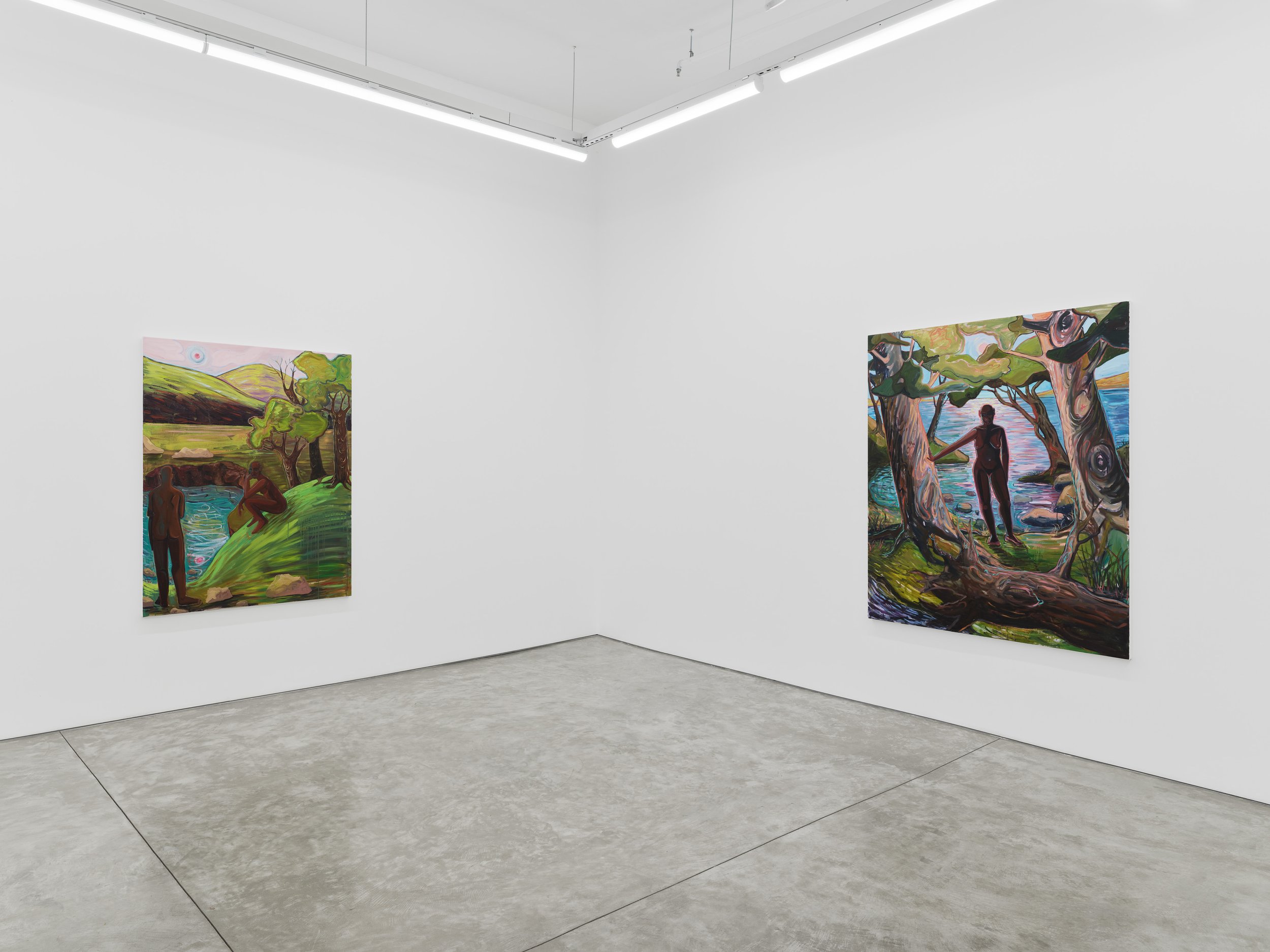


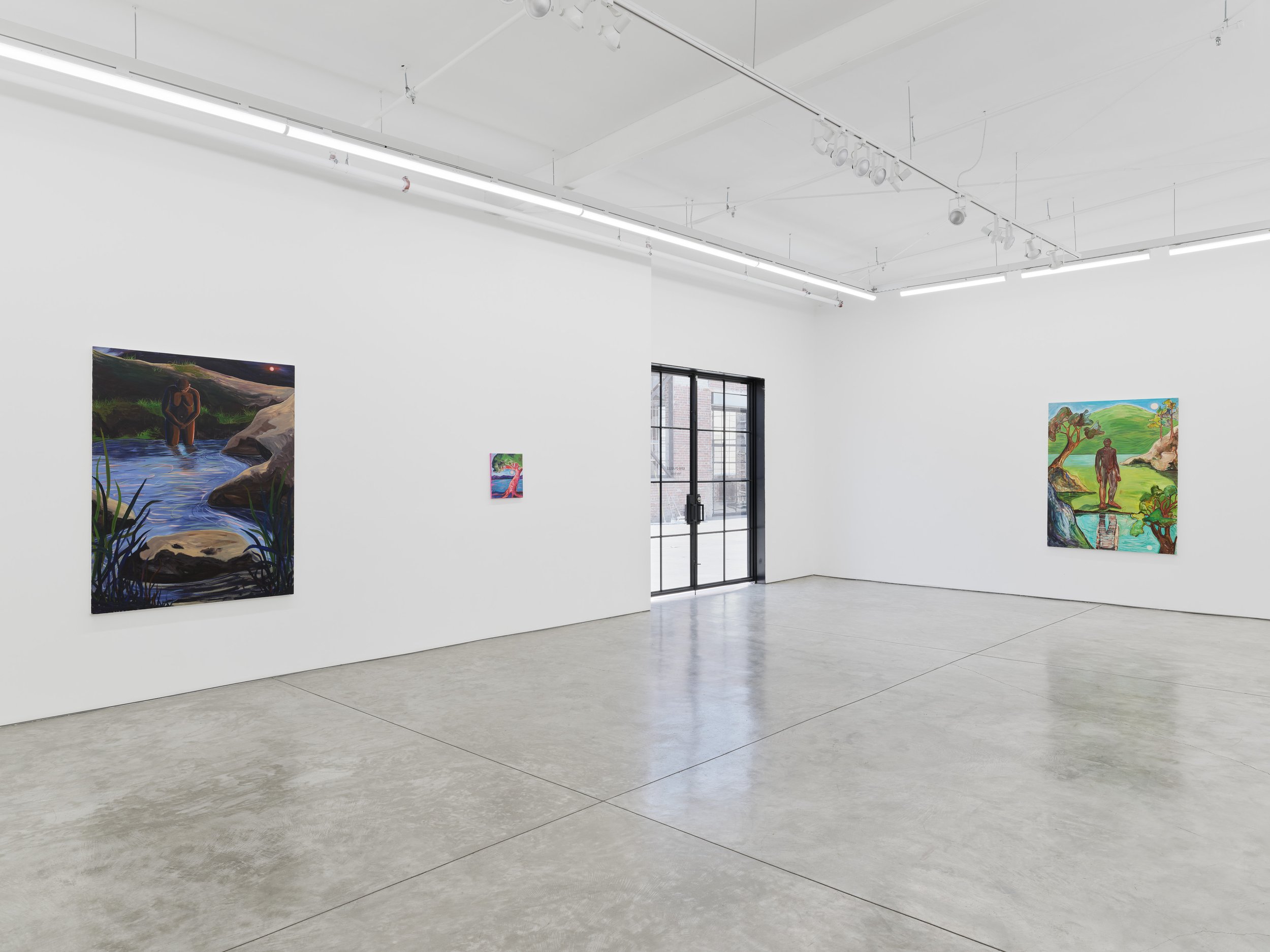



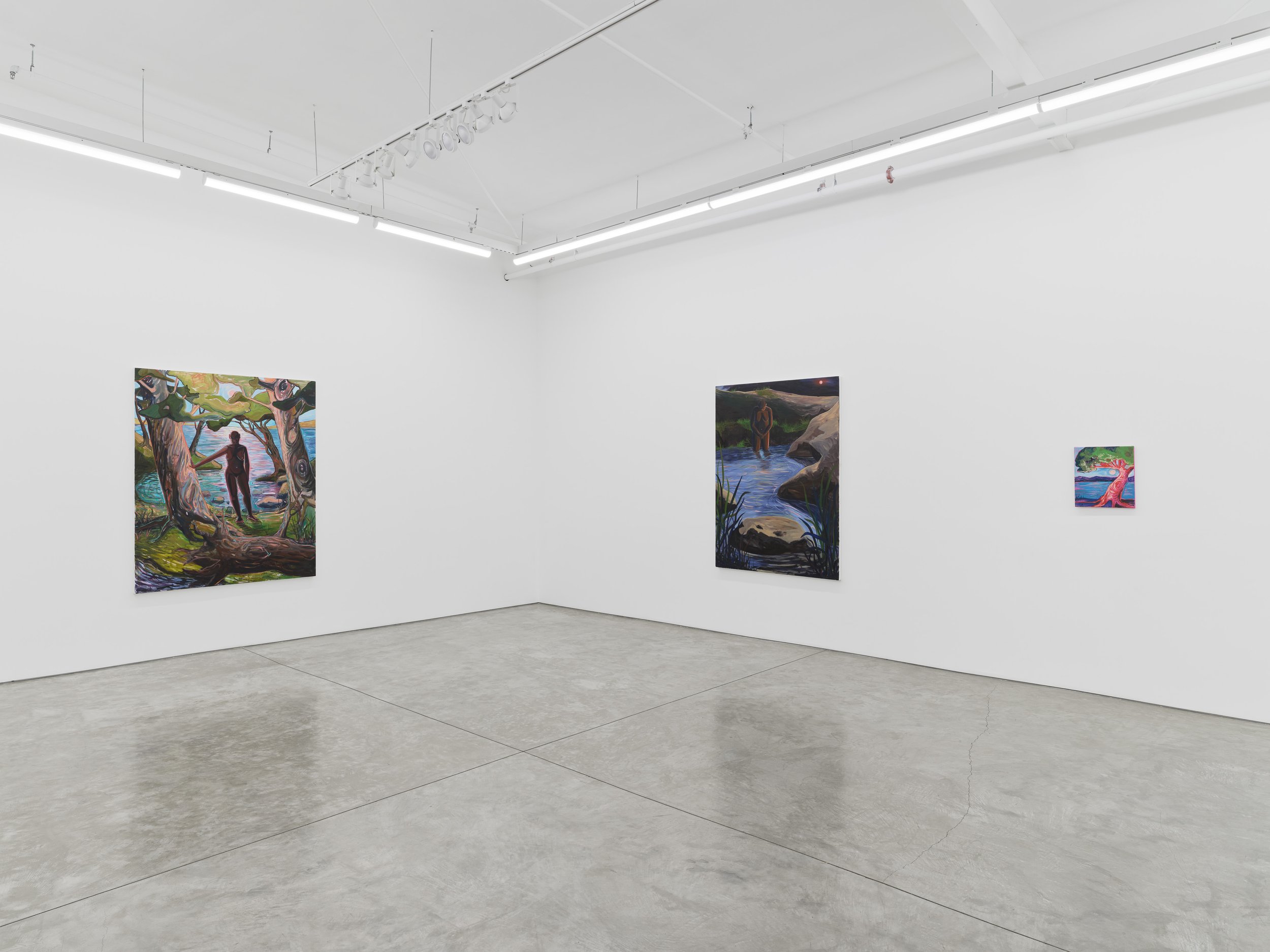


Installation View: Kemi Onabulé False Spring June 19- August 24, 2024, Night Gallery EAST Photography courtesy the artist and Night Gallery, Los Angeles
Onabulé’s figures wade or gaze into eddying waters as volumes of green streaks and drips suggest the dynamic lands, grasses, and tropical settings around them. Lost Love and The Wish to Be Forgiven (both 2024) feature pairs of figures who reveal or conceal themselves in bright or twilit clearings. In the title painting, False Spring (2024), no figure appears. Instead, bare tree limbs arc across a desolate landscape that evokes the wreckage of California forest fires. In the distance, pastel waters reflect a luminous moon. Throughout these paintings, the artist considers what it means to have a witness, whether human or celestial.
Disparate art histories and mythologies inform these scenes. Onabulé refutes Paul Gaugin’s paternalistic visions of Tahiti while embracing the surreal simplicities of Noah Davis. Her dual heritage also shapes the complex relationship between her figures and their surroundings Nigerian tradition centers and anthropomorphizes nature; forests have eyes and the land has a consciousness of its own. Greek tradition, on the other hand, focuses on humans while blurring the boundaries of form: Gods turn themselves into animals, while Narcissus, so seduced by his own aquatic reflection that he falls into a pool, ultimately sprouts into a flower.
Installation View: Kemi Onabulé False Spring June 19- August 24, 2024, Night Gallery EAST Photography courtesy the artist and Night Gallery, Los Angeles
Translation and transformation are similarly key to Onabulé’s process. The artist begins each work with drawing. She uses pencil, watercolor, oil stick, and oil paint on paper to solidify her image and determine the ideal texture of her brushstrokes. She then uses oil paint to recreate these energies and heterogeneous marks on canvas. The artist scratches back into wet oil to give further texture to her surfaces.
Through such contrivance, invention, and engagement with the fraught past, Onabulé discovers new forms and ways of working that are both generative and true. Trees fall, and darkness descends around her figures. A green, new world springs up around them. No matter the setting, they remain sturdy and strong.
Kemi Onabulé (b. 1995, London, United Kingdom) has had solo exhibitions at Sim Smith, London, United Kingdom. This is Onabulé’s first solo exhibition in the US. She has participated in group exhibitions at Capsule, Venice, Italy; Night Gallery, Los Angeles, CA; Bode Projects, Berlin, Germany; and numerous galleries in the United Kingdom. In 2021, she was shortlisted for the prestigious Jackson's Painting Prize. The artist lives and works in London and is represented by Sim Smith.
For more information about Kemi's artwork, please visit her site, and for more information about current and future exhibitions, please visit their site here.
Donald Judd :Wall Works
Donald Judd, Basel, Installation View, 2024 © Judd Foundation/Artists Rights Society (ARS), New York Photo: Maris Hutchinson Courtesy Gagosian
Material, space, and color are the main aspects of visual art. Everyone knows that there is material that can be picked up and sold, but no one sees space and color.
—Donald Judd
BASEL,—Gagosian is pleased to announce an exhibition of works by Donald Judd opened at the Basel gallery on June 10. Ten single-unit, wall-mounted works made by the artist in Switzerland between 1987 and 1991 will be on view. Each work measures 25 × 100 × 25 centimeters (approximately 10 × 39 × 10 inches) and is fabricated in Judd’s signature mediums: anodized aluminum and plexiglass sheets in a range of opacities and colors, from amber and chartreuse to black.
DONALD JUDD Untitled, 1991 Clear and turquoise anodized aluminum with blue over red plexiglass 9 7/8 x 39 3/8 x 9 7/8 inches (25 x 100 x 25 cm) © Judd Foundation/Artists Rights Society (ARS), New York Photo: Maris Hutchinson Courtesy Gagosian
Judd’s radical art making and thinking helped shape the look of the late twentieth century and continues to influence artists, architects, and designers worldwide. He has exercised a transformative impact on the ways in which both art objects and practical designs are produced, exhibited, encountered, and used. Through his globally recognized visual work and his incisive critical and theoretical writing, Judd introduced an art that exists on its own determinedly physical terms, removed from notions of metaphor and illusion and about the here and now with no recourse to past narratives. Individually, each of his works delineates created interior space and the exterior space it occupies; there are no identical works within the group.
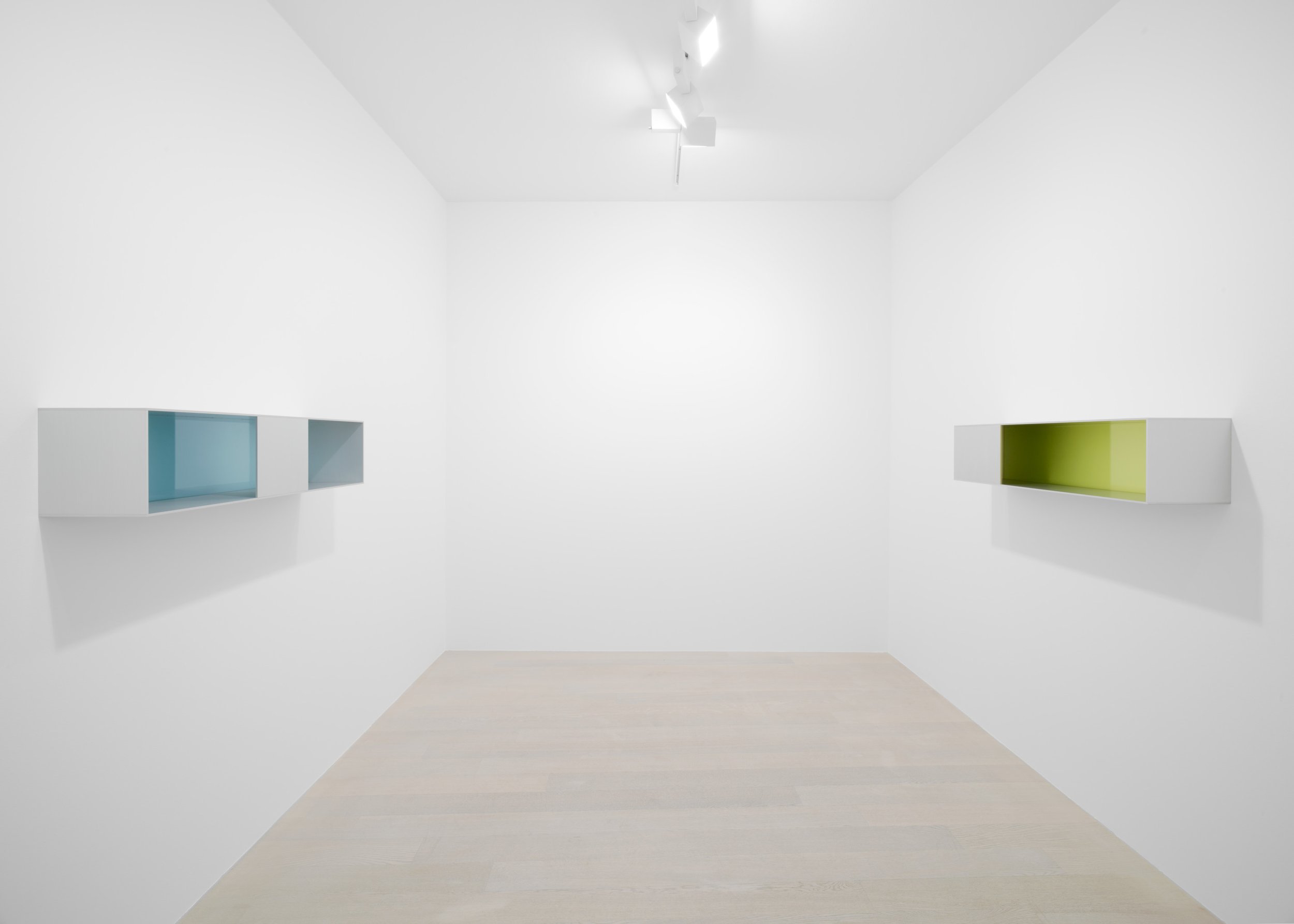

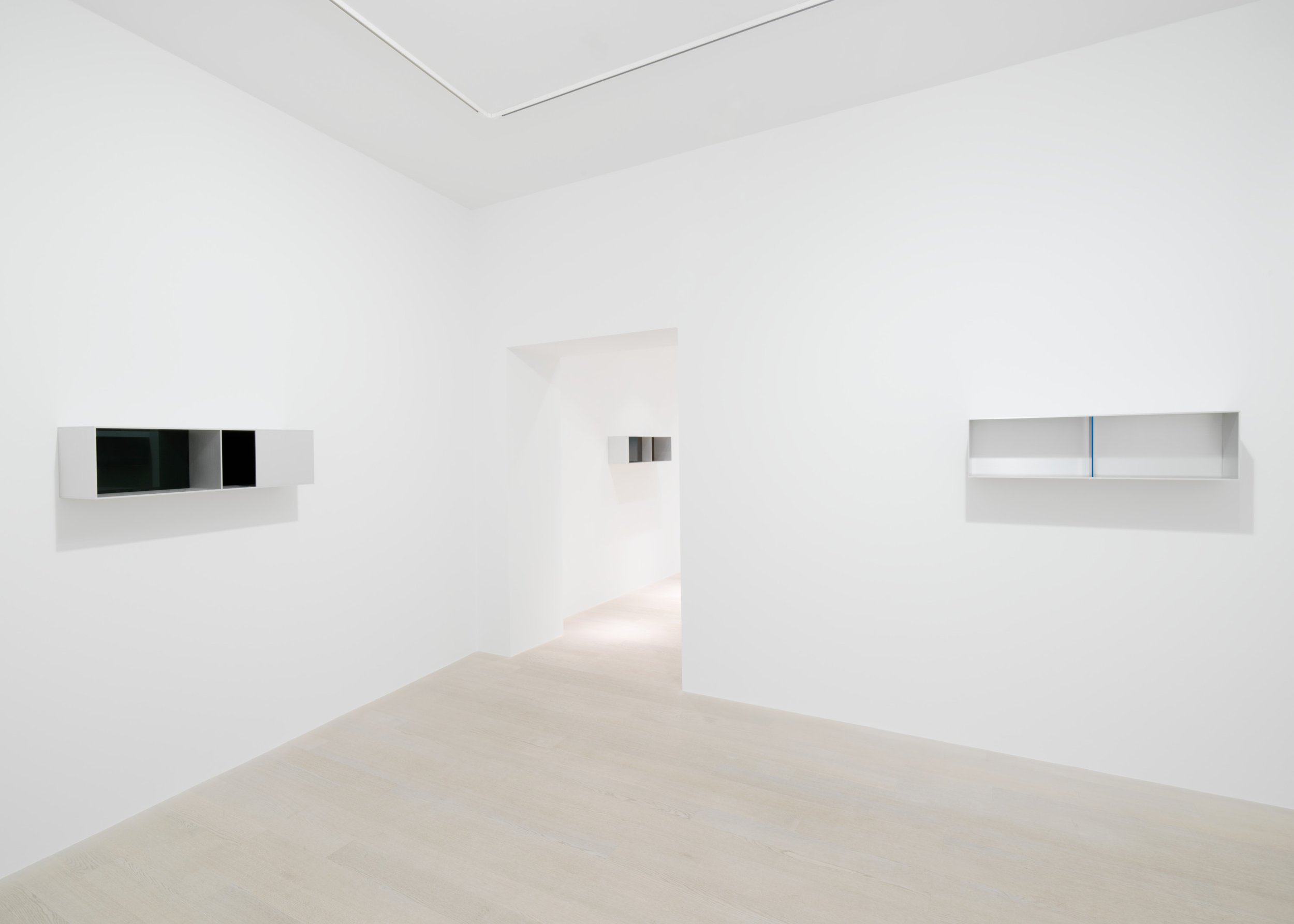

Donald Judd, Basel, Installation View, 2024 © Judd Foundation/Artists Rights Society (ARS), New York Photo: Maris Hutchinson Courtesy Gagosian
These precisely constructed works are defined by Judd’s interest in materials and color. Non- referential and self-contained, they emphasize the intrinsic qualities of their components and the relationships between part and whole. The uniform proportionality of their exteriors exists in relation to their interior divisions, as the matte sheen of aluminum contrasts with the glossy or translucent plexiglass sheets positioned on the works’ vertical surfaces closest to the wall. The compositions are bisected by aluminum sheets, with some works partitioned by aluminum planes on their front- facing surfaces. Orchestrating subtle and dramatic interplays of light, shadow, and color, the pieces investigate space, color, and existence—for Judd, the main concerns of art.
DONALD JUDD Untitled, 1991 Clear anodized aluminum with amber over yellow plexiglass 9 7/8 x 39 3/8 x 9 7/8 inches (25 x 100 x 25 cm) © Judd Foundation/Artists Rights Society (ARS), New York Photo: Maris Hutchinson Courtesy Gagosian
Judd spent significant time in Switzerland, and key exhibitions of his work were mounted there from 1969, including at Kunstmuseum Basel in 1976 and 2004. In 1987, he established Eichholteren, a home and studio on a lakeside site near Küssnacht-am-Rigi, remodeling its architecture through 1993.
DONALD JUDD Untitled, 1991, detail Clear and turquoise anodized aluminum 9 7/8 x 39 3/8 x 9 7/8 inches (25 x 100 x 25 cm) © Judd Foundation/Artists Rights Society (ARS), New York Photo: Maris Hutchinson Courtesy Gagosian
The exhibition in Basel coincides with the gallery’s participation in Art Basel (June 12–16), which includes the presentation of a historic large-scale work by Judd from 1970 in the Unlimited sector for monumental artworks. The untitled installation consists of five-foot-high galvanized iron panels that stand end to end on the floor to form a continuous band exactly eight inches from the surrounding walls. First shown by Leo Castelli in New York, the work’s configuration is both variable and directly related to its site, transforming the architectural space where it is installed.





Donald Judd, Basel, Installation View, 2024 © Judd Foundation/Artists Rights Society (ARS), New York Photo: Maris Hutchinson Courtesy Gagosian
Donald Judd was born in 1928 in Excelsior Springs, Missouri, and died in 1994 in New York. Collections include Kunstmuseum Basel; Kunstmuseum Bern; Museum Ludwig, Cologne, Germany; Centre Pompidou, Paris; Tate, London; Museum of Modern Art, New York; Solomon R. Guggenheim Museum, New York; National Gallery of Art, Washington, DC; San Francisco Museum of Modern Art; and Museum of Contemporary Art Tokyo. Exhibitions include the Whitney Museum of American Art, New York (1968 and 1988); Van Abbemuseum, Eindhoven, Netherlands (1970, traveled to Museum Folkwang, Essen, Germany; Kunstverein Hannover, Germany; and Whitechapel Art Gallery, London); National Gallery of Canada, Ottawa (1975); and Tate Modern, London (2004, traveled to Kunstsammlung Nordrhein Westfalen, Düsseldorf, Germany; and Kunstmuseum Basel). The Museum of Modern Art, New York, presented a major retrospective of Judd’s work in 2020–21. Judd established Judd Foundation in 1977 to preserve his art, spaces, libraries, and archives in New York and in Marfa, Texas. He founded the Chinati Foundation/La Fundación Chinati in 1986 for the permanent installation of his and his contemporaries’ large-scale works.
For more information about this exhibition and others presented by Gagosian please visit the gallery’s site here. The gallery can also be found on Pinterest, X, YouTube, Facebook, Instagram, and Artsy.
The Body as Matter: Giacometti Nauman Picasso




The Body as Matter: Giacometti Nauman Picasso, 2024, installation view Artwork © Succession Picasso/DACS, London 2024; © Succession Alberto Giacometti / DACS 2024; © 2024 Bruce Nauman / Artists Rights Society (ARS), New York and DACS Photo: Prudence Cuming Associates Ltd Courtesy Gagosian
On View from June 6, the Exhibition Is the First to Consider Sculpture by These Three Artists Together
LONDON, —Gagosian is pleased to announce The Body as Matter: Giacometti Nauman Picasso, an exhibition of sculpture by Alberto Giacometti (1901–1966), Bruce Nauman (b. 1941), and Pablo Picasso (1881–1973). Curated by Richard Calvocoressi, the exhibition is on view at the Grosvenor Hill Gallery from June 6 to July 26, 2024. The Exhibition Is the First to Consider Sculpture by These Three Artists Together
PABLO PICASSO La femme enceinte I, 1950, cast by Valsuani in 1951-53 Bronze 41 x 12 1/2 x 8 3/4 inches (104.1 x 31.8 x 22.2 cm) Edition of 3, one numbered cast and nos. 1/6 and 2/6 casting stamp "CIRE PERDUE C. VALSUANI" © Succession Picasso/DACS, London 2024 Photo: Rob McKeever Courtesy Gagosian
Radical investigations of the human body and how we perceive it characterize the distinct sculptural practices of Giacometti, Nauman, and Picasso, who are widely regarded as defining figures of their respective generations. From the modernist preoccupation with the fragmented or disintegrated body typical of Picasso’s and Giacometti’s work to the postmodern expansion of sculpture into a range of environmental and anti-monumental forms exemplified by Nauman’s, this is the first exhibition to juxtapose sculptures by these three artists. It features classic pieces by all three, including Picasso’s La femme enceinte I (1950) and Bras vertical (1961), Giacometti’s La jambe (1958) and Grande tête (1960), and Nauman’s Henry Moore Bound to Fail (1967/1970) and Model for Room with My Soul Left Out, Room That Does Not Care (1984).
PABLO PICASSO Tête de femme, 1951, cast 1955 Bronze 21 1/8 x 14 1/8 x 7 3/8 inches (53.7 x 35.9 x 18.7 cm) Edition of 4; one unnumbered cast and nos. 1/6, 2/6, and 3/6 © Succession Picasso/DACS, London 2024 Photo: Rob McKeever Courtesy Gagosian
A pioneer of Cubism best known for his paintings, drawings, and collages, Picasso produced numerous sculptures, which are among his most experimental works. He primarily sculpted in two distinct modes: modeling clay or plaster for casting into bronze, and constructing or assembling forms from discarded objects and cheap materials such as sheet metal, wood, and cardboard. In works of astonishing wit and originality, not to mention erotic suggestiveness, Picasso investigated means of manipulating mass and surface to incorporate multiple perspectives into a single head, limb, or figure.
ALBERTO GIACOMETTI Grande Tête, 1960 Patinated bronze 37 1/2 x 12 x 14 3/4 inches (95.3 x 30.4 x 36.1 cm) © Succession Alberto Giacometti / DACS 2024 Photo: Rob McKeever Courtesy Gagosian
In Paris in the 1920s Giacometti came under the influence of Surrealism, encouraging him to incorporate into his sculptures a sense of sexual violence or threat that Nauman would later take up. Giacometti’s modeled and cast sculptures from the postwar period—fragile, highly textured, and strikingly elongated—broke away from the conventions of classical sculpture to evoke instead the survivors of some human or natural catastrophe. These depictions of the fractured and vulnerable figure or of isolated body parts appear frozen in motion, prompting reflections on mortality. Focusing almost exclusively on the body, Giacometti’s paring of the figure to its bare essentials challenged tradition and paved the way for contemporary artists to consider new possibilities.
BRUCE NAUMAN Untitled, 1996 White bronze with painted steel base 55 3/8 x 12 x 12 inches (140.7 x 30.5 x 30.5 cm) Edition of 2 © 2024 Bruce Nauman / Artists Rights Society (ARS), New York and DACS Photo: Robert Vinas Jr Courtesy Sperone Westwater
Since the 1960s Nauman has pursued a varied practice that builds on Picasso’s and Giacometti’s innovations. Nauman produces work in sculpture, performance, video, and neon that confronts viewers with their own physical limitations and employs repetitive actions, linguistic play, and stark imagery to disrupt perception and thought. The artist’s invocation of corporeal presence echoes Giacometti’s, yet he visualizes the human condition through the prisms of contemporary culture and modern technology. Addressing concerns such as the effect of surveillance and the allure of instant gratification, Nauman’s works require the viewer’s physical presence and mental engagement to activate them.
Alberto Giacometti working at his studio, 1956 Photo Pierre Vauthey/Sygma/Sygma via Getty Images © Succession Alberto Giacometti DACS 2024
Giacometti, Nauman, and Picasso have all redefined sculpture—reshaping traditional mediums and pioneering new ones. Picasso’s groundbreaking move away from a naturalistic representation of the human form was extended by Giacometti, whose elongated, modeled, and cast figures draw attention to material and process, while evoking the artist’s struggle to capture a living, breathing presence in three dimensions.
Bruce Nauman in his UC Davis studio, 1965, with a fiberglass-and-polyester-resin sculpture, now destroyed. © 2024 Bruce Nauman / Artists Rights Society (ARS), New York and DACS, London. Courtesy of Sperone Westwater, NY
Nauman often uses his own body as subject, and encourages the viewer to become an involved participant. For all three artists, the space we occupy, the ways we are perceived, and our effect on others are crucial elements in their unique methods of existential inquiry.
Pablo Picasso working in his sculpture studio Le Fournas making a sculpture figure with odds and ends from his scrap heap. The finished sculpture got the name "La femme à la clé (La Taulière)" ("Woman with a key"). Le Fournas, Vallauris 1953. Photo Edward Quinn, © edwardquinn.com © Succession Picasso/DACS, London 2024
THE BODY AS MATTER: GIACOMETTI NAUMAN PICASSO
Opening reception was on Thursday, June 6, 6–8pm and opened on June 6 and will be on view until July 26, 2024 at the location 20 Grosvenor Hill, London location
For more information about this exhibition and others presented by Gagosian please visit the gallery’s site here. The gallery can also be found on Pinterest, X, YouTube, Facebook, Instagram, and Artsy.
Anselm Kiefer: Punctum
ANSELM KIEFER Punctum, 2024, installation view Artwork © Anselm Kiefer Photo: Owen Conway Courtesy Gagosian
NEW YORK,—Gagosian is pleased to announce Punctum, the first exhibition in the United States to center exclusively on Anselm Kiefer’s photography. Punctum will be on view at 976 Madison Avenue from April 25 through July 3, 2024. Photography has been an important but underrecognized aspect of Kiefer’s practice since 1968, when he began using his father’s 35mm camera. The medium underpins the evolution of the artist’s paintings and is a key component of his books. Punctum offers new perspectives on his exploration of materials and processes, and on the symbolic and expressive potentials of photography.
ANSELM KIEFER Katzensilber (White mica), 1994–2012 Solarised gelatin silver print with silver toner, in steel frame 40 3/4 x 63 1/4 inches (103.5 x 160.5 cm) © Anselm Kiefer Photo: Charles Duprat Courtesy the artist and Gagosian
The exhibition’s title refers to a concept formulated by Roland Barthes in his critical text Camera Lucida: Reflections on Photography (1980). Punctum (Latin for “puncture” or “wound”) connotes a detail of a photograph that elicits a feeling or personal impact outside those formed principally by its culturally coded subjects. As if picturing a memory of something that never happened, Kiefer’s photographs convey a comprehensive, evocative, even melancholic aura beyond conventional representations of time and place.
ANSELM KIEFER Über euren Städten wird Gras wachsen (Over Your Cities Grass Will Grow), 1988–2010 Gelatin silver print with silver toner, in steel frame 55 1/2 x 75 1/4 inches (141 x 191 cm) © Anselm Kiefer Photo: Charles Duprat Courtesy the artist and Gagosian
Returning to perennial motifs and images, the photographs reinforce the continuity of themes such as ruin and destruction, and growth and renewal, across Kiefer’s oeuvre, with subjects ranging from sunflowers and snow-covered fields to dense cityscapes. Works titled Merkaba (2010–13 and 2010–15) and Jericho (2010–15) picture the tower sculptures at La Ribaute, his former studio complex in Barjac, France—now part of his foundation, Eschaton.
Kiefer often manipulates his photographs through techniques such as solarization and the application of metals and other materials that transform them physically and metaphorically. In Osiris (1985–91), the addition of heavy, opaque lead to the photograph’s top half creates a juxtaposition between its material properties and its ethereal image, functioning as an effective metaphor for alchemy. Likewise, by applying silver toner to the printed surfaces of works such as Feldblumen (Wildflowers) and Ukraine (both 1994–2012), he blurs distinctions between the photographic and painted image.
ANSELM KIEFER Jericho, 2010–15 Solarized gelatin silver print with silver toner, in steel frame 40 3/4 x 63 1/4 x 4 inches (103.5 x 160.5 x 10 cm) © Anselm Kiefer Photo: Charles Duprat Courtesy the artist and Gagosian
Titled with a quotation from Immanuel Kant, Der gestirnte Himmel über uns und das moralische Gesetz in uns (The moral law within us, the starry heavens above us) (1969–2009) revisits an image from Kiefer’s Besetzungen (Occupations) series, a parodic travelogue in which the artist poses with a sieg heil salute at culturally charged European locations, appropriating and recontextualizing the taboo gesture to confront the historical weight of the Second World War. In the newer work, Kiefer overpaints the photograph’s top half in gouache, adding a star-filled sky that resonates with Kant’s line.
Hero und Leander (2012) is a vitrine sculpture that expresses Kiefer’s relationship with photography. It incorporates a metal bathtub of the sort he used to develop his first photographs and included in early performances, with coiled strips of photographic prints mounted on lead that unfurl from within the vessel. Its title alludes to the Greek legend of Hero, a priestess of Aphrodite who tends a lighthouse on one side of the Hellespont between Europe and Asia, and her lover, Leander, who drowns while swimming across the strait when the guiding light of Hero’s flame is extinguished.











ANSELM KIEFER Punctum, 2024, installation view Artwork © Anselm Kiefer Photo: Owen Conway Courtesy Gagosian
Punctum follows La photographie au commencement (Photography at the Beginning), the first retrospective to focus on Kiefer’s relationship with photography, which was organized by the Lille Métropole Musée d’art moderne, d’art contemporain et d’art brut (LaM) in Villeneuve-d’Ascq, France (2023–24). Angeli caduti (Fallen Angels) is on view at Fondazione Palazzo Strozzi, Florence, Italy, through July 21, 2024.
Anselm Kiefer was born in 1945 in Donaueschingen, Germany, and lives and works in France. His work is collected by museums worldwide and has been permanently installed at the Musée du Louvre (2007) and the Panthéon (2020), both in Paris. Exhibitions include Louisiana Museum of Modern Art, Humlebæk, Denmark (2010–11); Shevirat Ha-Kelim (Breaking of the Vessels), Tel Aviv Museum of Art, Israel (2011–12); Beyond Landscape, Albright-Knox Art Gallery, Buffalo, NY (2013–14); Royal Academy of Arts, London (2014); Centre Pompidou, Paris (2015–16); L’Alchimie du livre, Bibliothèque nationale de France, Paris (2015–16); The Woodcuts, Albertina, Vienna (2016); Pour Paul Celan, Grand Palais Éphémère, Paris (2021); and Questi scritti, quando verranno bruciati, daranno finalmente un po’ di luce (Andrea Emo), Palazzo Ducale, Venice (2022). In 2017, he was awarded the J. Paul Getty Medal for his contribution to the arts.
Anselm Kiefer’s exhibition Punctum opened on April 25 and will be on view until July 3, 2024, at the 976 Madison Avenue, New York gallery.
For more information about this exhibition and others presented by Gagosian please visit the gallery’s site here. The gallery can also be found on Pinterest, X, YouTube, Facebook, Instagram, and Artsy.
Nico Williams: Aaniin, I See Your Light
Installation view, Nico Williams: Aaniin, I See Your Light. Brooklyn Museum, May 31–October 2024.
First Nations artist Nico Williams (Anishinaabe, born 1989) is activating the Brooklyn Museum’s outdoor plaza and American Art galleries this summer with Nico Williams: Aaniin, I See Your Light. The site-specific installation features the artist’s prismatic beadwork and large-scale iridescent jingles, which will transform the Museum into a place to play, explore, and celebrate Anishinaabe ways of being. Aaniin means both “hello” and “I see your light” in Anishinaabemowin, making the title of this interactive installation a greeting and an invitation to join in. Through this project, the Museum builds on its commitment to amplify Indigenous voices.
For generations, Anishinaabe artists have created beadwork that shares cultural knowledge and recognizes beauty as a form of medicine. Williams reflects on this tradition in his Breeze series, photographs of which will be installed on the Iris Cantor Plaza. Inspired by objects from the Museum’s collection of Indigenous art, the beaded patterns in this series overlay Anishinaabe geometric designs with visual motifs found in 19th-century beadwork and ribbon-work designs. Original pieces from the Breeze series will be on view in the American Art galleries through August 18, 2024.
Possibly Anishinaabe artist. Legging. Wool, silk, cotton, beads. Brooklyn Museum; Brooklyn Museum Collection, 05.66. (Photo: Brooklyn Museum)
The Iris Cantor Plaza will also be decorated with giant jingles inspired by the colorful metal adornments that Anishinaabe women use to decorate regalia. Originally made from tobacco tins and employed for healing practices, jingles are now worn by dancers from many Indigenous nations when competing at powwows. Williams’s kaleidoscopic versions are embossed with a pattern from an Anishinaabe sugar mold in the Museum’s collection (also on view in the galleries). Visitors are encouraged to gently play with jingles and help celebrate this long-standing tradition. The outdoor installation is on view through October 2024.
Installation view, Nico Williams: Aaniin, I See Your Light. Brooklyn Museum, May 31–October 2024.
“I’m excited for people to experience my work at the Brooklyn Museum this summer, both on a larger scale outside the Museum and through the smaller pieces on display in the galleries,” says Williams. “It’s wonderful to receive support from the Museum. Our art is our culture, so it’s meaningful to present it to the Brooklyn community. I’m overjoyed to be able to share Anishinaabe practices and all the exciting visual components that come along with them.”
Installation view, Nico Williams: Aaniin, I See Your Light. Brooklyn Museum, May 31–October 2024.
“As the first Indigenous artist ever featured on the plaza, Nico Williams both reflects upon and expands the artistic legacy of his community,” says Dare Turner, Curator of Indigenous Art at the Brooklyn Museum. “His work commandingly transforms the front of the Museum and celebrates the enduring vibrancy of Anishinaabe culture. In doing so, he affirms Indigenous artists’ rightful place within the world of museums, within Brooklyn, and within the fabric of society at large.”
Nico Williams: Aaniin, I See Your Light is organized by Dare Turner, Curator of Indigenous Art, with Grace Billingslea, Curatorial Assistant, Arts of the Americas and Europe, Brooklyn Museum.
Please visit the Brooklyn Museum’s site for more information about the exhibit. The Museum can also be found on Instagram, TikTok, YouTube, and Facebook.
Maurizio Cattelan: Sunday
MAURIZIO CATTELAN Sunday, 2024, installation view © Maurizio Cattelan Photo: Zeno Zotti Courtesy the artist and Gagosian
We are completely immersed in violence every day, and we’ve gotten used to it. The repetition has made us accept violence as inevitable.
—Maurizio Cattelan
NEW YORK, April 30, 2024—Gagosian is pleased to announce the opening of Sunday, Maurizio Cattelan’s first solo gallery exhibition in more than two decades and his solo debut at Gagosian. Similar to America—a functional solid gold toilet that he installed at the Solomon R. Guggenheim Museum, New York, in 2016—Cattelan’s new project, which is on view at the gallery’s 522 West 21st Street location, once again challenges the contradictions of American society and culture, and touches on sensitive issues faced by the world at large.
MAURIZIO CATTELAN Sunday, 2024, installation view © Maurizio Cattelan Photo: Maris Hutchinson Courtesy Gagosian
In a new installation, Sunday (2024), Cattelan compounds the response to economic inequality embodied by America (2016), using precious metal to deconstruct the country’s relationship to the accessibility of weapons (a condition against which privilege affords no defense). Panels of stainless steel, plated in 24-karat gold, have been “modified” by gunfire. The components’ formerly smooth surfaces are left riddled with craters and holes, evoking a history of guns in art that stretches from Edouard Manet’s The Execution of Emperor Maximilian (1868–69) to Chris Burden’s Shoot (1971) and William Burroughs’s shotgun paintings.
Visitors to Gagosian’s 21st Street location are immediately confronted by a towering, 17-foot-tall wall of the gilded panels that stretches some 68 feet wide. In front of it is November (2024), a marble fountain that portrays a slouching figure urinating on the ground. Cattelan characterizes the work as “a monument to marginality,” an image of a reality that we habitually ignore. Echoing Manneken Pis (1619), a famous public sculpture of a boy urinating into a fountain, it presents the viewer with an uncomfortable contravention of societal norms. But, as Bonami demands, “If you’re free to buy an assault rifle in a department store, what’s wrong with pissing in public?”
MAURIZIO CATTELAN Sunday, 2024, installation view © Maurizio Cattelan Photo: Maris Hutchinson Courtesy Gagosian
Cattelan traces the opulent composition of both new works back to the Catholic spiritual tradition in which he was raised, also pointing out that the ease of melting down and reusing gold gives the material a fungible, unfixed nature that allows it to effectively disappear. Even when dealing with such sensitive subjects, however, he remains a “Sunday” artist at heart, avoiding explicit judgment in favor of presenting reality as he observes it.
Born in Padua, Italy, in 1960, Cattelan is one of the most provocative figures in the art world. Often dismissed as a prankster, he is a deeply political artist whose work investigates issues that affect us all. In Sunday, Cattelan affirms his ability to address art history and current affairs simultaneously, presenting them as two parallel but paradoxically convergent tracks. Cattelan is, in the words of the exhibition’s curator Francesco Bonami, “the most famous Italian artist since Caravaggio.” While the claim may seem overblown, the popularity of the artist’s recent exhibitions at UCCA Center for Contemporary Art, Beijing, and the Leeum Museum of Art, Seoul, confirm his ability to engage both art-world audiences and a global public.
Cattelan’s exhibition The Third Hand is on view at the Moderna Museet, Stockholm, until January 12, 2025. His work is also on view in With My Eyes, the Vatican’s exhibition for the Holy See Pavilion at the 60th Biennale di Venezia, through November 24, 2024.
MAURIZIO CATTELAN Sunday, 2024, installation view © Maurizio Cattelan Photo: Zeno Zotti Courtesy the artist and Gagosian
Maurizio Cattelan was born in Padua, Italy, in 1960, and lives and works in Milan and New York. Collections include the Museum of Modern Art, New York; Solomon R. Guggenheim Museum, New York; Museum of Contemporary Art, Los Angeles; Castello di Rivoli Museo d’Arte Contemporanea, Turin, Italy; and Migros Museum für Gegenwartskunst, Zurich. Exhibitions include Felix, Museum of Contemporary Art, Chicago (2002–03); Museum of Contemporary Art, Los Angeles (2003); Museum Ludwig, Cologne, Germany (2003); Now, Musee d’Art moderne de la ville de Paris/ARC at the Chapelle des Petits Augustins, Ecole nationale superieure des Beaux-Arts, Paris (2004); Museum für Moderne Kunst, Frankfurt am Main, Germany (2007); New Works, Tate Modern, London (2007); Kaputt, Fondation Beyeler, Riehen/Basel (2013); Victory Is Not an Option, Blenheim Palace, Woodstock, England (2019); and We, Leeum Museum of Art, Seoul (2023). In 2011, Cattelan’s work was the subject of All, a retrospective at the Solomon R. Guggenheim Museum, New York. The Last Judgment, his first solo exhibition in China, was on view at UCCA Center for Contemporary Art, Beijing, from 2021 to 2022. His work has also been featured in the Biennale di Venezia (1993, 1997, 1999, 2002, 2003, 2011, and 2024); Manifesta 2, Luxembourg (1998); Istanbul Biennial (1998); and Whitney Biennial, New York (2004). In 2002, Cattelan cofounded the Wrong Gallery, New York, and in 2010, he cofounded Toiletpaper, a biannual visual magazine.
MAURIZIO CATTELAN Photo: Courtesy of the artist
The exhibition is curated by Francesco Bonami; there was an opening reception on Tuesday, April 30, from 6–8pm. The exhibition is being held at the 522 West 21st Street, New York gallery location.
For more information about this exhibition and others presented by Gagosian please visit the gallery’s site here. The gallery can also be found on Pinterest, X, YouTube, Facebook, Instagram, and Artsy.
Rachel Garrard : TIME WILL NOT WAIT FOR US
Installation View: Rachel Garrard, TIME WILL NOT WAIT FOR US 31 MAY – 29 JUNE 2024 Courtesy of the artist & KÖNIG GALERIE
KÖNIG TELEGRAPHENAMT is pleased to present the exhibition TIME WILL NOT WAIT FOR US by Rachel Garrard, her first solo presentation with the gallery. The exhibition brings together Garrard›s most recent body of work, showcasing her exploration of abstraction through the intertwining of the natural world, perception, and imagination.
Garrard›s artistic practice encompasses a range of both mediums and techniques, including painting, sculpture, sound, and video. Her work is deeply rooted in extensive research into contemporary science, the fundamental elements of nature, the mathematics of harmonious forms, and the potential energy in material objects. Through this interdisciplinary approach, Garrard has developed a distinct symbolic language that aims to connect subjective experience with the cosmic and the universal.
In her paintings, such as DIRECTION IN SPACE and PASSING THROUGH (both 2024), she layers pigments collected from rocks and minerals directly onto the canvas until abstract universes emerge. Her use of natural materials seeks to link the terrestrial with inner landscapes, where the geometry, shapes, and colors of the paintings evoke dreamlike spaces, impossible architectures, and indecipherable symbols, functioning as a threshold between the visible and the invisible. The metaphysical and luminous quality of Garrad’s works engender a rich sensorium of synesthetic experience.









Installation View: Rachel Garrard, TIME WILL NOT WAIT FOR US 31 MAY – 29 JUNE 2024 Courtesy of the artist & KÖNIG GALERIE
In addition to her paintings, the exhibition includes a series of 24 drawings titled INNER LANDSCAPES, 2024 as well as a series of sculptures made from steel and wood: ASCENSION, PARALLEL WORLDS, and SPACE (all 2021). Like the manner in which the paintings seem to correspond to one another through a carefully selected dialogue of forms, so do the sculptures, though in comparison to the paintings, the emphasis is heavier, weighted, and even.
The exhibition›s theme is informed by the current tensions within global politics and the challenges facing the nat- ural world. Garrard sets these against the potential she sees in cosmic structures as a reliable system that manages to hold everything together. In a time of uncertainty and divisiveness, Garrard believes in anchoring her work in the unchanging principles that govern the universe.
The exhibition opened on May 31 and will be on view until June 29, 2024. For more information about this exhibition and others at the KÖNIG TELEGRAPHENAMT please visit their site here The gallery can be found on YouTube, Instagram, and Facebook.
Michael Ray Charles : Afrochemistry
(Forever Free) Head 1, 2005 Latex acrylique et penny de cuivre sur toile | Acrylic latex and copper penny on canvas 226 × 150 cm — 89 × 59 in Photo © Remei Giralt
TEMPLON presents the third solo exhibition of work by African American artist Michael Ray Charles with the invaluable help of the exhibition’s curator, Hedwig Van Impe. “Afrochemistry” features a series of five large canvases and twelve small red nose portraits on cardboard centring on the representation of black identity.
Since the 1990s, Michael Ray Charles has become a widely recognised artist with a pioneering approach to investigating African-American questions. He draws on his inexhaustible fund of energy and capacity to transcend linguistic, cultural and geographic boundaries to create visual archives that stand as a personal chronicle of an African-American history rooted in both terror and light, freedom and slavery, racism and humanity, guilt and responsibility.
(Forever Free) Head 4, 2005 Latex acrylique et penny de cuivre sur toile | Acrylic latex and copper penny on canvas 226 × 150 cm — 89 × 59 in Photo © Remei Giralt
With Afrochemistry, Charles delicately juggles between idea and image to explore the way African-Americans are represented physically and the resulting moral prejudices. The figures depicted in close-up radiate a feeling of depth and truth that has the disconcertingly powerful effect of questioning our perceptions and emotional connection with others. The features Charles gives the faces, as expressive as they are static, not only offer an examination of sensitive social issues but also serve as a catalyst for social change in modern-day America.










Toutes les images / All images : Courtesy the artist and Templon, Paris —Brussels — New York
Born in 1967 in Lafayette, Louisiana, USA, Michael Ray Charles currently lives and works in Austin, Texas, USA, and Gand, Belgium. He spent most of his youth in California and Louisiana. He studied design and advertising for three and a half years before being awarded a BFA degree in 1989. He went on to obtain an MFA in 1993 at the University of Houston, Texas, before teaching at the University of Texas in Austin. His work features in a wide range of public collections, including the Museum of Modern Art in New York, the Museum of Fine Arts in Houston, Arizona State University Art Museum, and the San Antonio Museum of Art in Texas. He has been represented by Galerie Templon since 2021.
For more information about Michael’s artwork and his exhibition, please visit Templon’s site. The gallery can also be found on Instagram, artnet, Facebook, YouTube, and Artsy.
Tracey Emin : By the time you see me there will be nothing left
Installation View: Tracey Emin, By the time you see me there will be nothing left 24 May — 24 July 2024 courtesy of Xavier Hufkens and @Thomas Merle
Tracey Emin’s new exhibition with the gallery revolves around a seminal theme in her oeuvre—love in all its many guises. In a new series of paintings, ranging from the intimately scaled to the monumental, Emin explores the intricacies of the human emotions, revealing a profound understanding of our innermost workings. Gestural brushstrokes and bold use of colour evoke intimacy of the human body and its emotions laid bare. While Emin’s commitment to painting has remained steadfast throughout her career, recent years have seen a renewed focus on this core element of her art. This revived attention is evident as she immerses herself deeper into the realm of painting, infusing her art with her personal experiences of love and mortality.
I watched myself die and come alive, 2023
Love permeates Tracey Emin’s entire body of work. It transcends mere emotion, manifesting as both a physical act and a mental state. It can be felt as much by the body as by the mind. Emin shows love in its myriad form—from the wondrous to the painful, the obsessive to the elusive. Central to these paintings is the symbiotic relationship between love and time, exploring its past, present, and future manifestations. You Loved Me—Then and I Fucking Loved You capture moments of nostalgia and longing, rooted in the past, while Kissing, Lust and A Feeling embody the immediacy of the present. Please Keep Loving me echoes a sentiment of enduring hope, reflecting Emin’s belief in the resilience and continuity of love.
I wanted to be clean, 2023
Inextricably linked to the ideas of love and time, however, is death. While not a subject that Emin has ever shied away from in her work—she created a poignant series of paintings about the loss of her mother, for example—it is one that acquires a deeply personal meaning in the context of her recent, life-threatening illness. There’s nothing Left of her, and I Melted away both attest to this confrontation with mortality. In I watched Myself die and come alive, we see the artist on a table in a domestic setting, watched over by a shrouded figure. The work is a clear allusion to resurrection: staring death in the face and returning to life. The work has a dream-like quality: a table can have a homely or surgical function; it is not clear if the spectral figure belongs to the constructed reality or the subconscious.
We all bleed, 2023
Dreams and sleep, and their antitheses—nightmares and insomnia—are also weaved through the exhibition, alongside the ghosts of past masters. Her painting The Nightmare, for example, echoes the Swiss artist Henry Fuseli’s work of the same name from 1781: a dark incubus atop a pale, supine woman. The image reflects Emin’s deep engagement with art history, as seen in previous works inspired by Edvard Munch. From My Bed (1998) to Insomnia Room (2019), the artist’s nocturnal hours, both good and bad, invariably seep into her work. Several paintings in the exhibition, including I Kept Dreaming, Night Time, and Sleeping with my eyes open extend this trajectory. Water also makes its presence felt, both in the myriad shades of blue that can be seen in the paintings, but also as a motif. It embodies various symbolic interpretations, serving as a symbol of purity and renewal (I wanted to be clean) to one of fear and anxiety (I Kept Drowning).




Installation View: Tracey Emin, By the time you see me there will be nothing left 24 May — 24 July 2024 courtesy of Xavier Hufkens and @Thomas Merle
Most of the works in the exhibition depict the artist—either alone or entwined with another—in a prone position: in a bed, on a table, a chaise longue or sofa. Emin has frequently depicted beds in her work, presenting them as places with both positive and negative connotations: they can be sites of pain and pleasure, or dreams and torments. They remind us of home, but also of hospitals and convalescence. They are where we are born and, traditionally, where we die. But in four vertical self-portraits, the artist is not in repose but erect, facing the viewer.
Entitled This is Me, Always A Mirror, You could drink me and I Felt So Much Older, they hint at a process of emotional realignment and acceptance. With the same linear quality as the faces she created for the doors of the National Portrait Gallery in London, Emin’s self-portraits show the artist looking out of the frame and into the world.
Photo Credit : Harry Weller
Tracey Emin (b. 1963, London) lives and works between London, the South of France and Margate, UK. In 2023, she opened an eponymous foundation and art school in Margate, which offers residencies to emerging international artists and stages exhibitions. Recent public commissions include The Doors (2023), a set of bronze doors for the National Portrait Gallery, London; The Mother (2022), a large outdoor bronze for the Munch Museum, Oslo; and I Want My Time With You (2018), a large neon work for St Pancras Station, London.
Recent solo exhibitions include the Munch Museum, Oslo (2021); the Royal Academy of Arts, London (2020); Musée d’Orsay, Paris (2019); Château La Coste, Aix-en-Provence, France (2017); Leopold Museum, Vienna (2015); Museum of Contemporary Art, Miami, Florida (2013); Museo de Arte Latinoamericano de Buenos Aires (2012); Turner Contemporary, Margate, UK (2012); Hayward Gallery, London (2011); Kunstmuseum Bern, Switzerland (2009); Scottish National Gallery of Modern Art, Edinburgh (2008); Centro de Arte Contemporáneo, Malaga, Spain (2008); Art Gallery of New South Wales, Sydney (2003); and Stedelijk Museum, Amsterdam (2002).
Tracey Emin represented Great Britain at the 52nd Venice Biennale in 2007. In 2012, she was appointed Commander of the Most Excellent Order of the British Empire for her contributions to the visual arts.
For more information about this exhibition and others, please visit Xavier Hufken’s site here. The gallery can also be found on Instagram, Facebook, and YouTube.
Thomas Struth : Nature & Politics
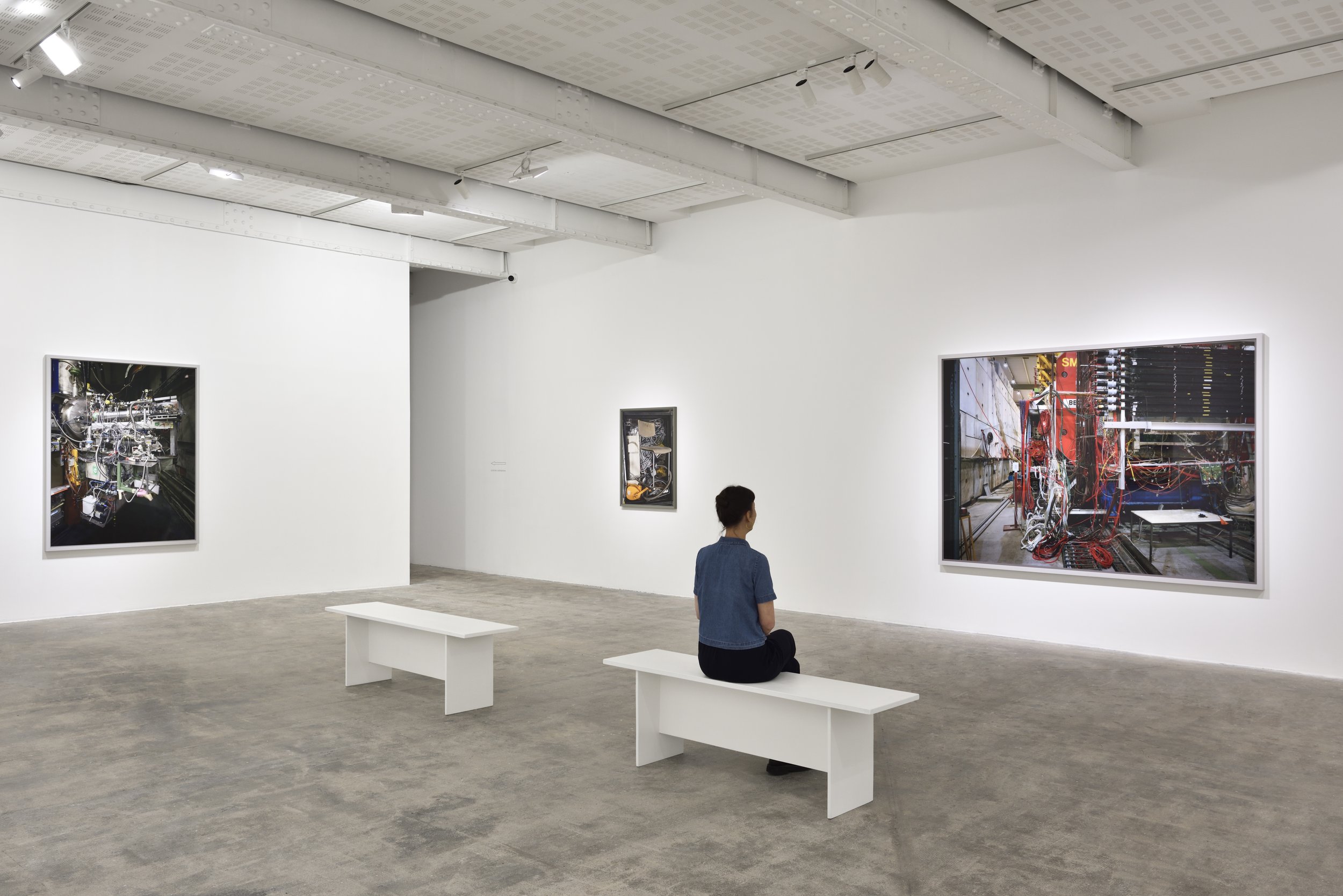

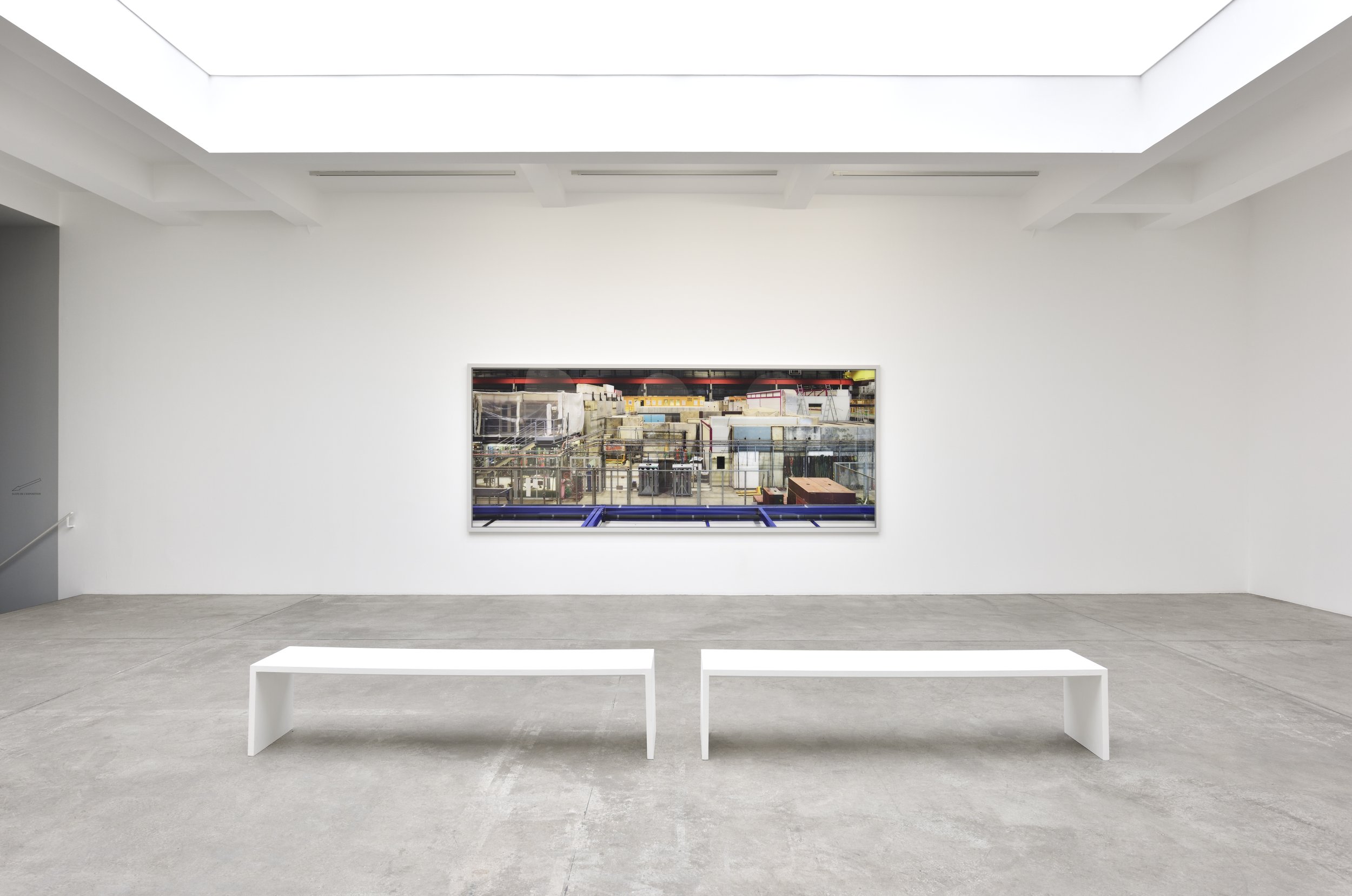


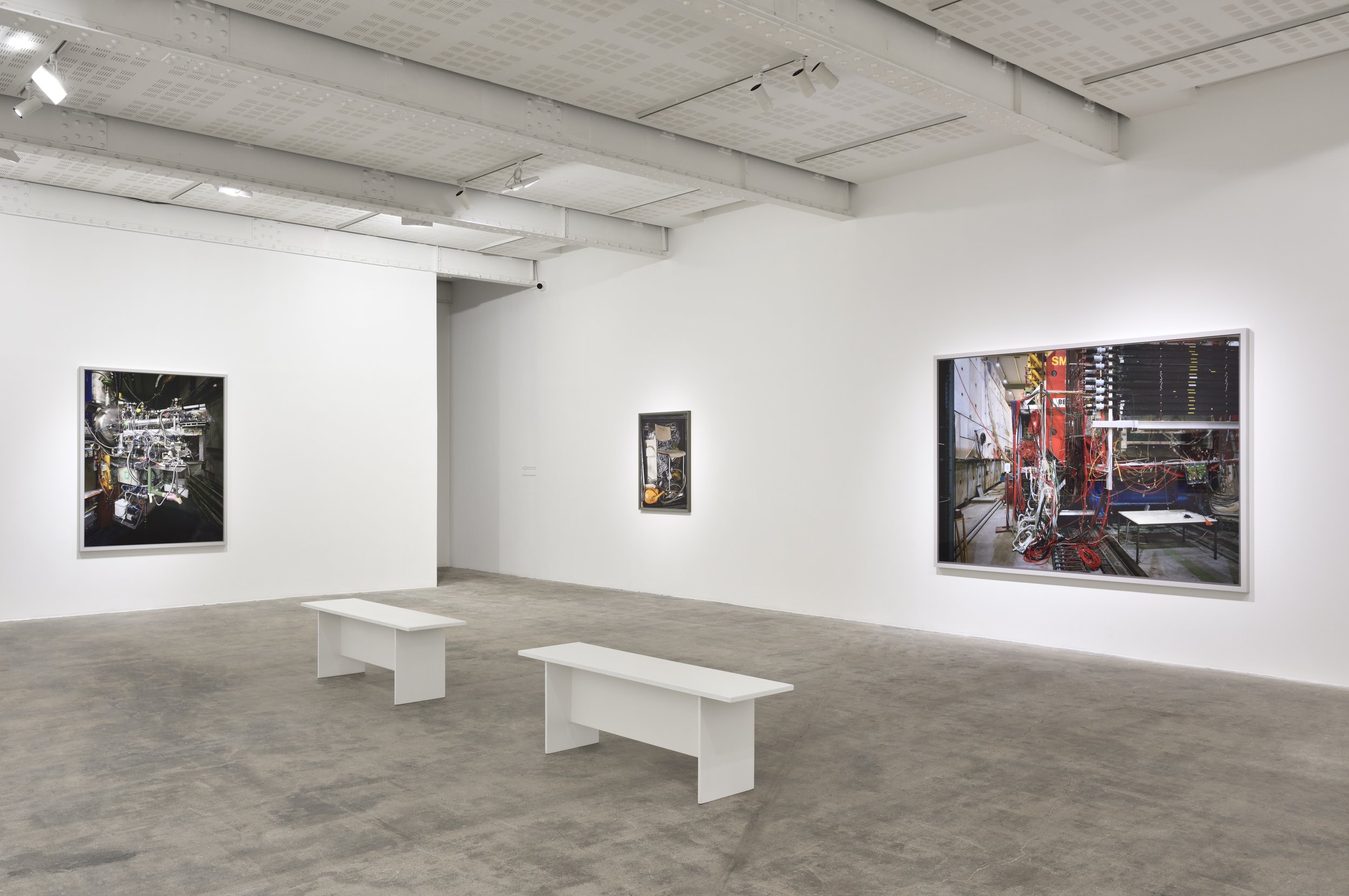

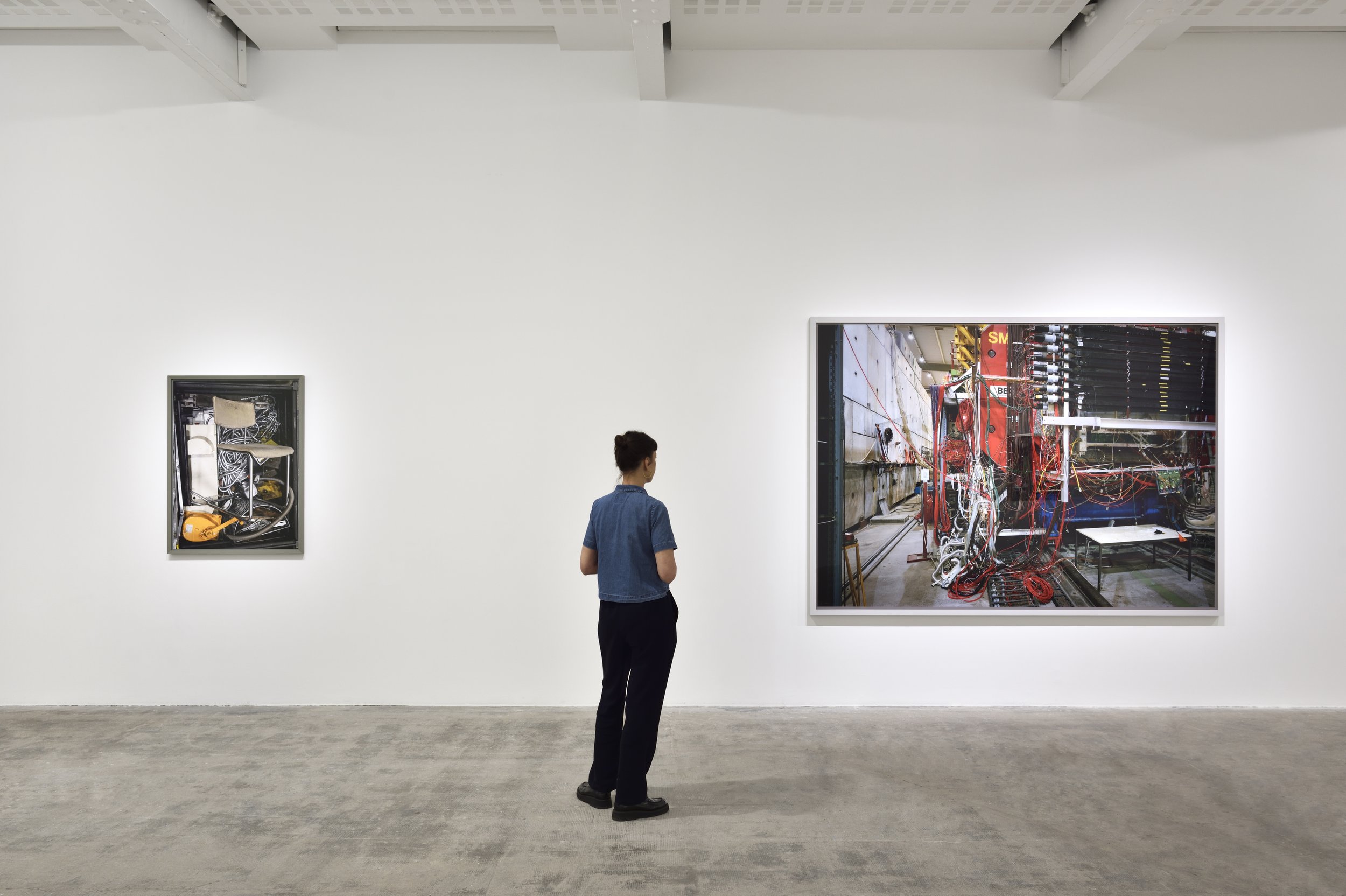
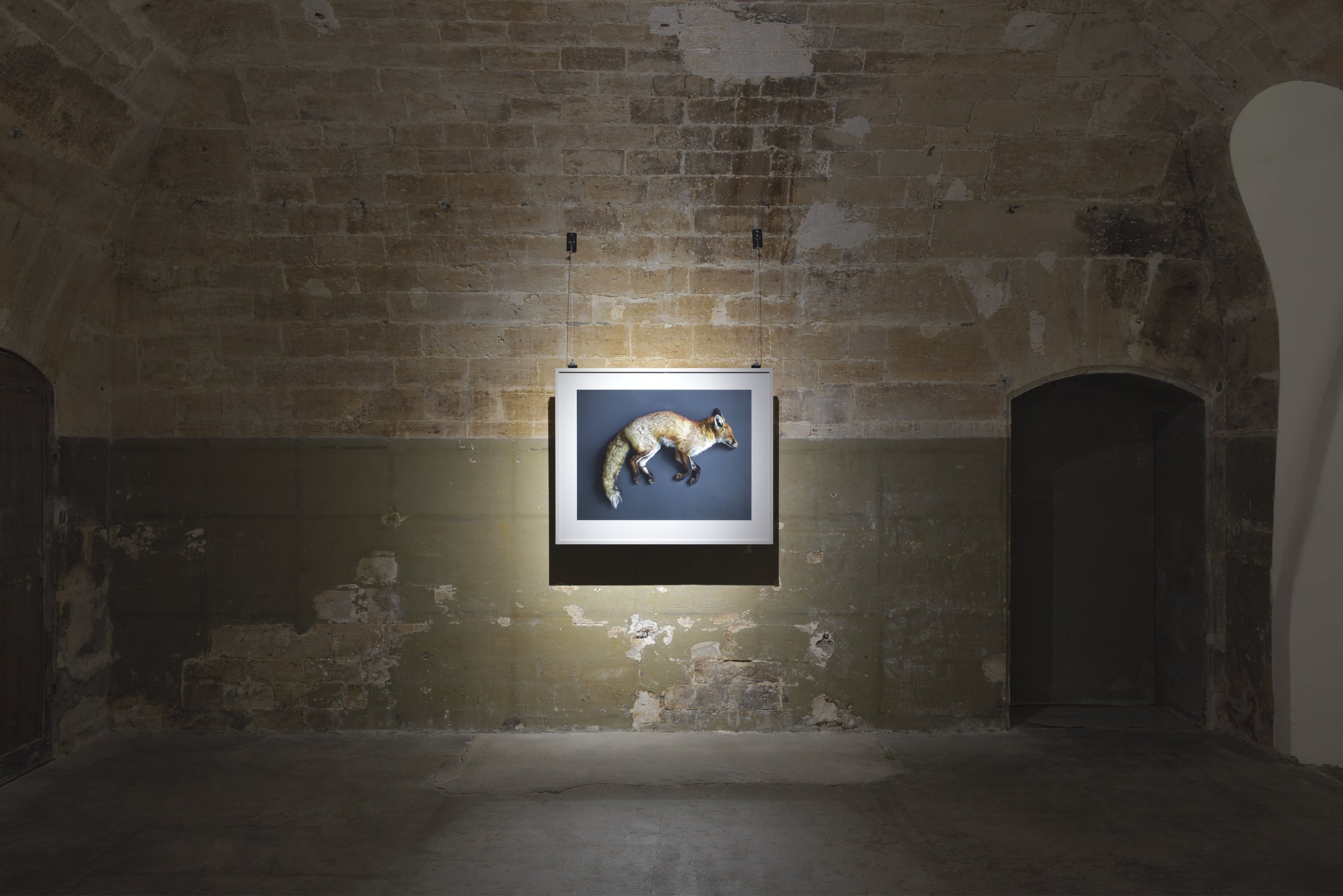
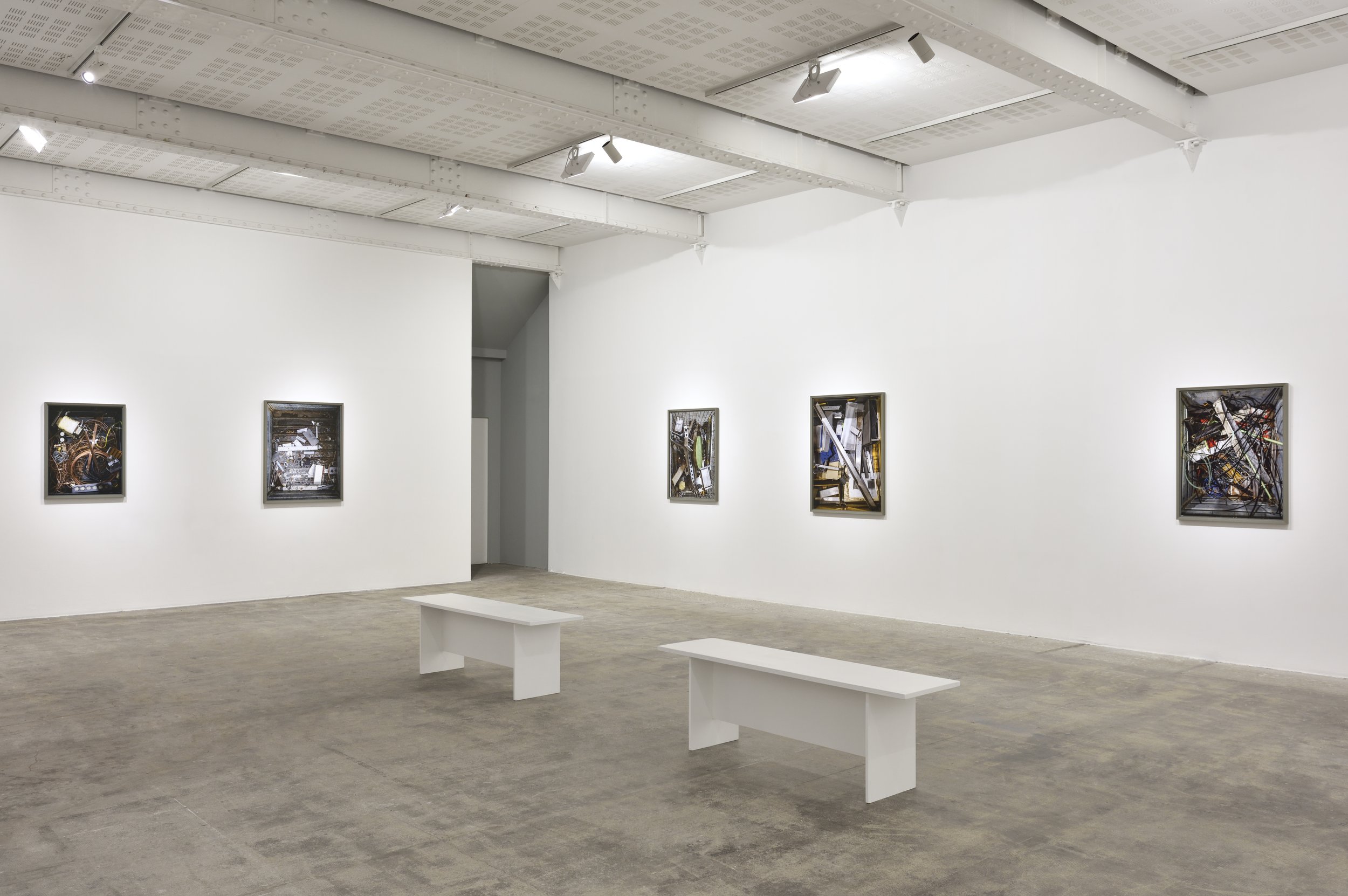
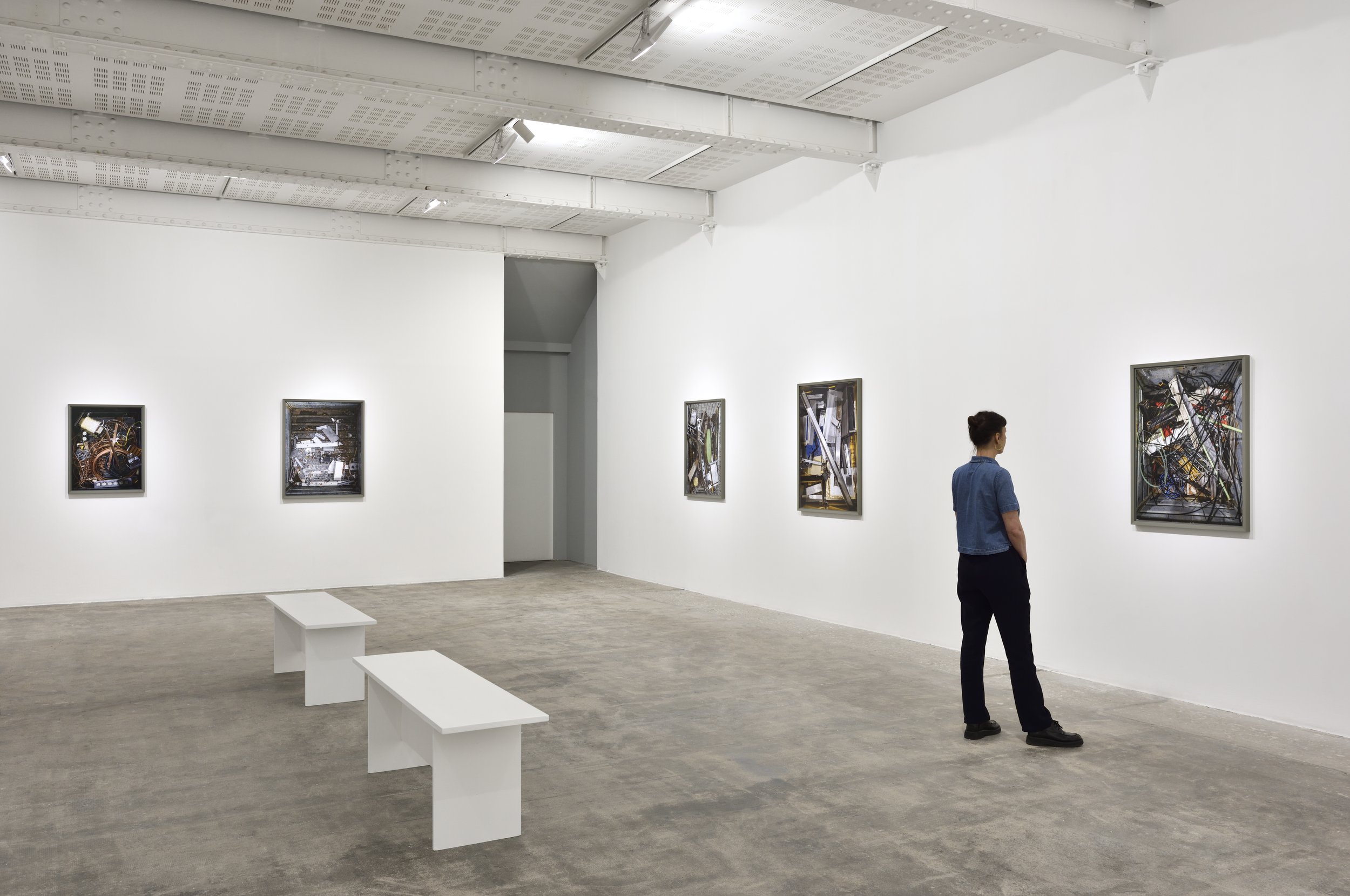



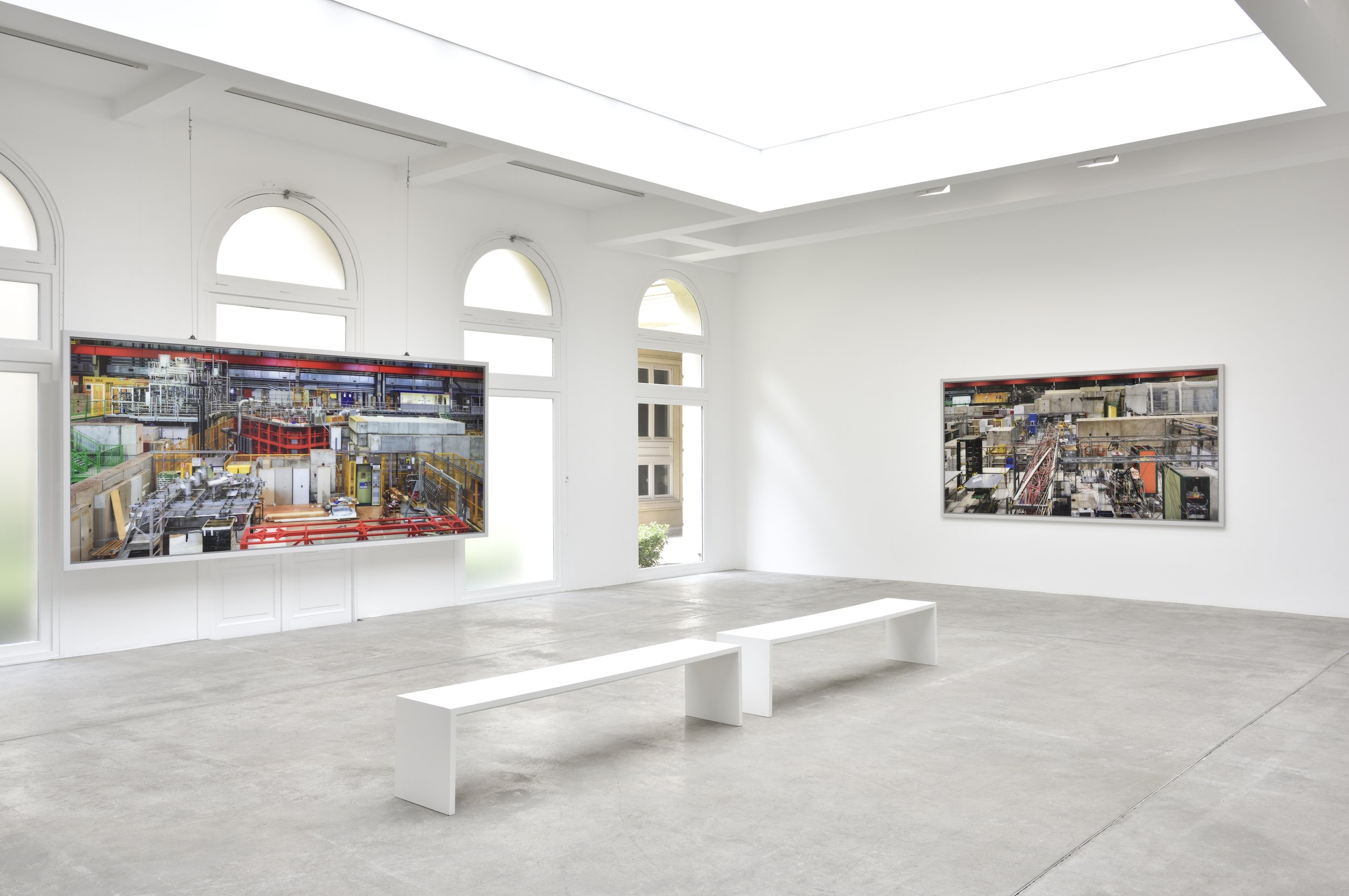
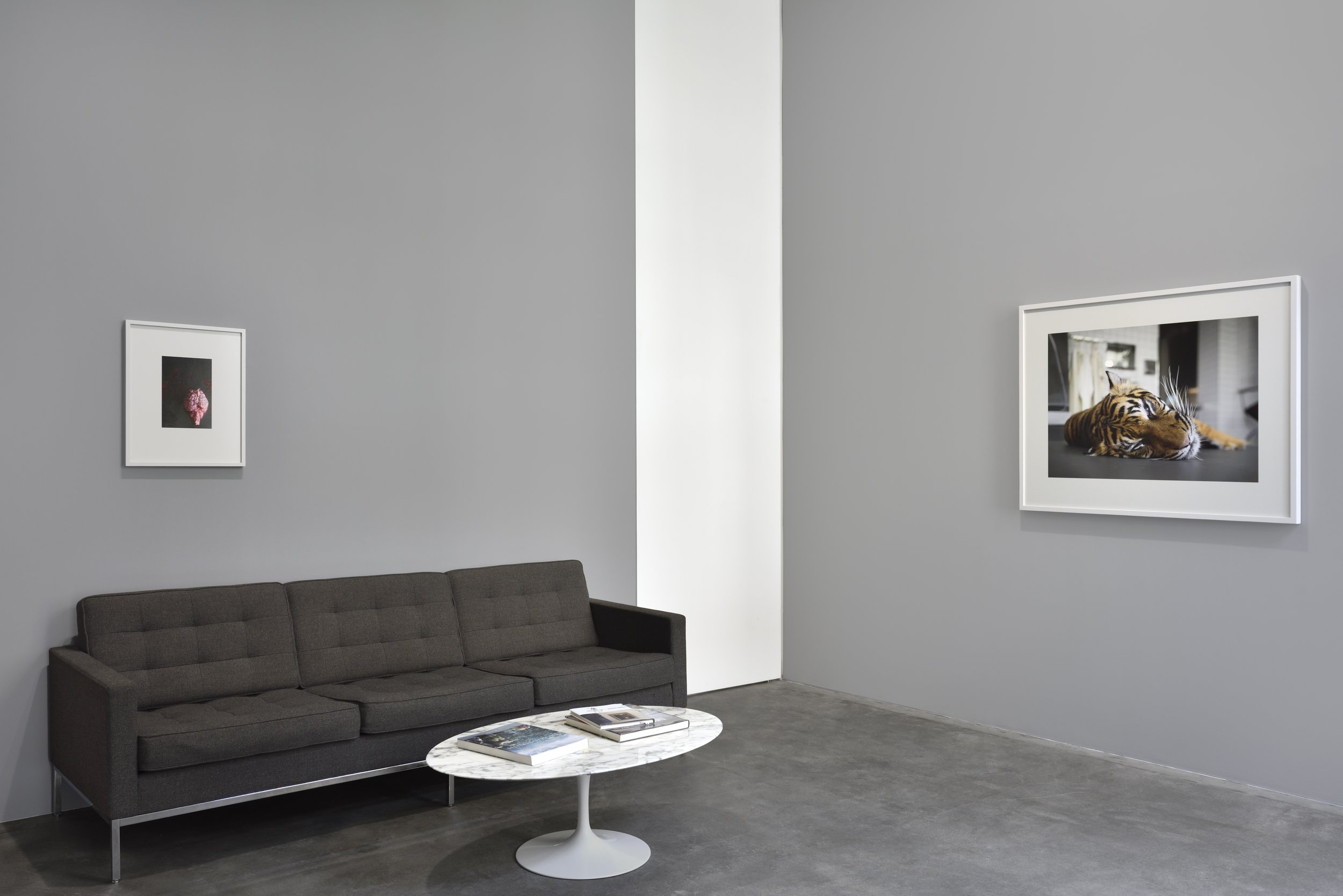

Exhibition view: Thomas Struth; Nature & Politics, Galerie Marian Goodman Paris 25 May – 26 July 2024 Photo credit: Rebecca Fanuele © Thomas Struth and Marian Goodman Gallery Courtesy of the artist and Marian Goodman Gallery
“My work is about the theater of life in different chapters.” – Thomas Struth, 2023
Marian Goodman Gallery is pleased to present a new solo exhibition by Thomas Struth in Paris. Nature & Politics is the internationally acclaimed artist’s first solo show in France dedicated to his eponymous body of work begun in 2007. The exhibition focuses on photographs taken over the past few years at the European Organization for Nuclear Research (CERN) and the Leibniz Institute for Zoo and Wildlife Research (IZW), two of the world's most prestigious scientific research centers, where the scale and complexity of experimentation eludes most of us. Through the photographs in Nature & Politics, Thomas Struth explores our relationship with science and technology, the way we collectively defy nature and our inextinguishable desire to push back the limits of human knowledge.
Container 3, CERN, Meyrin, 2023 Inkjet print 107 x 80 cm © Thomas Struth Courtesy of the artist and Marian Goodman Gallery
Renowned for his photographic work since the 1970s, Struth is driven by the idea that art should “show what others don't see.” With Nature & Politics, he has developed a unique body of works taken in places of advanced technology rarely accessible to the public, such as physics institutes, pharmaceutical factories, space stations, arsenals, and operating rooms. Since 2019 he has been able to enter the various sites of CERN, the world's largest particle physics center, located on either side of the French-Swiss border near Geneva.
On the first floor of the gallery, several meter-long photographs reveal monumental scientific structures that constitute CERN's Prévessin-Moëns and Meyrin sites. Beam Line Zone 1, Beam Line Zone 2 and ProtoDUNE, each detail infrastructures in Hall EHN1 (Experimental Hall North area 1), the organization's largest building. These panoramic immersive views show complex, visually unintelligible structures that resemble immense technological “landscapes.” Their characteristics and colors are almost reminiscent of sculptural installations. Marked by the absence of any humanity – reminiscent of the deserted New York City streets Struth photographed in the 1970s - these constructions are nonetheless the product of human genius. Like the cathedrals of their day, they represent one of mankind’s greatest technological achievements, enabling us to investigate the origins of the universe.
Container 5, CERN, Meyrin, 2023 Inkjet print 96 x 72 cm © Thomas Struth Courtesy of the artist and Marian Goodman Gallery
On the lower level of the gallery, works that capture the intricacies of CERN’s mechanisms, such as Magnet 2 and X-ray Telescope, are shown in counterpoint to the Containers series, originally scattered throughout CERN's various halls, and recently the subject of interest to the artist. In contrast to the imposing infrastructures presented on the first floor, these pictures, taken from an omniscient perspective, are smaller in scale and represent remnants of technological discovery. Within the containers, materials and objects are layered, having been temporarily discarded, for potential reuse in future experiments. This random detritus, taken out of context by Struth, becomes an ordered composition that frames the accumulations as if they were artworks in themselves.
In the final room of the exhibition, the CERN works give way to Animals, another group of photographs taken at the Leibniz Institute for Zoo and Wildlife Research (IZW) in Berlin, where Struth has been visiting regularly since 2016. The IZW's mission is to study the diversity and evolution of the world's wildlife, both free-living and captive, and in particular the anthropogenic impact on species and their ecosystems. Once again, Struth points his lens at activities little known to the public: the laboratory's researchers, just hours after the natural death of an animal, methodically dissect it to analyze the causes of its demise. Each work shows, against a solemn dark gray background, an animal's remains before dissection, like a prelude to a kind of ritual. These post-mortem photographs, with their painterly aesthetic, follow in the long tradition of memento mori: "I've tried to represent animals in a beautiful and dignified way. I'm interested in the idea of abandonment: once you die, the whole circus you proactively create, the theater, comes to a complete halt. These images should be like punches, the memory of death like a wake-up call". But the subject of the series is not just the death of the animal; as the state of the brain, photographed just after it has been removed, underscores, it is the way in which the science of our Anthropocene era seizes upon this death for the purposes of study that is at the core of Struth's reflections.
Thomas Struth, September 2019 Photo credit: Vanessa Enders Courtesy of the artist and Marian Goodman Gallery
Thomas Struth, born 1954 in Geldern, Germany, lives and works in Berlin. He studied at the Kunstakademie in Düsseldorf. Recent comprehensive exhibitions of his work include Figure Ground, his largest show to date, which was presented at Haus der Kunst in 2017 in Munich before traveling to the Guggenheim Museum Bilbao in 2019, as well as Nature & Politics presented successively at the Folkwang Museum in Essen, the Martin-Gropius-Bau in Berlin, the High Museum in Atlanta, the Moody Center for the Arts in Houston, the St. Louis Museum of Art and the MAST Foundation in Bologna between 2016 and 2019.
Recently, Struth has had solo exhibitions at the Hilti Art Foundation, Vaduz, Lichtenstein (2019), Aspen Museum of Art, United States (2018) and Metropolitan Museum of Art, New York (2014). The major retrospective Photographs 1978-2010 traveled from Kunsthaus Zürich (2010) to K20 Kunstsammlung Nordrhein-Westfalen, Düsseldorf (2011) and from Whitechapel Gallery, London (2012) to Museu Serralves, Porto (2011-2012). His photographs have also toured the world in international group shows, including Capturing the moment at Tate Modern London (2023/2024) and ... et labora at Fondation Vincent van Gogh in Arles (2019-2020), among others. Struth also participated in Common Ground, the Venice Architecture Biennale (2012), Future Dimension, the Venice Biennale (1990) and Documenta IX (1992).
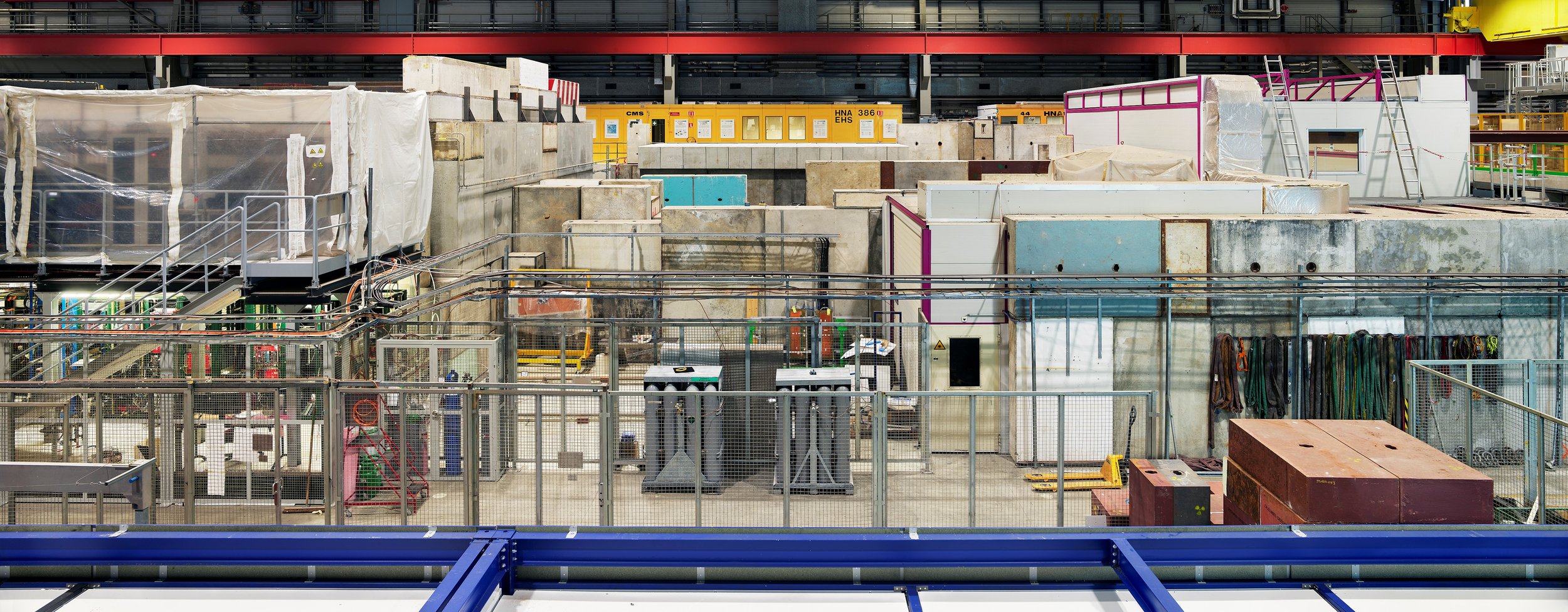
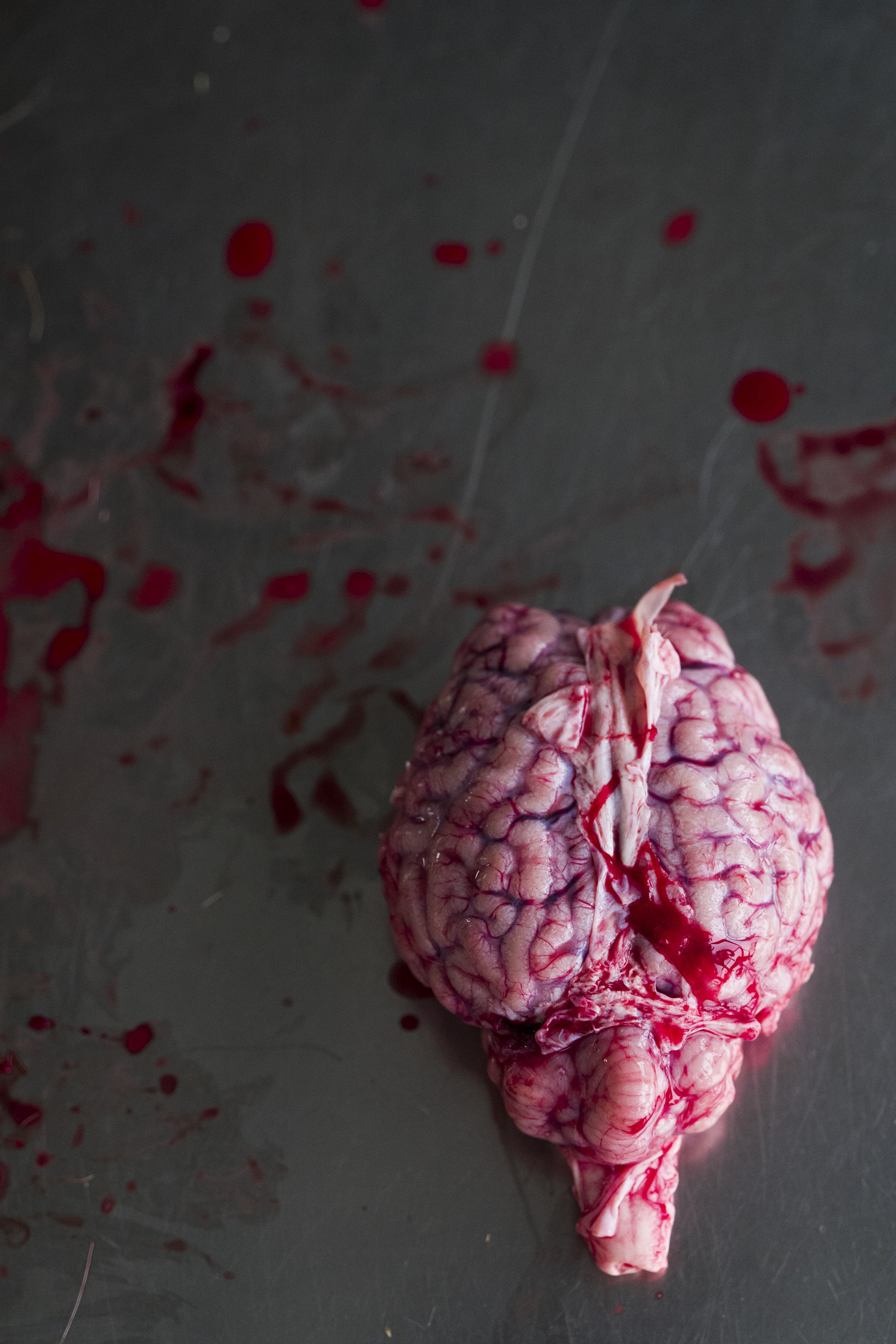

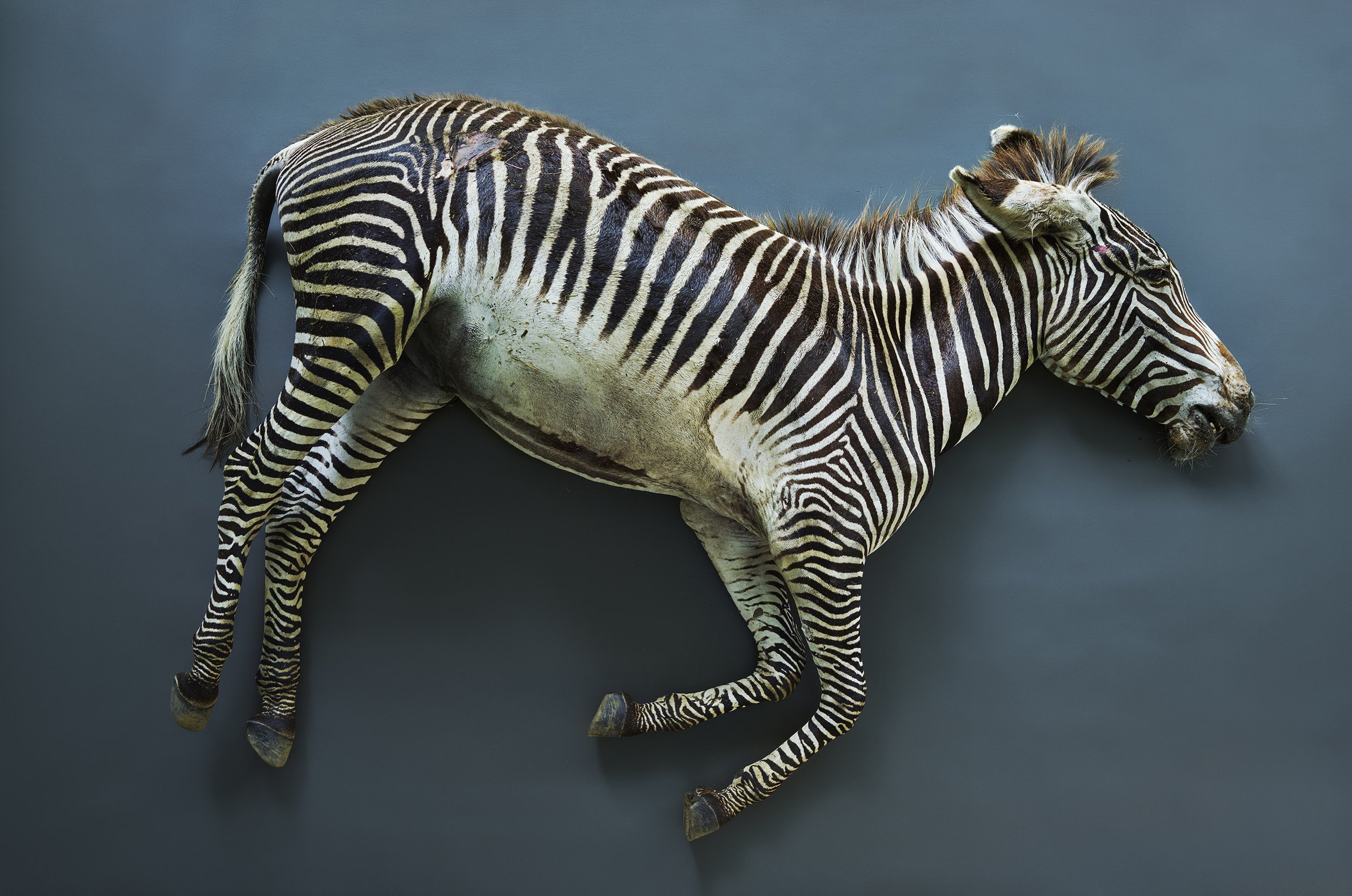
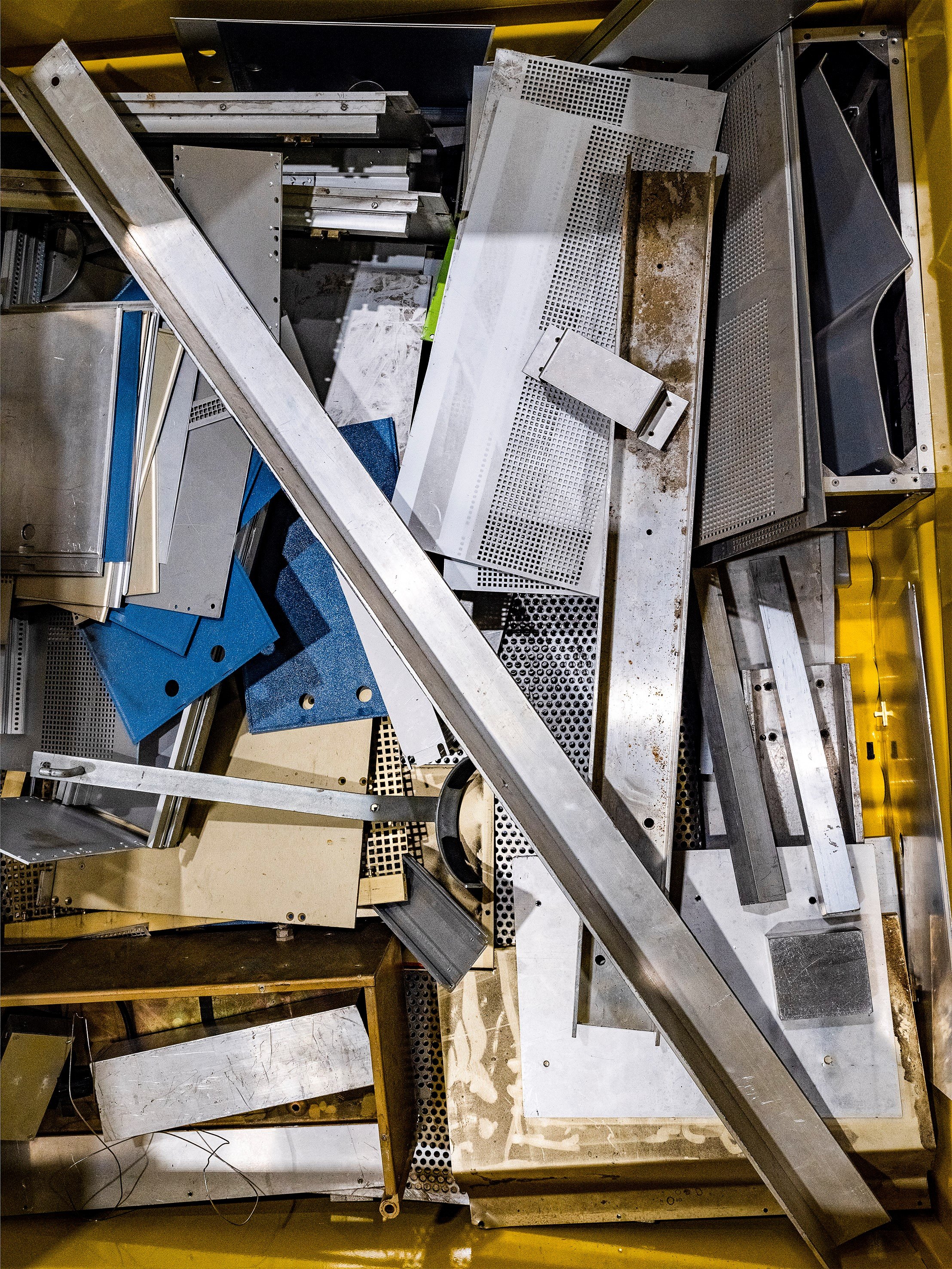



Struth's artworks are in the collections of the Art Institute of Chicago, the Centre Pompidou in Paris, the Dallas Museum of Art, the Hamburger Bahnhof in Berlin, the Kunsthaus Zürich, the Los Angeles County Museum of Art, the Metropolitan Museum of Art in New York, the Museum of Contemporary Art in Los Angeles, the Solomon R. Guggenheim Museum in New York, the Museum of Modern Art in New York, the Tate in London and the Walker Art Center in Minneapolis, among others.
The exhibit opened on May 25th and will be on view until July 26, 2024. The Gallery had a public opening on Saturday, May 25th, from 6 pm to 8 pm, with Thomas Struth. For more information about the exhibit, please visit the Marian Goodman Gallery’s site. The gallery can also be found on Instagram, YouTube, Facebook, and Artsy.
*Hover over the image to find the caption.
Tara Donovan: Stratagems
Tara Donovan: Stratagems 540 West 25th Street, New York, NY 10001 May 3 – August 16, 2024 Photography courtesy Pace Gallery
New York – Pace is pleased to present an exhibition of new work by Tara Donovan at its 540 West 25th Street gallery in New York. The exhibition opened May 3 and will be on view until August 16; the show, titled Stratagems, spotlights a group of sculptures made entirely of found, scavenged, and upcycled CD-ROM discs. Coinciding with Frieze New York, the artist’s presentation at the gallery was complemented by a Pace Live performance from choreographer Kim Brandt.



Known for her process- and system-based work across sculpture, installation, drawing, and printmaking, Donovan often explores the talismanic qualities of everyday materials and objects, from buttons, Styrofoam cups, pencils, and pins to readymade screens and Slinky toys. Drawing on the formal language of Minimalism and Postminimalism, Donovan’s works both use and mis-use such nontraditional materials, transforming them into visually dazzling compositions without obliterating their fundamental essences or histories as objects from everyday life. Through acts of accumulation, aggregation, and iteration, she transmutes her materials into shapeshifting works of art, which explore the possibilities—and limits—of human perception.












Tara Donovan: Stratagems 540 West 25th Street, New York, NY 10001 May 3 – August 16, 2024 Photography courtesy Pace Gallery
Marking her eleventh solo show with Pace, Stratagems will be the first exhibition dedicated to Donovan’s three- dimensional sculptures mounted in New York since 2021. Comprising 11 new sculptures, the show will be presented on the gallery’s seventh floor, which features floor-to-ceiling windows overlooking the Chelsea skyline. Built atop concrete pedestals, each of Donovan’s vertically-oriented sculptures is composed of stacks of CDs, varying in height from seven to ten feet tall. Breathing new life into the banal and outmoded medium of the compact disc, these works will be activated by the natural light that floods the gallery space. Depending on the time of day and the viewer’s perspective, a range of optical effects unfold across the refractive surfaces of the works. Mutable and seemingly alive, Donovan’s latest sculptures respond directly to the presence of the viewer’s body as it traverses space, reflecting her deep interest in the relationship between perceptual nuances and material transfigurations. At the same time, these works invite the viewer to contemplate the transformation of an obsolete medium—once used for the storage and transmission of digital information—into a prism for embodied experience.
Tara Donovan, Stratagem VI, 2024 SCULPTURE CDs 88" × 11-1/2" × 11-1/2" (223.5 cm ×29.2cm×29.2cm) No. 91444 © Tara Donovan, courtesy Pace Gallery
During Frieze week in New York, choreographer Kim Brandt staged a performance with six dancers amid Donovan’s exhibition at Pace. Presented by Pace Live—the gallery’s interdisciplinary platform for live art performances, musical acts, conversations, and other events—Brandt’s performance shared certain affinities with Donovan’s work and riff on the sculptures in the show, developing through an accumulation of scores that invited dancers to explore spiraling as generative movement. Brandt, who has previously presented her work at MoMA PS1 and SculptureCenter in New York, the Museum of Contemporary Art Chicago, and many other institutions, developed a practice that investigates the body as a dynamic material constantly negotiating context-specific relationships to time and space. Further details about her performance at the gallery will be announced in due course.
Tara Donovan, Stratagem X, 2024 SCULPTURE CDs 88"×17"×17"(223.5cm×43.2 cm × 43.2 cm) No. 91446 © Tara Donovan, courtesy Pace Gallery
Stratagems will open during the final days of When Forms Come Alive, a group show at the Hayward Gallery in London featuring Donovan’s work, was on view through May 6.
Portrait of Tara Donovan Courtesy Pace Gallery
For over 20 years, Tara Donovan (b. 1969, Flushing, New York) has created large-scale installations, sculptures and drawings that utilize everyday objects to explore the transformative effects of accumulation and aggregation. Known for her commitment to process, she has earned acclaim for her ability to exploit the inherent physical characteristics of an object in order to transform it into works that generate unique perceptual phenomena and atmospheric effects. Donovan’s many accolades include the prestigious MacArthur Foundation “Genius” Award (2008); and the first annual Calder Prize (2005), among others. For over a decade, numerous museums have mounted solo exhibitions of Donovan’s work including the Museum of Contemporary Art, San Diego (2004 and 2009); Saint Louis Art Museum, Missouri (2006); Metropolitan Museum of Art, New York (2007-08); Institute of Contemporary Art, Boston (2008); Indianapolis Museum of Art, Indiana (2010); the Milwaukee Art Museum, Illinois (2012); Louisiana Museum of Modern Art, Humlebæk, Denmark (2013), Arp Museum Bahnhof Rolandseck, Remagen, Germany (2014); Parrish Museum, Watermill, New York (2015); Jupiter Artland, Edinburgh, Scotland (2015); Museum of Contemporary Art Denver, Colorado (2018); and the Smart Museum of Art, University of Chicago, Illinois (2019). Her work is held in the collections of major institutions such as the Indianapolis Museum of Art, Indiana; Los Angeles County Museum of Art, California; the Metropolitan Museum of Art, New York; and the Whitney Museum of American Art, New York, among others. Pace Gallery has represented Donovan since 2005. The artist lives and works in Brooklyn, New York.
Pace is a leading international art gallery representing some of the most influential contemporary artists and estates from the past century, holding decades-long relationships with Alexander Calder, Jean Dubuffet, Barbara Hepworth, Agnes Martin, Louise Nevelson, and Mark Rothko. Pace enjoys a unique U.S. heritage spanning East and West coasts through its early support of artists central to the Abstract Expressionist and Light and Space movements.
Since its founding by Arne Glimcher in 1960, Pace has developed a distinguished legacy as an artist-first gallery that mounts seminal historical and contemporary exhibitions. Under the current leadership of CEO Marc Glimcher, Pace continues to support its artists and share their visionary work with audiences worldwide by remaining at the forefront of innovation. Now in its seventh decade, the gallery advances its mission through a robust global program— comprising exhibitions, artist projects, public installations, institutional collaborations, performances, and interdisciplinary projects. Pace has a legacy in art bookmaking and has published over five hundred titles in close collaboration with artists, with a focus on original scholarship and on introducing new voices to the art historical canon.
Today, Pace has seven locations worldwide, including European footholds in London and Geneva as well as Berlin, where the gallery established an office in 2023. Pace maintains two galleries in New York—its headquarters at 540 West 25th Street, which welcomed almost 120,000 visitors and programmed 20 shows in its first six months, and an adjacent 8,000 sq. ft. exhibition space at 510 West 25th Street. Pace’s long and pioneering history in California includes a gallery in Palo Alto, which was open from 2016 to 2022. Pace’s engagement with Silicon Valley’s technology industry has had a lasting impact on the gallery at a global level, accelerating its initiatives connecting art and technology as well as its work with experiential artists. Pace consolidated its West Coast activity through its flagship in Los Angeles, which opened in 2022. Pace was one of the first international galleries to establish outposts in Asia, where it operates permanent gallery spaces in Hong Kong and Seoul, along with an office and viewing room in Beijing. In spring 2024, Pace will open its first gallery space in Japan in Tokyo’s new Azabudai Hills development.
The exhibition opened on May 3 and will be on view until August 16, 2024, at Pace Gallery 510 West 25th Street in New York. For more information about this exhibition and others, please visit the Pace Gallery’s website here. Pace Gallery can be found on Instagram and Artsy, too.
Huong Dodinh: TRANSCENDENCE
Huong Dodinh: TRANSCENDENCE 540 West 25th Street, New York, NY 10001 May 3 – August 16, 2024 Photography courtesy Pace Gallery
New York – Pace is pleased to present an exhibition of new and historic works by Huong Dodinh at its 540 West 25th Street gallery in New York which opened on May 3rd and will close on August 16. Titled TRANSCENDENCE, the show, which marks the artist’s first-ever solo presentation in the US, brings together paintings and works on paper she has created over the course of her career, from the 1960s to the present day. Coinciding with the 2024 edition of Frieze New York, TRANSCENDENCE accompanied a new catalog from Pace Publishing, which was released during the exhibition.
Dodinh was born in Soc Trang, Vietnam in 1945. Forced to flee the country, her family sought refuge in Paris in 1953 after the outbreak of the First Indochina War. Dodinh has lived and worked in the French capital ever since, cultivating a solitary life in service of her artistic pursuits. Insulating herself from art market trends, she has maintained a commitment to authenticity, purity, contemplation, and truth in her work since she began painting in the 1960s.
Over the last six decades, Dodinh has devoted her practice to three central tenets—light, density, and transparency—through which she explores the fluidity of line, form, and negative space. By adopting a private and intensely regimented lifestyle, the artist has developed a distinctive way of making that blurs the boundaries between art and the everyday. Working alone and without any assistants in her Paris atelier, Dodinh takes personal ownership over every step in her process, from sourcing mineral powders for her pigments in Provence to mounting her canvases and applying her paint. Creating her own pigments and organic binders by hand, Dodinh applies thin layers of paint multiple times to forge transparent yet dense surfaces. Through her use of natural materials, she produces vibrant visual effects through absorptions and reflections of light in her elegant, minimalist compositions.






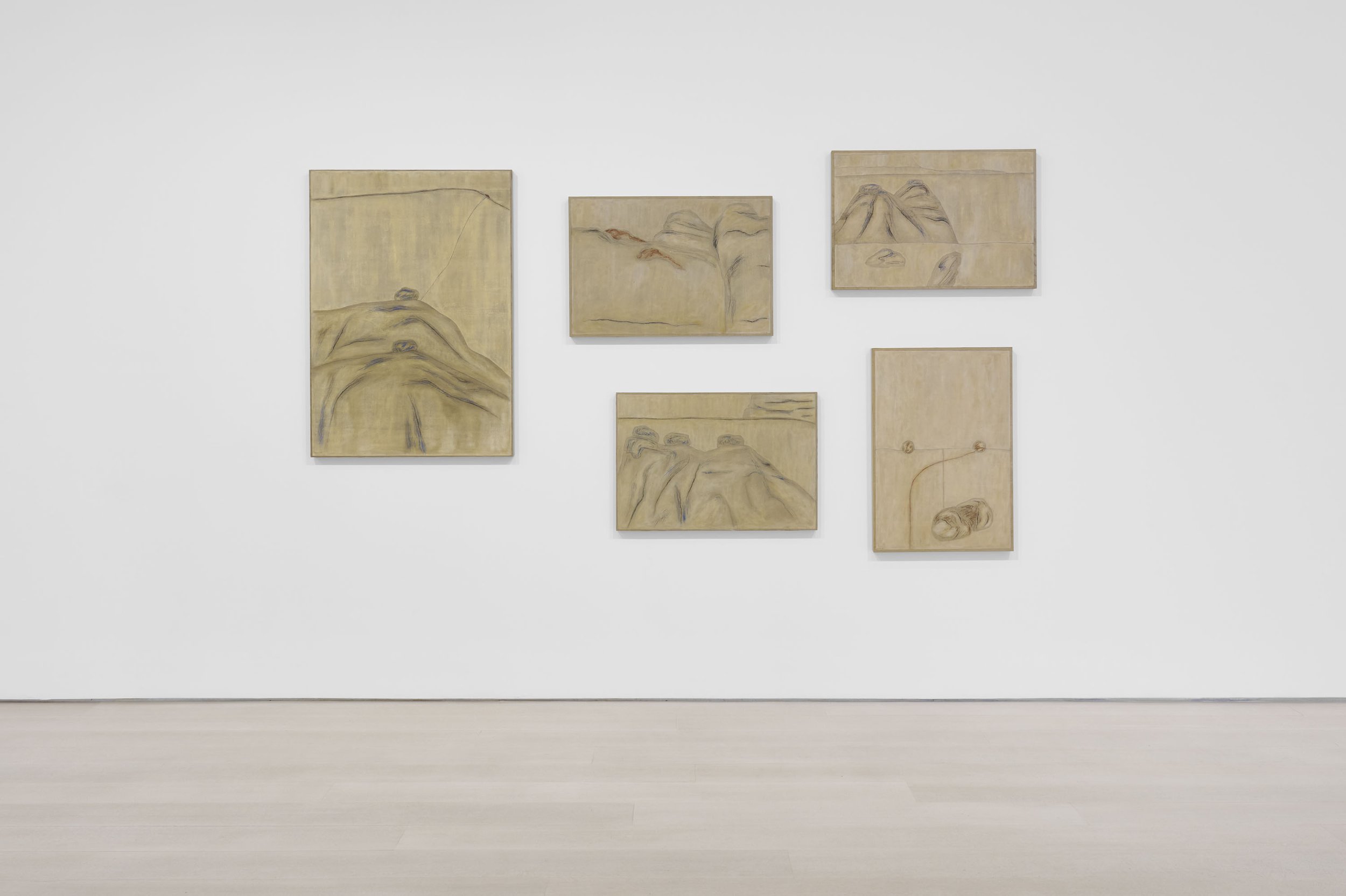
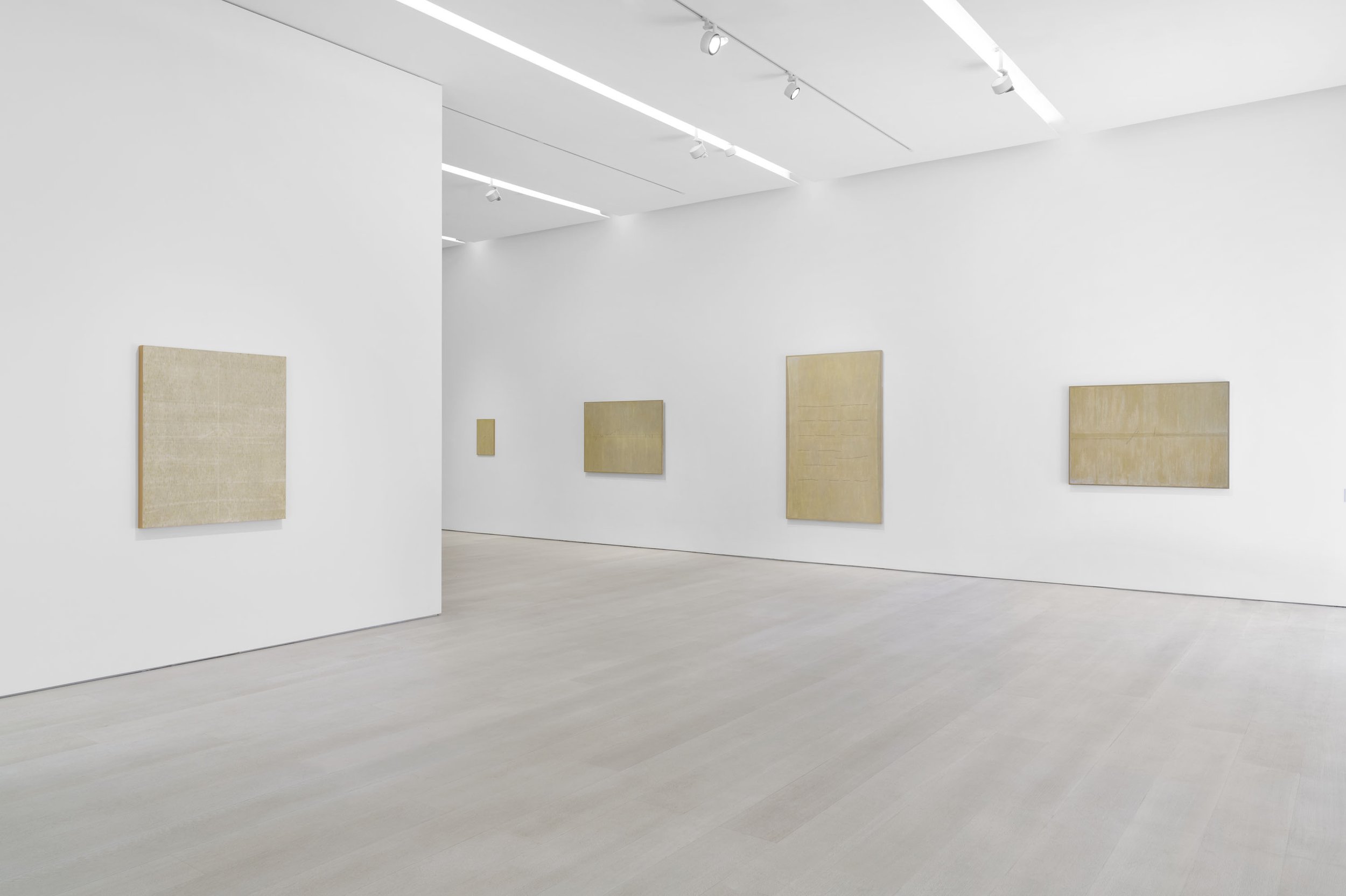
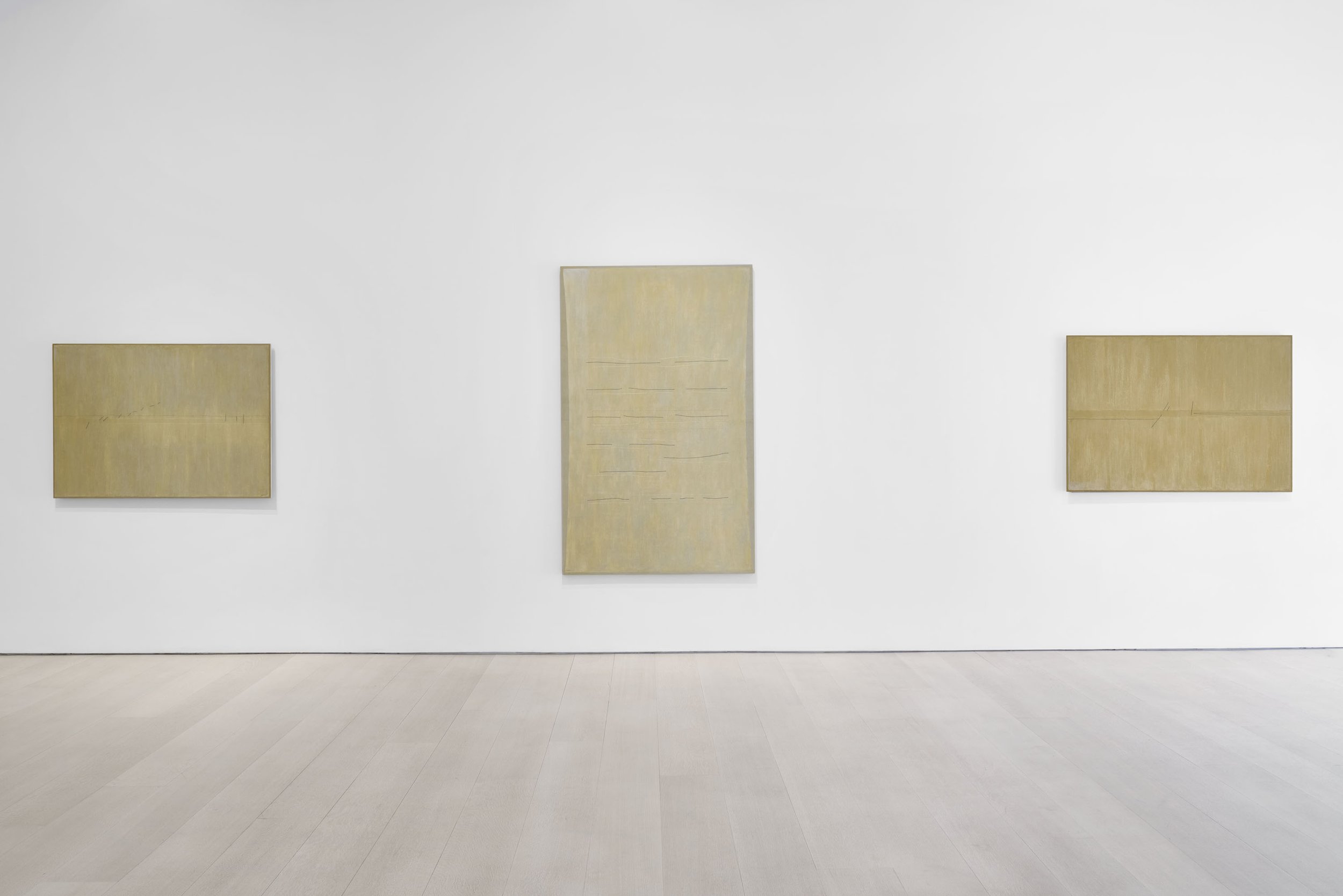
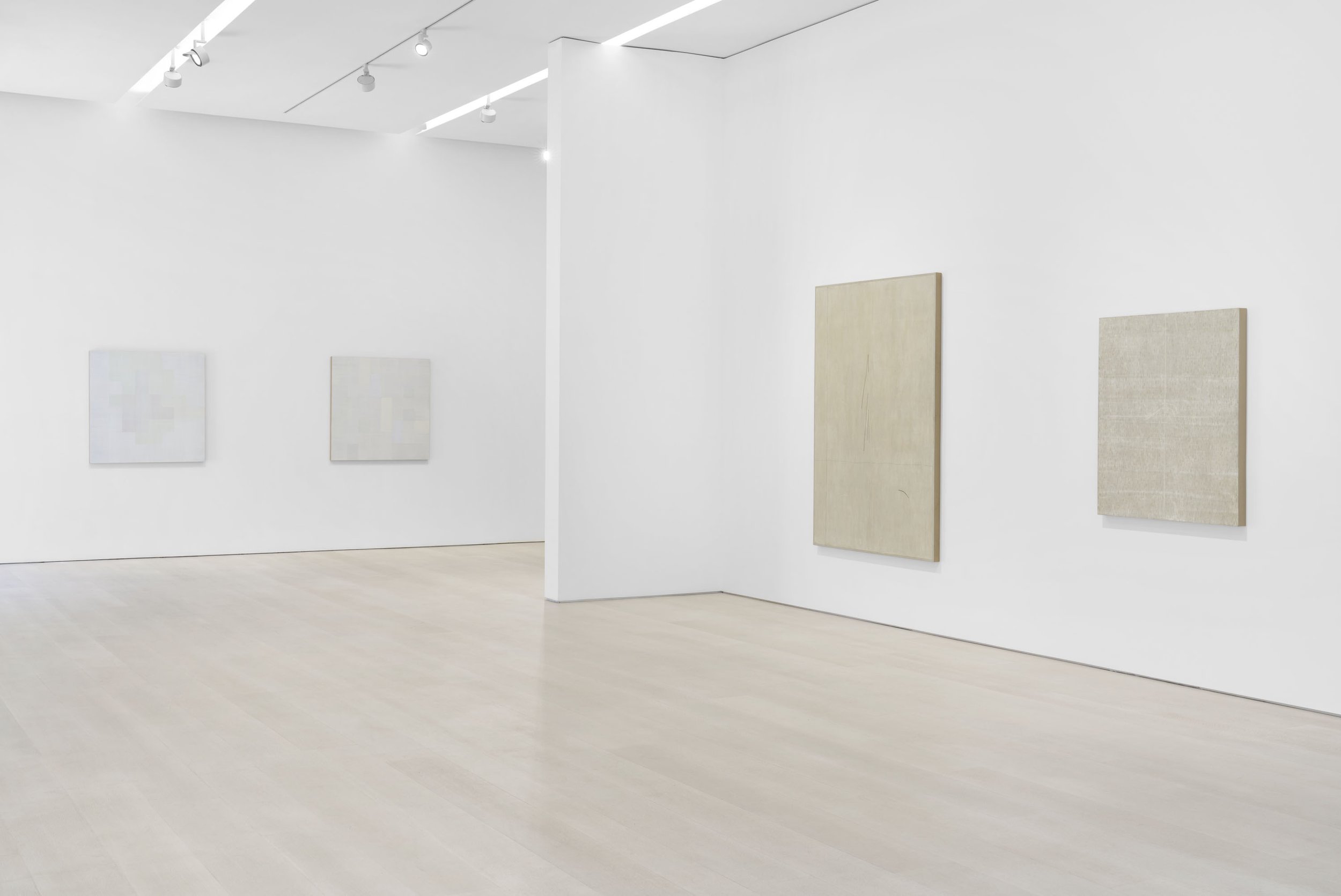


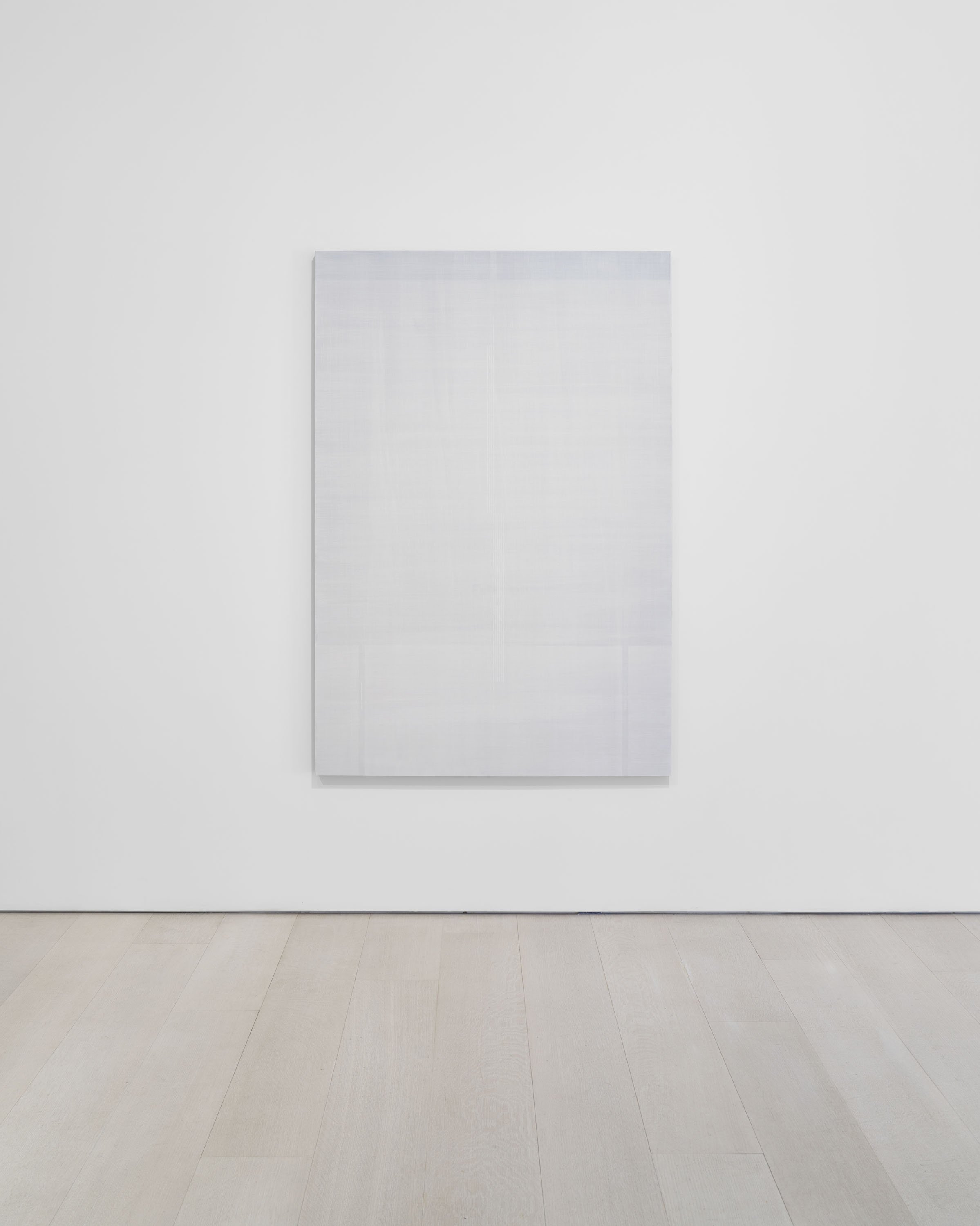
Huong Dodinh: TRANSCENDENCE 540 West 25th Street, New York, NY 10001 May 3– August 16 2024 Photography courtesy Pace Gallery
For the opening of her exhibition at Pace in May—which marks her second solo presentation with the gallery, following her show in Seoul last year—the artist traveled to New York for the first time in her life. Holistically, the nearly 30 paintings and works on paper that will figure in Dodinh’s debut New York exhibition speak to her longstanding interest in conveying ideas about silence, light, and pure feeling through a language of abstraction.
TRANSCENDENCE begins with a rare figurative scene that the artist made in 1966. Rendered in pastel, La Neige depicts, as its title suggests, a landscape of snow-covered houses and streets. Dodinh encountered snow for the first time when she emigrated from Vietnam to France, and, with this early composition, she explored her relationship to her new natural environment. In works from the following decades, when she leaned increasingly toward total abstraction, the artist continued to meditate on the ways that organic lines and shapes can reflect and represent the wonders of the natural world. Through her work, Dodinh strives to harmonize relationships and engage in a meaningful exchange with the world around her. As she has said, "Art is a process of opening oneself to others."
Recent exhibitions by the artist include her 2021 retrospective at the Guimet Museum in Paris and her solo presentation at the Museo Correr in Venice during the 2022 Venice Biennale.
Huong Dodinh (b. 1945, Soc Trang, Vietnam) was born in 1945 in Soc Trang, in the Mekong Delta, Vietnam. Dodinh and her family were forced to flee their war torn home in 1953 and sought refuge in Paris, where the artist continues to live and work today. At a boarding school in Rambouillet, Dodinh witnessed snow for the first time, marveling at the blending of land and sky. She calls this luminescent scene her artistic “epiphany” and it continues to inspire her painting. Dodinh studied at the prestigious École Nationale Supérieure de Beaux-Arts in Paris from 1965 to 1969, completing courses in a wide array of disciplines including engraving, lithography, frescoes, painting, and architecture. During this time, Dodinh was deeply affected by the violence of the Vietnam War and the uprisings of May 1968. After a three-year break, Dodinh was able to return to her artistic practice with a newfound sense of freedom. In the decades that followed, Dodinh dedicated herself to painting, occasionally exhibiting in Paris and often encountering fellow artists based in France such as Peter Matisse, Joan Mitchell, and Lisa de Kooning.
Dodinh is the recipient of several important awards and distinctions including, 1st Prize at the International Grand Prize for Painting in Cannes (1981), the Silver Cross of Merit and French Dedication (1996), and the Vice President Maison de la Culture d'Asie Orientale (1997). She presented a solo exhibition in 2021 at the Musée national des arts asiatiques - Guimet, and has participated in group presentations at FRAC de Champagne-Ardenne, Reims, as well as the major contemporary art exhibition Triptyque in Angers.
Pace is a leading international art gallery representing some of the most influential contemporary artists and estates from the past century, holding decades-long relationships with Alexander Calder, Jean Dubuffet, Barbara Hepworth, Agnes Martin, Louise Nevelson, and Mark Rothko. Pace enjoys a unique U.S. heritage spanning East and West coasts through its early support of artists central to the Abstract Expressionist and Light and Space movements.
Since its founding by Arne Glimcher in 1960, Pace has developed a distinguished legacy as an artist-first gallery that mounts seminal historical and contemporary exhibitions. Under the current leadership of CEO Marc Glimcher, Pace continues to support its artists and share their visionary work with audiences worldwide by remaining at the forefront of innovation. Now in its seventh decade, the gallery advances its mission through a robust global program— comprising exhibitions, artist projects, public installations, institutional collaborations, performances, and interdisciplinary projects. Pace has a legacy in art bookmaking and has published over five hundred titles in close collaboration with artists, with a focus on original scholarship and on introducing new voices to the art historical canon.
Today, Pace has seven locations worldwide, including European footholds in London and Geneva as well as Berlin, where the gallery established an office in 2023. Pace maintains two galleries in New York—its headquarters at 540 West 25th Street, which welcomed almost 120,000 visitors and programmed 20 shows in its first six months, and an adjacent 8,000 sq. ft. exhibition space at 510 West 25th Street. Pace’s long and pioneering history in California includes a gallery in Palo Alto, which was open from 2016 to 2022. Pace’s engagement with Silicon Valley’s technology industry has had a lasting impact on the gallery at a global level, accelerating its initiatives connecting art and technology as well as its work with experiential artists. Pace consolidated its West Coast activity through its flagship in Los Angeles, which opened in 2022. Pace was one of the first international galleries to establish outposts in Asia, where it operates permanent gallery spaces in Hong Kong and Seoul, along with an office and viewing room in Beijing. In spring 2024, Pace will open its first gallery space in Japan in Tokyo’s new Azabudai Hills development.
The exhibition opened on May 3rd and will be on view until August 16, 2024, at Pace Gallery 510 West 25th Street in New York. For more information about this exhibition and others, please visit the Pace Gallery’s website here. Pace Gallery can be found on Instagram and Artsy, too.
Joan Semmel : An Other View
Installation View: Joan Semmel, An Other View 25 April — 22 June 2024 courtesy Xavier Hufkens
Xavier Hufkens is pleased to present An Other View, American painter Joan Semmel (b.1932)’s inaugural exhibition with the gallery. The exhibition spans a period of five decades, showcasing the major developments in the artist’s oeuvre. The eight large-format oil paintings and two works on paper on display, created between 1971 and 2018, collectively attest to Semmel’s decades-long commitment to the representation of women, largely through the medium of her own body. The passage of time, permits the viewers to take an unvarnished look at natural ageing, as well as consider the socio- political engagement of ‘the personal is the political’ and the evolution of feminist issues across multiple decades, from the sexual liberation of the 70s to contemporary society’s veneration of youth.
Turning, 2018.
By adopting a resolutely non-objectifying stance — her own body as the subject— Semmel has created an oeuvre that not only challenges traditional representations of women but also explores themes such as identity, sexuality, and censorship. She does not consider her paintings to be self-portraits, but rather as touchstones: images that bring critical issues into focus, so that they can be confronted. While Semmel tends to work in series, the element that binds the oeuvre together— in addition to the focus on selfhood and self- representation — is the use of colour. Semmel’s approach to colouration is abstract, whereas her approach to figuration is unapologetically realistic.

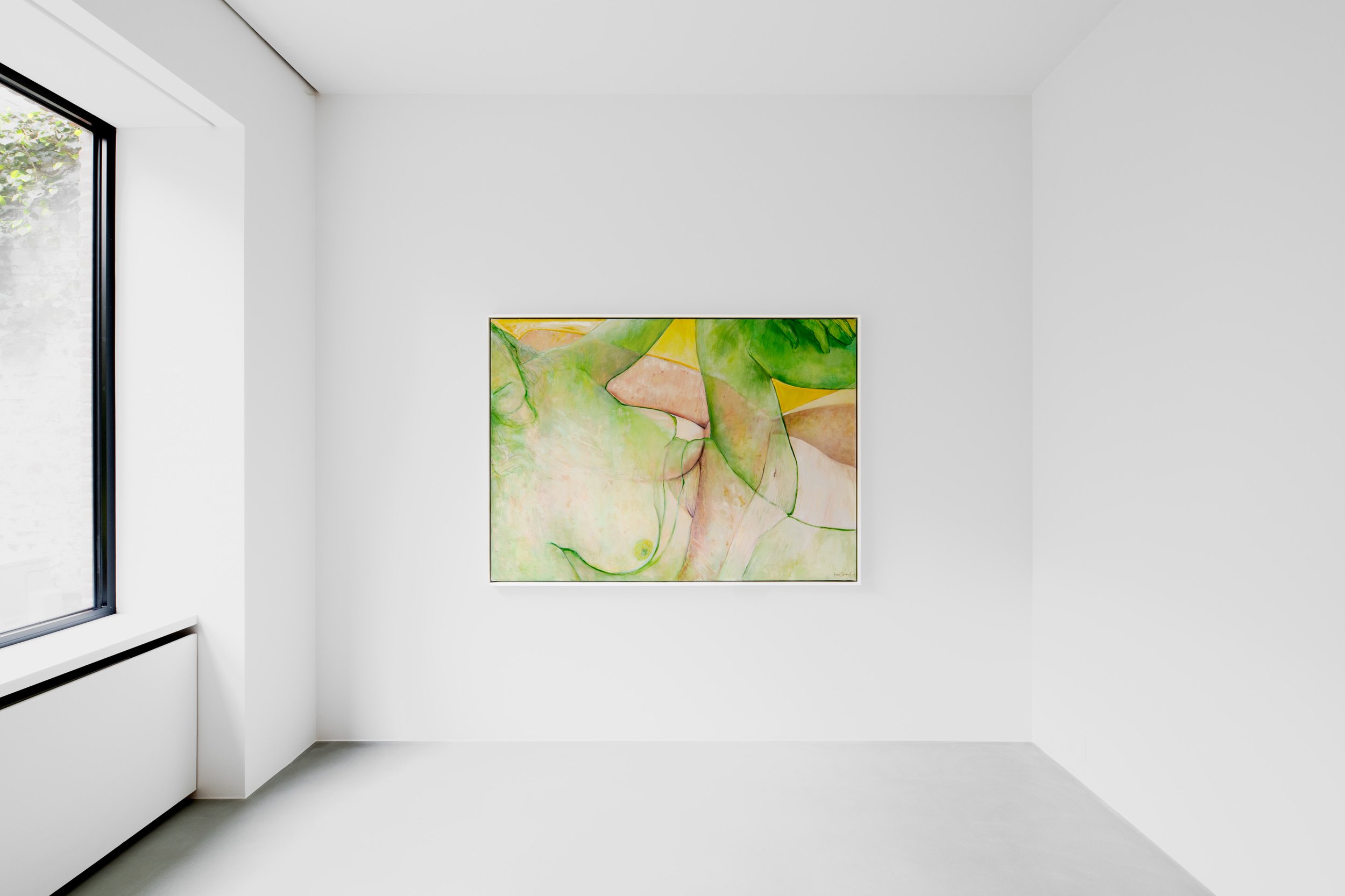
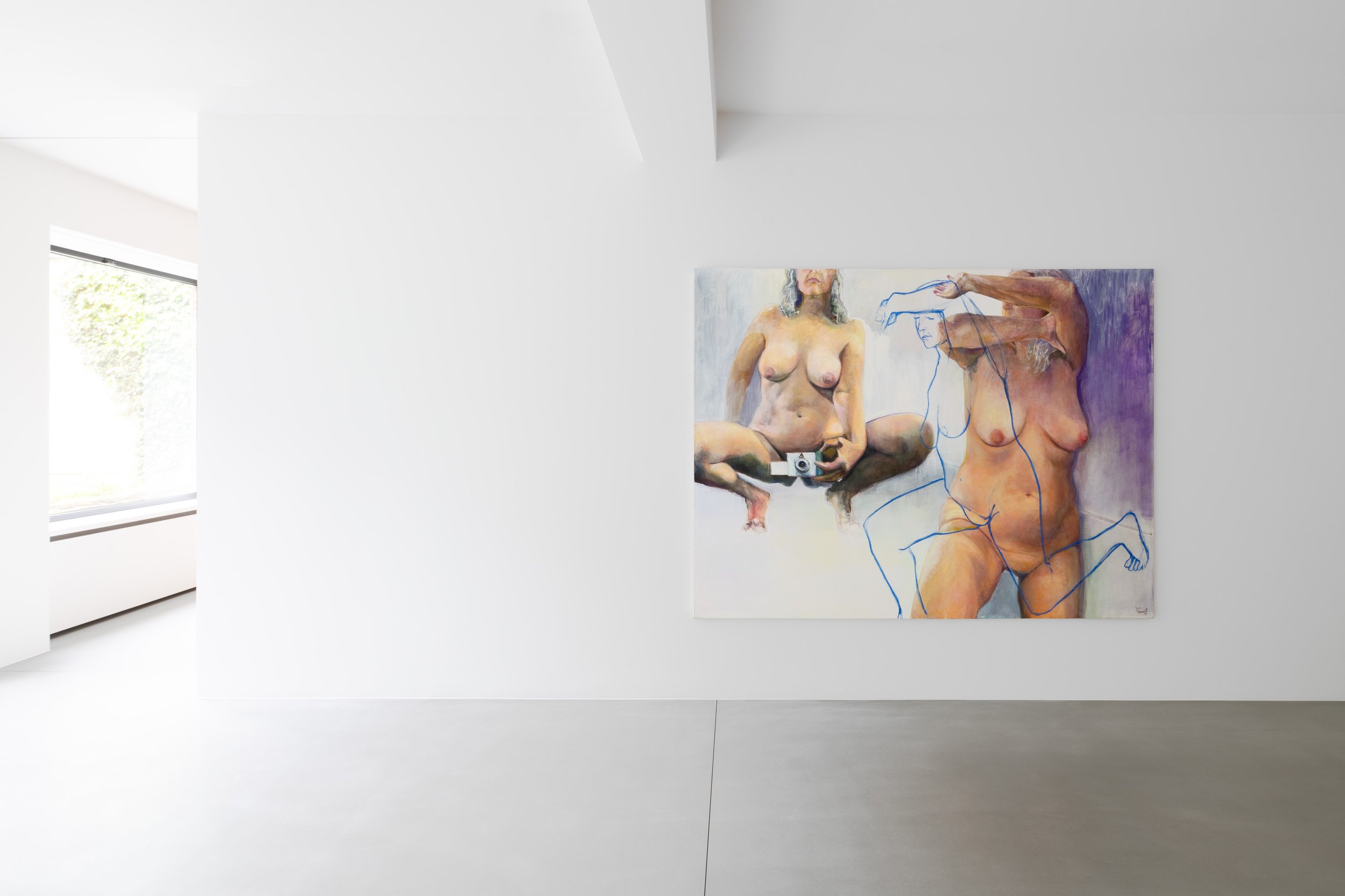
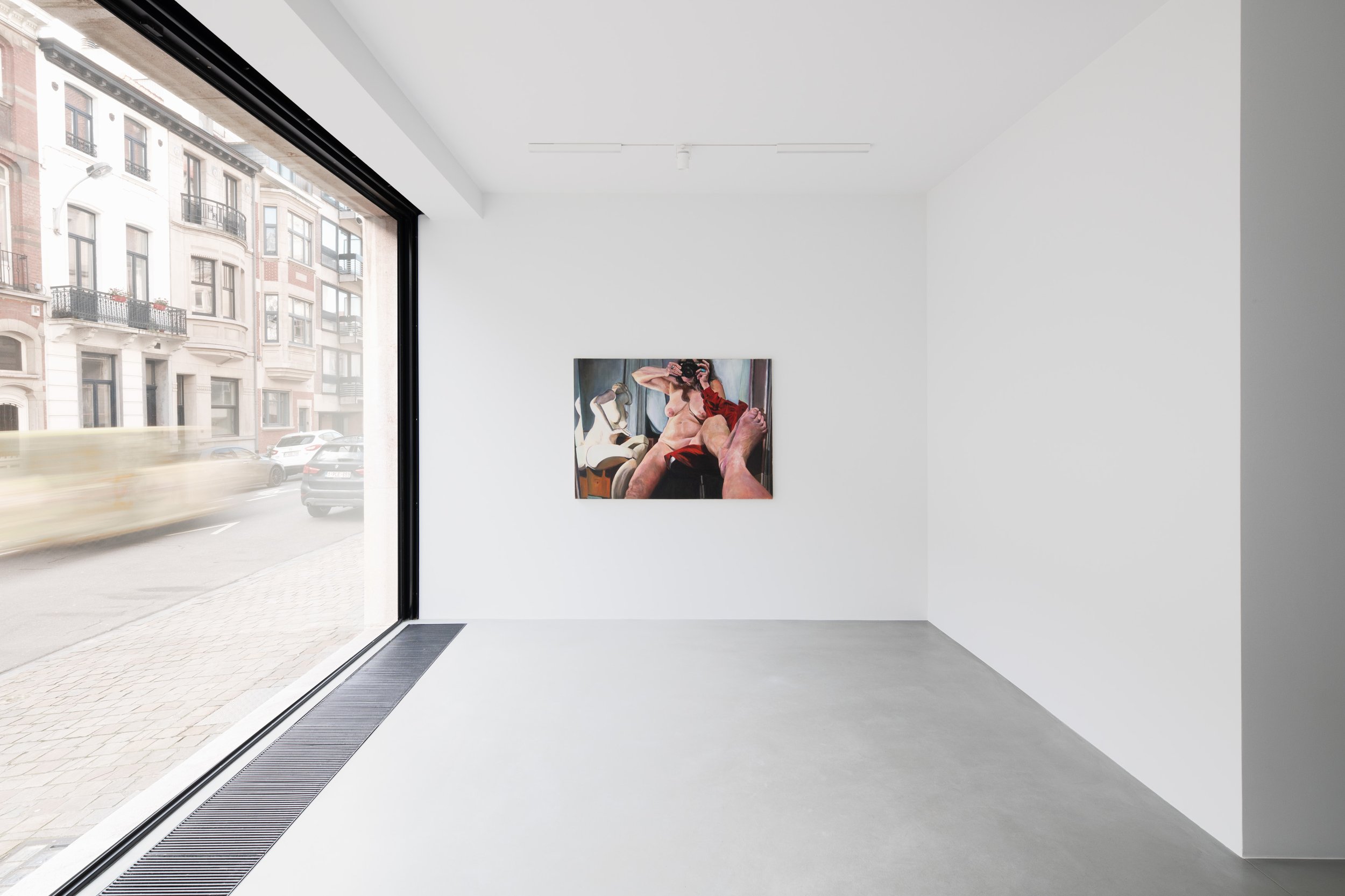
Installation View: Joan Semmel, An Other View 25 April — 22 June 2024 courtesy Xavier Hufkens
The earliest work in the exhibition is one of Semmel’s iconic sex paintings from 1971. Painted in reaction to the commercial exploitation of female bodies, Semmel sought to create an erotic visual language that would speak to women. Her belief that female repression begins in the sexual arena was another catalyst. Using the body as a structural form, and colours that betray her Abstract Expressionist roots, these pioneering works are intimate yet devoid of sentimentality. The contemporaneous Self-Image series, represented by two works on paper, mark a turning point in her practice: the beginning of the intense focus on her own body. A key aim was to challenge the male gaze in Western painting and popular culture. Hence her decision to become both observer and subject in her work, transcending the traditional themes of vulnerability and seduction. Crucially, she opted to paint her body from her own point of view, both in a literal and figurative sense. This is clear in a work like Weathered (2018): the viewer observes the female body from within the frame, so to speak, as if looking through the eyes of the artist.
Yellow Sky, 2015
Works such as Baroque (2002) and Disappearing (2006) highlight important devices in Semmel’s work: mannequins, mirrors and cameras. Each object has a clear purpose. Baroque features a discarded mannequin, which Semmel found on the streets of New York. The painting is a dark critique on consumer culture and, in her own words “the mass production of the desirable female image”. The lifeless forms allude to the cult of youth and how women can be ‘discarded’ once they reach a certain age. On the other hand, mirrors and cameras, which are also featured in Baroque, have an empowering function. Semmel points the camera at a mirror to take a self- portrait but, via the reflection, simultaneously trains it on the viewer. A tripling of the female body — real (the foot on the glass), artificial (mannequin) and illusory (reflection)— but also a reversal of the female gaze: through the camera, the viewer also becomes a subject of the work. A painting about looking and being looked at. The mirror alludes to the artificiality of images and the construction of identity, but also to art itself: paintings and photographs are illusions, never the reality. Disappearing, which is based on a photograph, is noteworthy for replicating the blur of the original image in pigments, thereby creating a sense of movement.
Joan Semmel’s work invites viewers to reconsider the ways in which women’s bodies are perceived and represented in art, in society, and in contemporary culture. Says the artist: “Reimagining the nude without objectifying the person, using my own body, made it clear that the artist was female and undercut the stereotypes of the male artist and the female muse. I wanted to subvert that tradition from within.”
Photo Credit : Taylor Miller (2019)
Joan Semmel (b. 1932, New York) lives and works in New York and East Hampton. She was recently the subject of a large-scale retrospective Skin in the Game that opened at the Pennsylvania Academy of the Fine Arts in 2021 and toured to the Herbert F. Johnson Museum of Art, Cornell University, Ithaca, in 2022. She presented A Lucid Eye at the Bronx Museum of the Arts, New York, in 2013. Public collections include the Art Institute of Chicago, IL; Brooklyn Museum, NY; The Museum of Modern Art, NY; Tate, London, United Kingdom; and Whitney Museum of American Art, NY, among others.
For more information about this exhibition and others, please visit Xavier Hufken’s site here. The gallery can also be found on Instagram, Facebook, and YouTube.
ABDOULAYE KONATÉ : L’âme des signes/The Soul of Signs
Toutes les images / All images : Courtesy the artist and Templon, Paris —Brussels — New York
Malian artist Abdoulaye Konaté is exhibiting his work for the very first time at Galerie Templon. The gallery’s Brussels space is hosting the L’Ame des Signes/The Soul of Signs exhibition, a brand new series of eight textile pieces.
Abdoulaye Konaté, known as the Master, was born in 1953 in Diré, Mali. He is a leading figure on the African contemporary art scene. In the 1990s, he swapped canvas and brushes for needle and thread as fabric developed into his favourite medium. His work combines Western modernism with African symbolism, addressing social and political issues such as religious fanaticism and social justice with a complex and shimmering palette that has become his signature over the years.
Toutes les images / All images : Courtesy the artist and Templon, Paris —Brussels — New York
The Soul of Signs exhibition covers the gallery walls in majestic hand-embroidered canvases. The artist creates them using offcuts of African Bazin fabric which he dyes then rearranges in entrancing shaded tones, from fiery red to midnight blue, emerald green to golden yellow. "Nature is an endless source of colour inspiration to me," explains the artist. "A butterfly, a bird, a chameleon or a starry sky inspire me every day to come up with new pigments."
Konaté uses fine thread to embroider mysterious linguistic symbols on his multi-hued canvases. He finds the symbols during his travels, on the rim of 16th-century Tunisian ceramics, for instance, or at the heart of Berber art museums. “These marks have their own soul because they bear within them the heritage of a culture,” explains the artist. “Today’s generations have a duty to ensure that not everything is forgotten, to make use of these keys to our past and adapt them to contemporary society.”
Toutes les images / All images : Courtesy the artist and Templon, Paris —Brussels — New York
Born in 1953 in Diré, Mali, Konaté lives and works in Bamako. He is a visual artist and major figure on the contemporary art scene of his country and the African continent. After graduating from the Institut National des Arts of Bamako in 1976, he studied at the Instituto Superior de Arte in Havana, Cuba, from 1978 to 1985. He headed the Exhibitions Division at the Musée National du Mali from 1985 to 1997 before taking charge of the Palais de la Culture in Bamako and Rencontres Photographiques de Bamako from 1998 to 2002. He then took up the post of head of the Conservatoire des Arts et Métiers Multimédia "Balla Fasseké Kouyaté" in Bamako, Mali.
Toutes les images / All images : Courtesy the artist and Templon, Paris —Brussels — New York
His work has been shown in numerous solo exhibitions, including at the Espace Dominique Bagouet in Montpellier (2021), Zeitz MOCAA in Cape Town (2020), Fondation CDG in Rabat, Morocco (2017), Arken Museum of Modern Art, Copenhagen(2016), Fondation Festival sur le Niger in Mali (2012), Galerie Nationale d’Art in Dakar (2011), Biennale d’Art Contemporain in Dakar (2010), Forum für Kunst in Germany (2009), Musée National du Mali in Bamako (1992), and Musée de l’IFAN in Senegal (1992). He has been invited to take part in a wide range of group exhibitions, such as at La Villette in Paris (2017), 57th Venice Biennale (2017), Biennale d’Art Contemporain in Dakar (2016), Norrköping Konstmuseum in Sweden (2015), National Museum of African Art, Smithsonian Institute in the USA (2013), Musée d’Art Moderne de la Ville de Paris (2013), Stedelijk Museum in the Netherlands (2012), Institut du Monde Arabe in Paris (2011), Bienal de La Habana in Cuba (2009), Gwangju Biennale in South Korea (2008), Documenta – Kassel in Germany (2007), and Palais des Beaux-Arts in Brussels (2003).
His work features in public collections at institutions including the Metropolitan Museum of Art in the USA, Smithsonian Museum in the USA, Stedelijk Museum in the Netherlands and D’ak’art, Biennale de l’Art Africain Contemporain in Senegal.
For more information about Abdoulaye’s artwork and his exhibition, please visit Templon’s site. The gallery can also be found on Instagram, artnet, Facebook, YouTube, and Artsy.
EDI RAMA
Courtesy of Marian Goodman Gallery
“Politics is the battle of everyday life. And art is like a prayer.” – Edi Rama
Marian Goodman Gallery is pleased to present a new solo exhibition by Edi Rama, artist and current Prime Minister of Albania. This first major monographic exhibition in Paris, where Rama lived in the 1990s, offers a panorama of his artistic practice through drawings on paper, printed wallpaper, ceramic sculptures and a hand-embroidered folding screen. The ensemble, the result of an unprecedented creative process, underscores the artist's close relationship with color. Color has been essential to Rama, both in his political career and in his artistic practice, for its ability to convey elements of the psyche but also for its potential to change our perceptions and invigorate dialogue between individuals.
EDI RAMA Untitled, 2024 Ceramic 25 5/8 x 28 3/8 x 25 5/8 in. (65 x 72 x 65 cm) Photo credit: Rebecca Fanuele © Edi Rama Courtesy of the artist and Marian Goodman Gallery
For Rama, drawing stems from a “need to find a balance between the inner gaze and outer gaze.” In the spirit of automatic drawings which focus on the unconscious mind, and to improve his concentration and listening skills, Rama draws during meetings and telephone calls in his ministerial office. “The only thing I know is that they are part of my working time. It is about working and it is like something inside me that is trying to escape the working frame.” Once completed, the drawings, which have become emblematic of his oeuvre, consist of complex compositions, made of bright colors partially covering A4 printed notes or daily appointment schedules.
The presence of hundreds of colored markers on his official desk dates back to the time when, as the Mayor of Tirana, he launched the ambitious project of repainting the city's facades of social housing in vivid colors. This initiative, documented by his long-time friend Anri Sala in his video Dammi i colori (2003), was intended not only to beautify the city, but also to revitalize the community; by using color as a means for social impact, Rama wanted to create a sense of belonging and communication with the inhabitants. “I do not think there is another city in Europe, be it the richest, where people discuss so passionately and collectively about colors. The hottest discussion in the coffee bars, in homes, in the streets was what the colors were doing to us,” explains Edi Rama in the 2003 video.








When Rama started drawing in his ministerial office, he also decided to display his colorful works as well as incorporating them as motifs for a wallpaper on site. The immersive installation that comprises Rama's office has been transposed to the first space of the exhibition, with a newly-designed wallpaper. Large polychromatic ceramic sculptures, which seem to embody the three-dimensional translation of his works on paper, are presented on custom-made pedestals. Conceived as ronde-bosse, that play with color, texture and shape, they invite the viewer to examine them from multiple angles. Extravagant and atypical at the same time, each resemble an architecture of whimsy and ingenuity.
EDI RAMA Untitled, 2024 Paravent, printed fabric, embroidery, ceramic and bronze sculpture 64 3/4 x 71 5/8 x 2 in. (164.5 x 182 x 5 cm) Photo credit: Rebecca Fanuele © Edi Rama Courtesy of the artist and Marian Goodman Gallery
For the first time, Rama also includes in its exhibition a folding screen on which his multicolored drawings are hand-embroidered, combined with a composition inspired by X-rays of the famous cycle The Battle of San Romano painted by Florentine Renaissance artist Paolo Uccello in the early 1440s.
EDI RAMA Untitled, 2023 Mixed media on paper 7 7/8 x 11 3/4 in. (20 x 30 cm) Photo credit: Rebecca Fanuele © Edi Rama Courtesy of the artist and Marian Goodman Gallery
The second space of the exhibition is imbued with the atmosphere of the studio where he models, paints and fires his ceramic pieces. Unlike his drawings, Rama's ceramics are made in his spare time in a studio outside the Kryeministria. Since his very first set of works, exhibited in 2016 in our New York gallery, the artist has deepened his knowledge and technique of ceramics, as evidenced by new small wall sculptures in glazed ceramic, pieces combining ceramic and bronze, and those composed from multiple fragments.
Born in 1964, Edi Rama lives and works in Tirana. A former professor of painting at the Tirana Academy of Fine Arts and a former player on the national basketball team, he is also the author of several books. He has served as Prime Minister of Albania since 2013. Alongside his political career, which began in 1998, Rama regularly exhibits his work, which has been the subject of several solo shows, most recently Improvisations, Zappeion, Athens, Greece (2023) and Edi Rama: Work, which traveled from Kunsthalle Rostock, Germany (2028) to the Nevada Museum of Art, Ren (2019)
EDI RAMA Untitled (Paris), 2024 (DETAIL) Archival pigment inkjet on 11 mil, latex based, nylon reinforced wallpaper installation Dimensions variable Photo credit: Rebecca Fanuele © Edi Rama Courtesy of the artist and Marian Goodman Gallery
Rama took part in Viva Arte Viva, the 57th Venice International Art Biennale in 2017. He has also exhibited his work at numerous institutions, including the New Museum in New York (2016), the Musée d'art contemporain de Montréal (2011), the MNAM - Centre Pompidou in Paris (2010), and Rama took part in Viva Arte Viva, the 57th Venice International Art Biennale in 2017. He has also exhibited his work at numerous institutions, including the New Museum in New York (2016), the Musée d'art contemporain de Montréal (2011), the MNAM - Centre Pompidou in Paris (2010) and the Haus der Kunst in Munich (2004).






Exhibition view: Edi Rama, Galerie Marian Goodman Paris 8 June – 26 July 2024 Photo credit: Rebecca Fanuele © Edi Rama and Marian Goodman Gallery Courtesy of the artist and Marian Goodman Gallery
There was an opening reception on Saturday, June 8th, from 6 to 8 p.m., at 66 rue de Temple in Paris. The exhibition will close on July 26th of this year. For more information about the exhibit, please visit the Marian Goodman Gallery’s site. The gallery can also be found on Instagram, YouTube, Facebook, and Artsy.
*Hover over the image to find the caption.
Craft Front & Center: Conversation Pieces
Installation view of Craft Front & Center: Conversation Pieces at the Museum of Arts and Design, New York Photo by Jenna Bascom; courtesy the Museum of Arts and Design. Image dimensions: 2048px x 1366px
Craft Front & Center: Conversation opened on June 1 2024. Each Piece explores craft’s collaborative approach to learning and working by placing pioneering twentieth-century craft artists into dialogue with twenty-first century artists who are rethinking craft techniques and materials. Showcasing MAD’s permanent collection, the exhibition brings together more than sixty historic, recently acquired, and commissioned works in a range of artistic media; most prominently, the central craft materials of ceramic, glass, and fiber. “While all art hinges on the exchange of ideas, craft-based art is particularly dependent on the relationships between artists,” said Alexandra Schwartz, MAD’s Curator of Modern & Contemporary Art, Design & Craft. “Techniques such as weaving, blowing glass, or throwing pots are skills that must be taught. As a result, artists who use craft techniques tend to be especially attuned to craft traditions—and invested in upending them.”
Gertrud Natzler and Otto Natzler Bowl (H814), 1957. Photographer: Photo: Ed Watkins. Image dimensions: 4585px x 5307px
Three overlapping thematic sections illuminate how craft’s collaborative approach to learning and working informs creative practices. The “Teachers and Students” section presents works by artist educators alongside works by their pupils. Notable pedagogic relationships represented include California College of Arts and Crafts faculty Trude Guermonprez and her mentee Kay Sekimachi, University of California, Berkeley faculty Paul Voulkos and students Jun Kaneko and Mary Ann Unger, and Cranbrook Academy of Art’s Maija Grotell, who trained Toshiko Takaezu and Katherine Choy. The section also includes artists who studied together at the same academies and workshops, many of whom went on to work together and influence one another throughout their career, such as Bauhaus alumni Marguerite Friedländer-Wildenhain and Anni Albers.
Claire Zeisler Red Wednesday, 1967. Photographer: Eva Heyd Image dimensions: 4347px x 5764px
The “Collaborations” section provides an expansive view of artistic partnerships. Founders of the artist collective AYDO Studio, A young Yu and Nicholas Oh create multimedia projects that explore their Korean American heritage and incorporate Korea’s craft traditions, often in audacious and unexpected ways. Designer Pedro Barrail works with a team of indigenous craftspeople in Paraguay to produce furniture that challenges perceived divisions between ancient craft techniques and contemporary design. Composing a stoneware portrait of her own mother inspired by a carved ivory likeness of a sixteenth-century German aristocrat, artist Rachelle Dang forms a collaboration with the ivory’s unnamed artist.
Installation view of Craft Front & Center: Conversation Pieces at the Museum of Arts and Design, New York Photo by Jenna Bascom; courtesy the Museum of Arts and Design. Image dimensions: 2048px x 1366px
The “Generational Dialogues” section examines how the creative resonances of the studio craft movement continue to influence artists and designers today. It includes experimental works of fiber art created by Sheila Hicks and Claire Zeisler and artists who continue to push the boundaries of the medium, such as Vadis Turner and Kira Dominguez Hultgren. To further explore the significance of dialogue among artists, MAD asked ceramic artists Marie Herwald Hermann and Anders Herwald Ruhwald, who share a studio in Chicago, to collaboratively select works from the permanent collection to be shown alongside their own. Hermann’s works, created specifically for the exhibition, directly reference the works of Ruth Duckworth. Ruhwald apprenticed with Jun Kaneko and his works on view were influenced by his mentor.
EXHIBITION CREDITS
Craft Front & Center has been made possible by a major grant from the National Endowment for the Humanities and Museum of Arts and Design together: Democracy demands wisdom. The exhibition is also supported, in part, by public funds from the New York City Department of Cultural Affairs in partnership with the City Council and the New York State Council on the Arts with the support of the Office of the Governor and the New York State Legislature. Research was supported by a Craft Research Fund grant from the Center for Craft. Additional support from The Gladys Krieble Delmas Foundation.
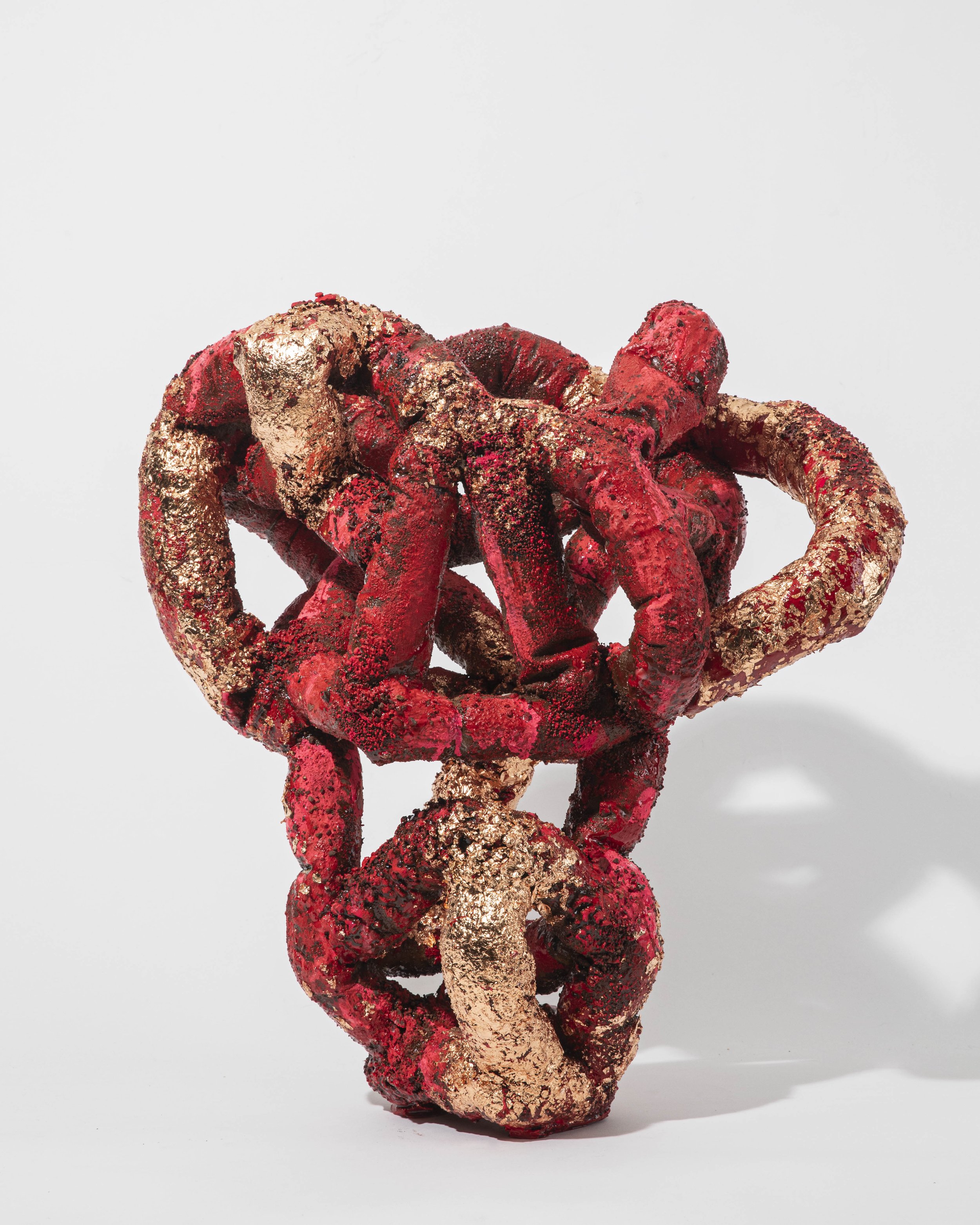
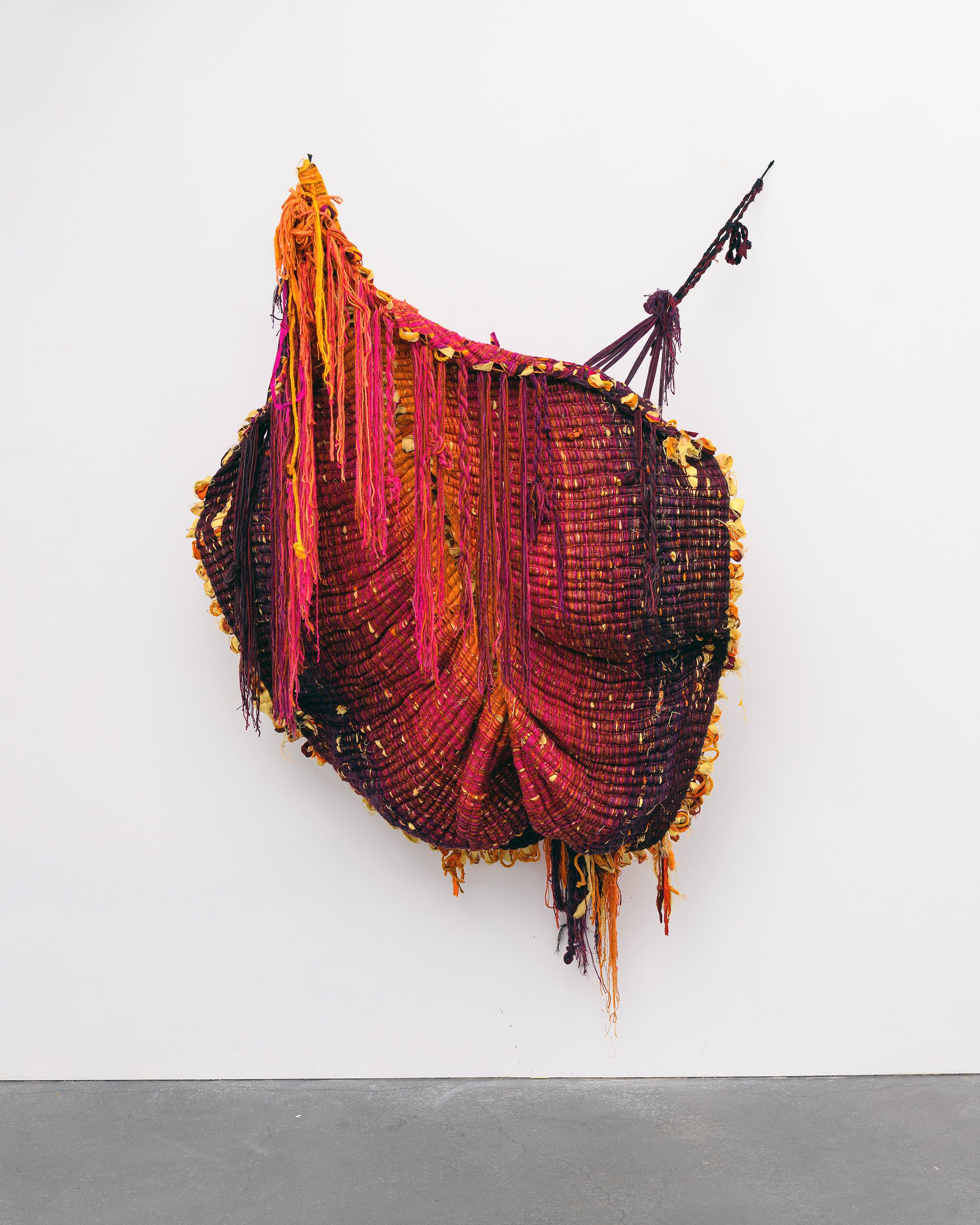
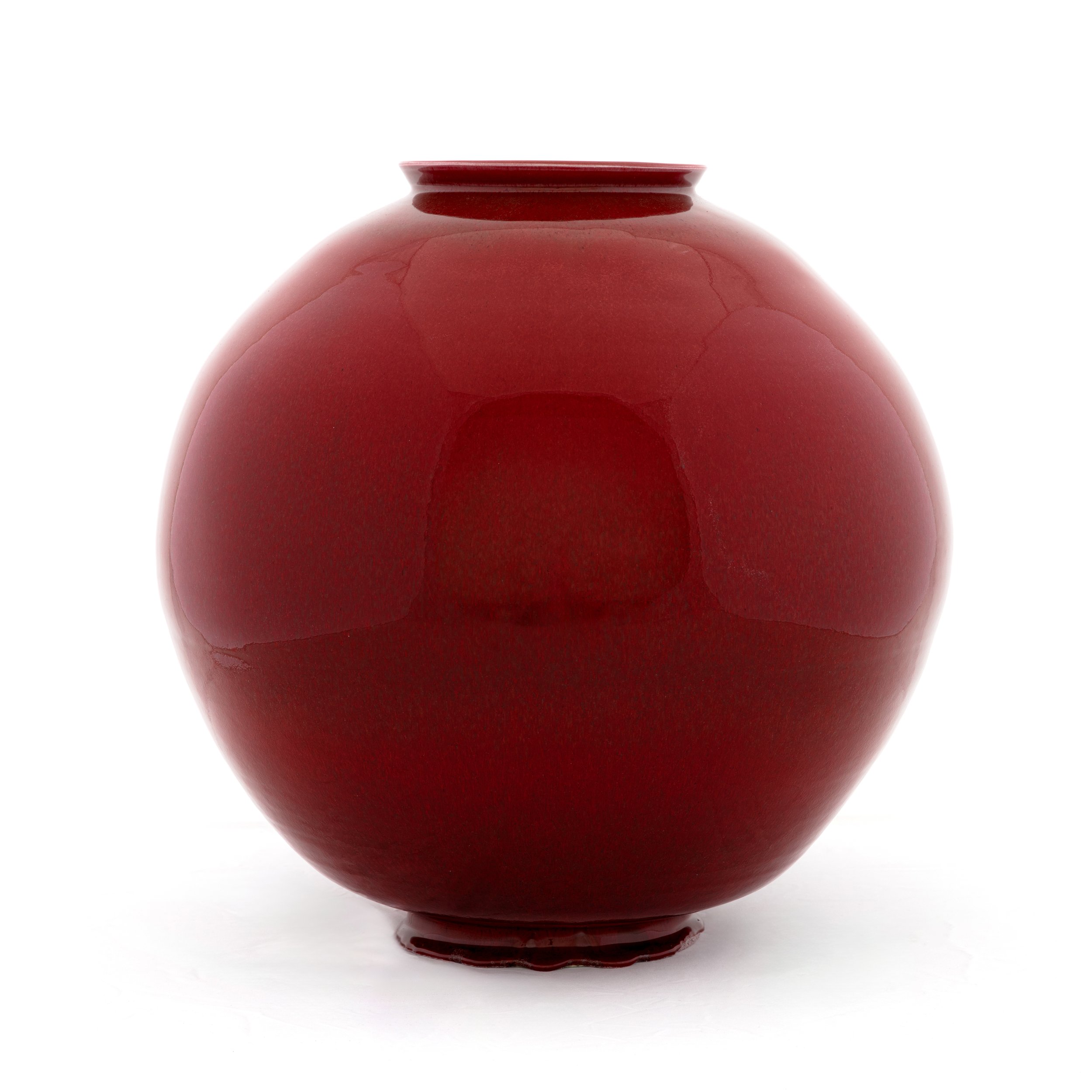
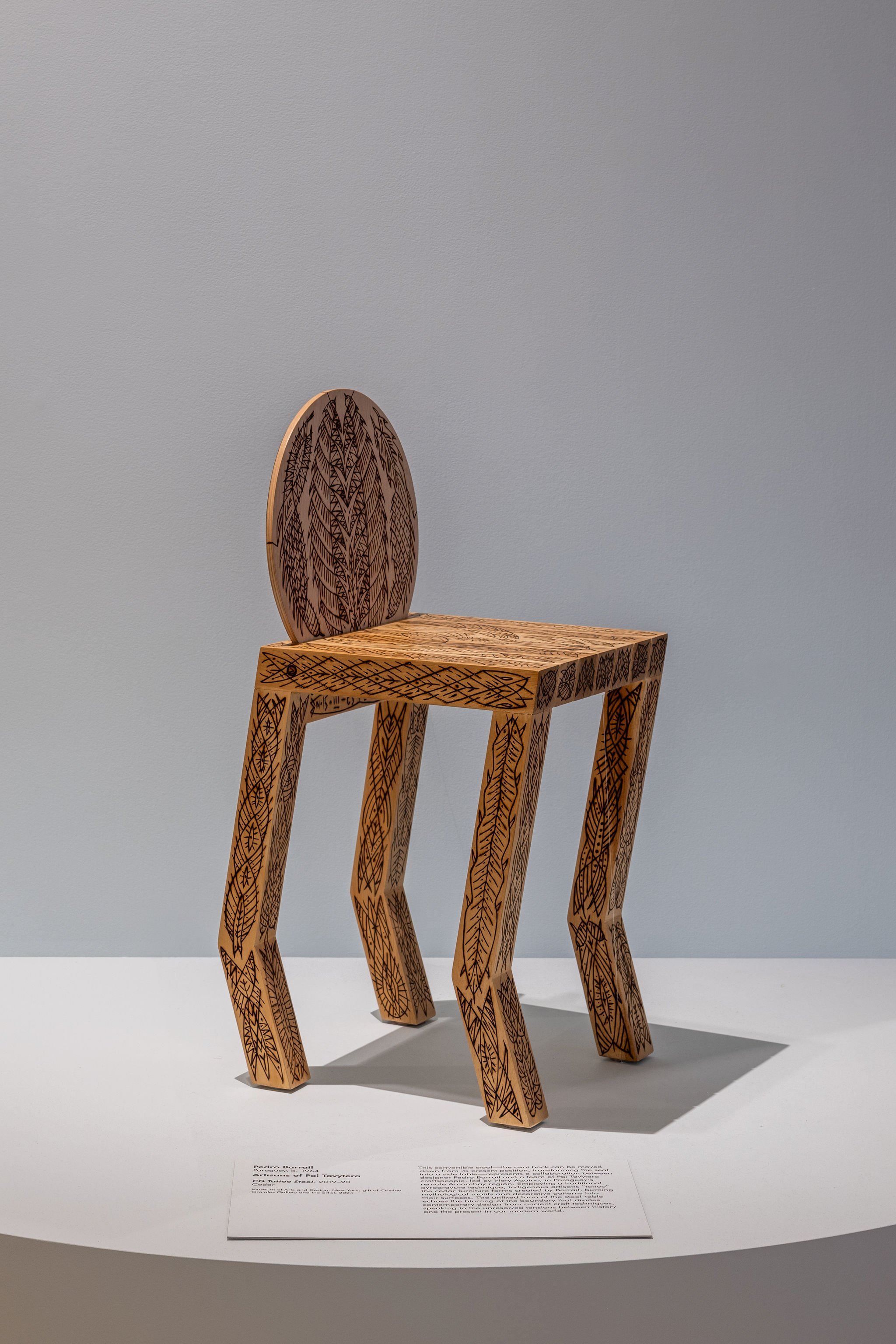
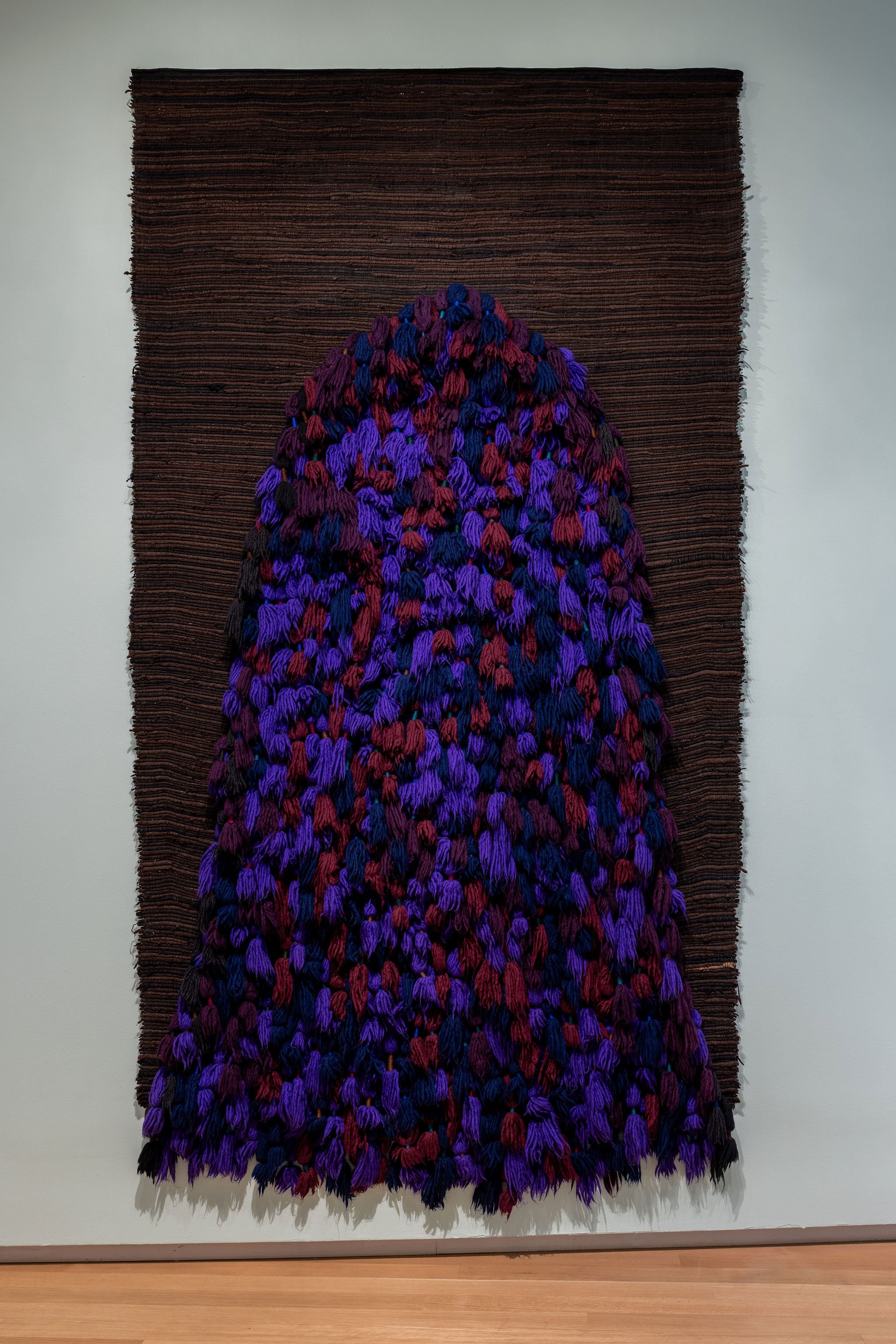
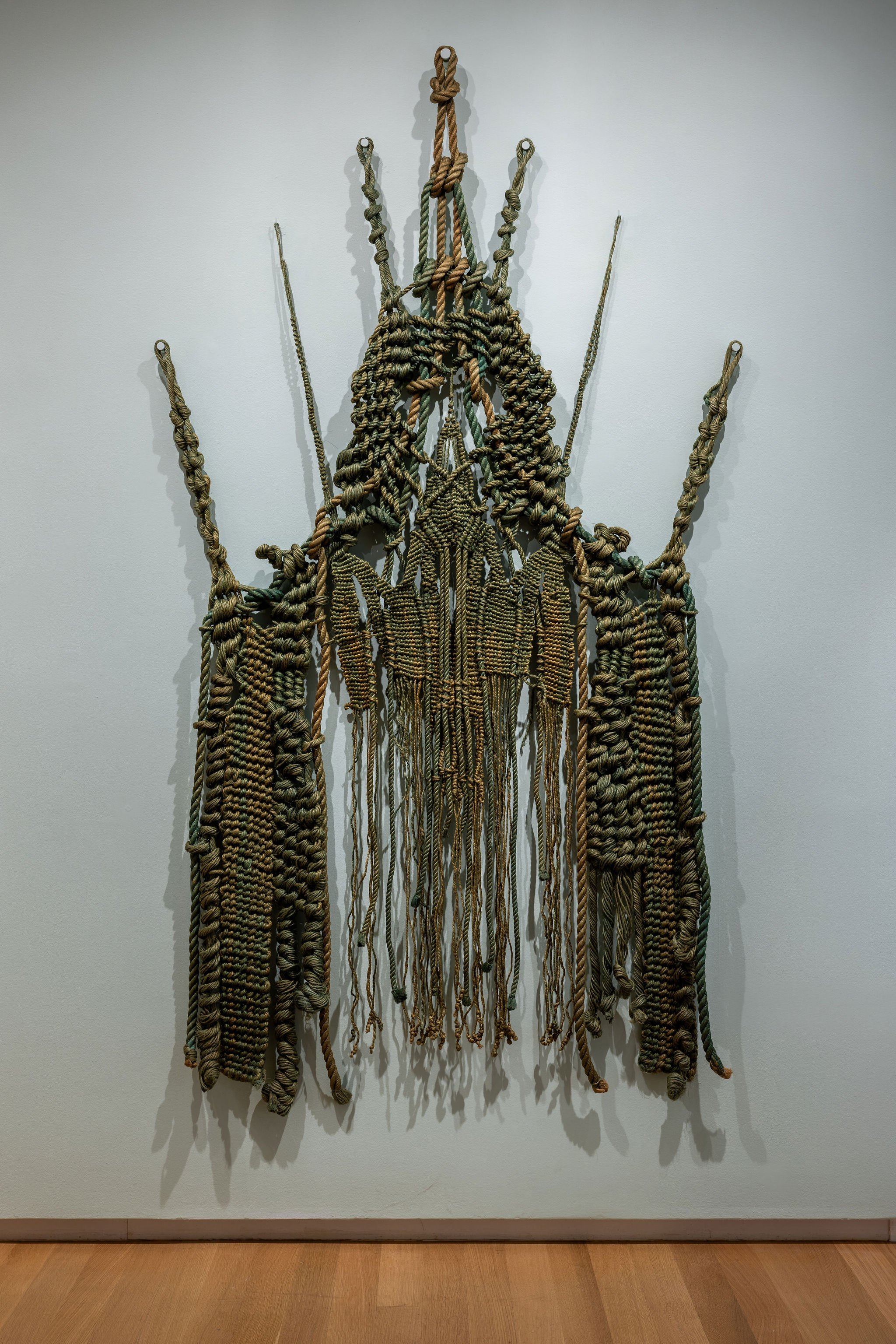
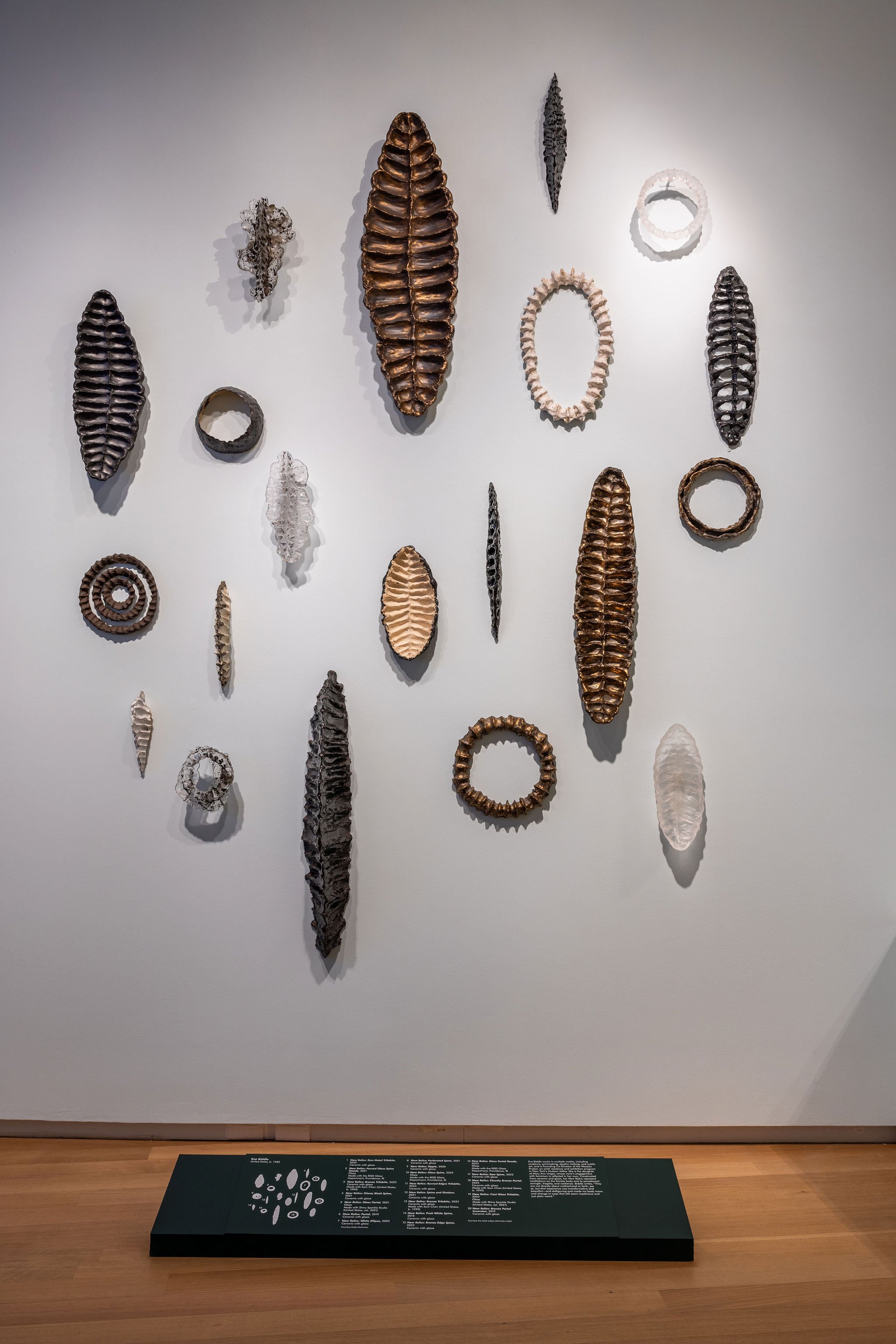
ARTISTS ON VIEW (ALPHABETICAL)
Anni Albers; AYDO Studio (A young Yu and Nicholas Oh); André Azevedo; Eve Biddle; Dale Chihuly; Katherine Choy; Rachelle Dang; Kira Dominguez Hultgren; Ruth Duckworth; Marguerite Friedländer-Wildenhain; Françoise Grossen; Maija Grotell; Trude Guermonprez; Marie Herwald Hermann; Sheila Hicks; Tony Jojola; Jun Kaneko; Liliana Ovalle & Colectivo 1050º; Harvey Littleton; Gertrud Natzler; Otto Natzler; Pedro Barrail & Artisans of Pai Tavytera; Anders Herwald Ruhwald; Kay Sekimachi; Toshiko Takaezu; Peter Ting; Vadis Turner; Mary Ann Unger; Peter Voulkos; Claire Zeisler.
Installation view of Craft Front & Center: Conversation Pieces at the Museum of Arts and Design, New York Photo by Jenna Bascom; courtesy the Museum of Arts and Design. Image dimensions: 2048px x 1366px
ABOUT THE MUSEUM OF ARTS AND DESIGN
The Museum of Arts and Design (MAD) champions contemporary makers across creative fields and presents the work of artists, designers, and artisans who apply the highest level of ingenuity and skill. Since the Museum’s founding in 1956 by philanthropist and visionary Aileen Osborn Webb, MAD has celebrated all facets of making and the creative processes by which materials are transformed, from traditional techniques to cutting-edge technologies. Today, the Museum’s curatorial program builds upon a rich history of exhibitions that emphasize a cross-disciplinary approach to art and design, and reveals the workmanship behind the objects and environments that shape our everyday lives. MAD provides an international platform for practitioners who are influencing the direction of cultural production and driving twenty-first-century innovation, and fosters a participatory setting for visitors to have direct encounters with skilled making and compelling works of art and design.
For more information about this exhibition and other exhibitions at the Museum of Arts and Design, please visit their site here. MAD can also be found on Facebook, Instagram, and YouTube.
Joyce J. Scott: Walk a Mile in My Dreams
Joyce J. Scott: Walk a Mile in My Dreams features a new large-scale commission and nearly 140 objects across the full arc of the artist’s career BALTIMORE, MD On March 24, the Baltimore Museum of Art (BMA) opened the 50-year career retrospective of artist Joyce J. Scott (b. 1948, Baltimore, MD), encompassing the full range and depth of her prolific and genre- defying practice. Joyce J. Scott: Walk a Mile in My Dreams features nearly 140 works from the 1970s to the present—including sculpture, jewelry, textiles, artwear garments, performance compilations, prints, mixed-media installations, and a new large-scale commission. The astonishing virtuosity and ingenuity of Scott’s work in every medium seamlessly coalesces with her lifelong vision to confront racism, sexism, classism, and “all the ‘isms’ society offers” through impish and audacious humor, expressions of beauty, and a humanistic engagement with global events. Her innate ability to move across medium and genre, leveraging her materials to speak fearlessly to subjects of deep personal and communal meaning make her one of the most significant artists of our time and deserving of greater scholarly study and public recognition. Joyce J. Scott: Walk a Mile in My Dreams is co-organized by the BMA and the Seattle Art Museum (SAM) and co-curated by Cecilia Wichmann, BMA Associate Curator of Contemporary Art, and Catharina Manchanda, SAM Jon and Mary Shirley Curator of Modern and Contemporary Art, with support from Leslie Rose, Joyce J. Scott Curatorial Research Assistant. The exhibition will be presented in Baltimore as a special ticketed exhibition from March 24 through July 14, 2024, and in Seattle from October 17, 2024, through January 20, 2025. Joyce J. Scott: Walk a Mile in My Dreams is accompanied by a fully illustrated 288-page catalog that offers new scholarship, artist reflections, and a selection of vital out-of-print source materials.
Installation view of Joyce J. Scott: Walk a Mile in My Dreams at the Baltimore Museum of Art, March 2024. Photo by Mitro Hood.
“Joyce J. Scott is a living legend and a pillar of Baltimore’s artistic community. Her multidisciplinary practice is in a word, magnetic, distinguished in its ability to conjure moments of beauty and awe, while also bringing people into conversation about challenging subjects in a way that is open and embracing. Her work is deeply rooted in both local and global contexts, vibrating with a resonance that is utterly and uniquely Joyce,” said Asma Naeem, the BMA’s Dorothy Wagner Wallis Director. “The
Joyce J. Scott. Joyce's Necklace. c. 1978-85. Rotasa Collection. © Joyce Scott courtesy Goya Contemporary. photo: Ian Reeves
BMA has had the honor of engaging audiences with Scott’s work for many years through exhibitions, public programs, and acquisitions. We are thrilled now to present this comprehensive exhibition that highlights the remarkable range of her career.” Scott has embraced her identity as an artist and performer since childhood. At home in Baltimore, her mother, the artist Elizabeth Talford Scott (1916–2011)—who is also currently the subject of a solo exhibition at the BMA and eight partner sites across Baltimore City—taught her to sew and express herself creatively. Scott considers this knowledge her inheritance: both the specific techniques and aesthetic traditions carried by enslaved people from Africa to the Americas and the awareness of her own life’s potential as part of a continuum.
In the 1970s, Scott began what would become a lifelong commitment to artistic learning and engagementwith global cultures. Her extensive travels have taken her to many countries, including Mexico, Cuba, Peru, Mali, Senegal, Scotland, South Africa, Thailand, and Italy, where she connected with local artisans and community members through a shared embrace of textiles, beads, and glass. As a result, Scott’s work has responded to global events—from the AIDS crisis to South African Apartheid and to American police brutality—and served to memorialize personal and collective transformations and traumas.


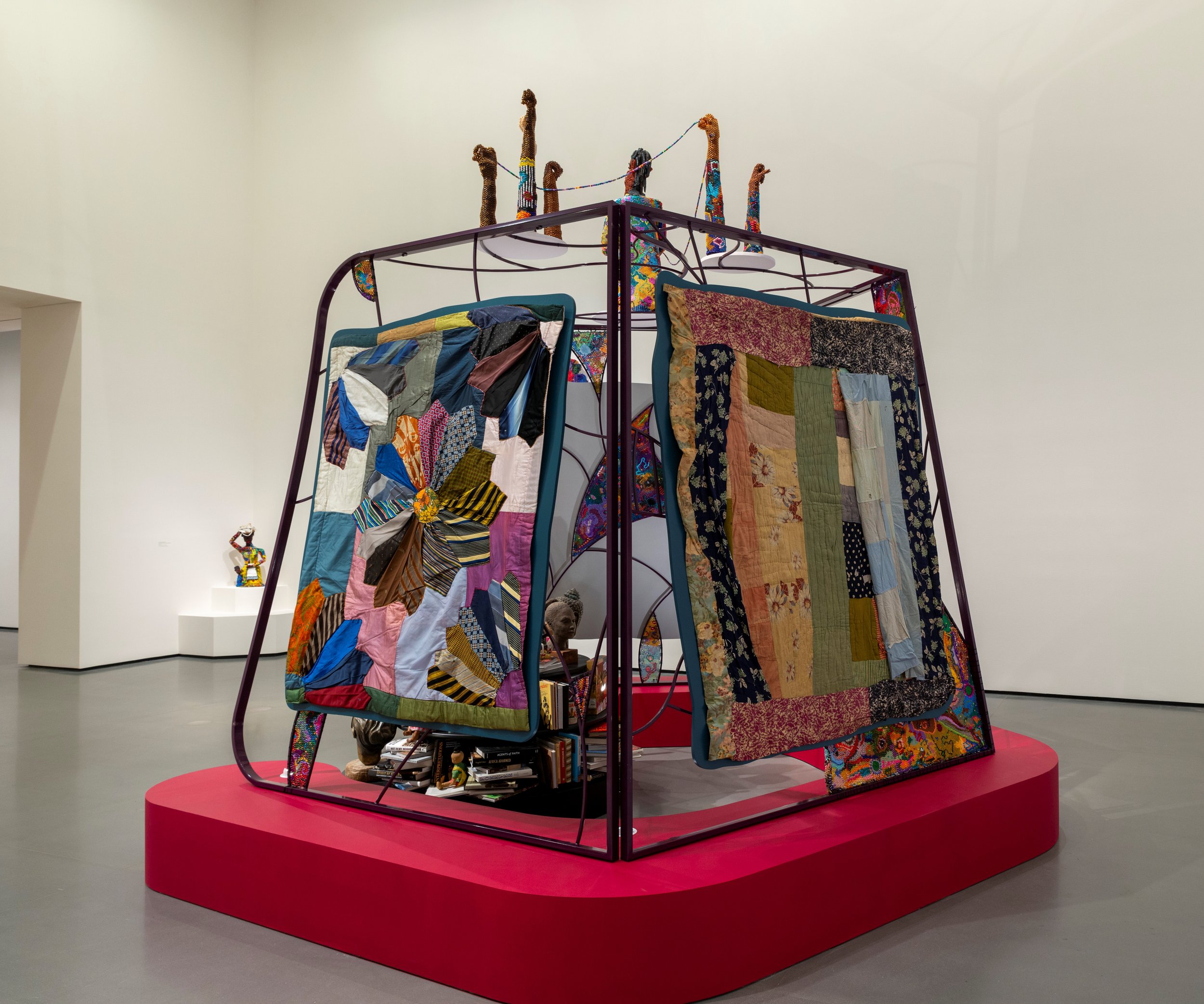







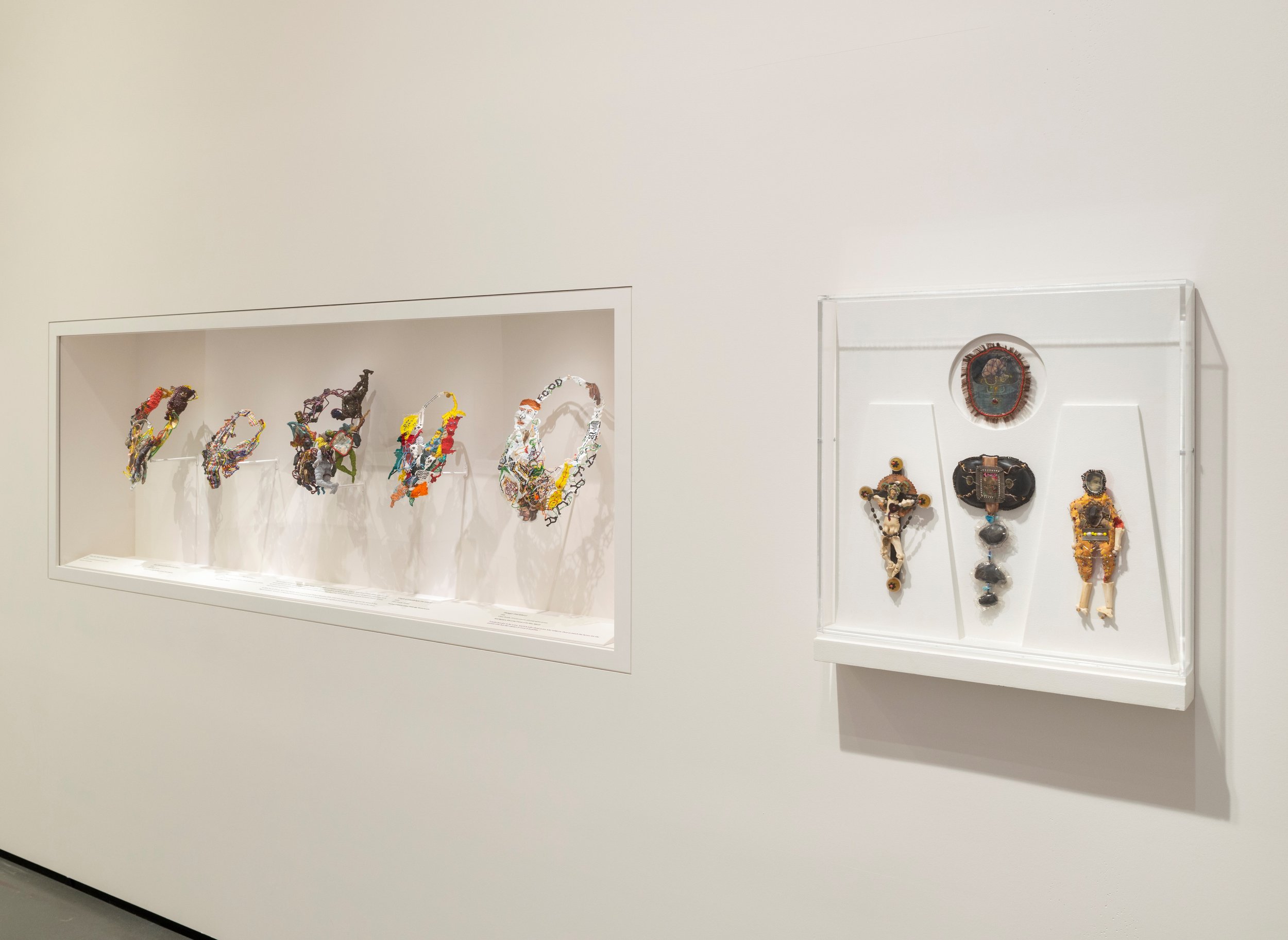





Installation view of Joyce J. Scott: Walk a Mile in My Dreams at the Baltimore Museum of Art, March 2024. Photo by Mitro Hood.
Joyce J. Scott: Walk a Mile in My Dreams draws on the BMA’s long commitment to Scott’s work, from the first acquisition in 1984 to a mid-career retrospective co-organized with the Maryland Institute College of Art’s groundbreaking Exhibition Development Seminar in 2000 and many recent acquisitions.
Kay Lawal and Joyce Scott for the Thunder Thigh Revue's Women in Substance performance, Baltimore. 1985. Philip Arnoult papers, Special Collections, Sheridan Libraries, Johns Hopkins University. © Joyce Scott courtesy Goya Contemporary, photo: Peggy Fox
The exhibition also reflects Scott’s longstanding engagement in the Seattle region through residencies at such venues as Pilchuck Glass School in 1992 and also includes a major sculpture recently acquired by SAM. The BMA’s exhibition is organized in ten thematic sections, with pivotal works reflecting the artist’s cyclical return to motifs and materials over time as she brings forward new ideas and fosters dialogue to support personal healing and critical social change. Additionally, the exhibition includes an expansive array of archival photography drawn in part from the artist’s personal collection. Among the exhibition highlights are:
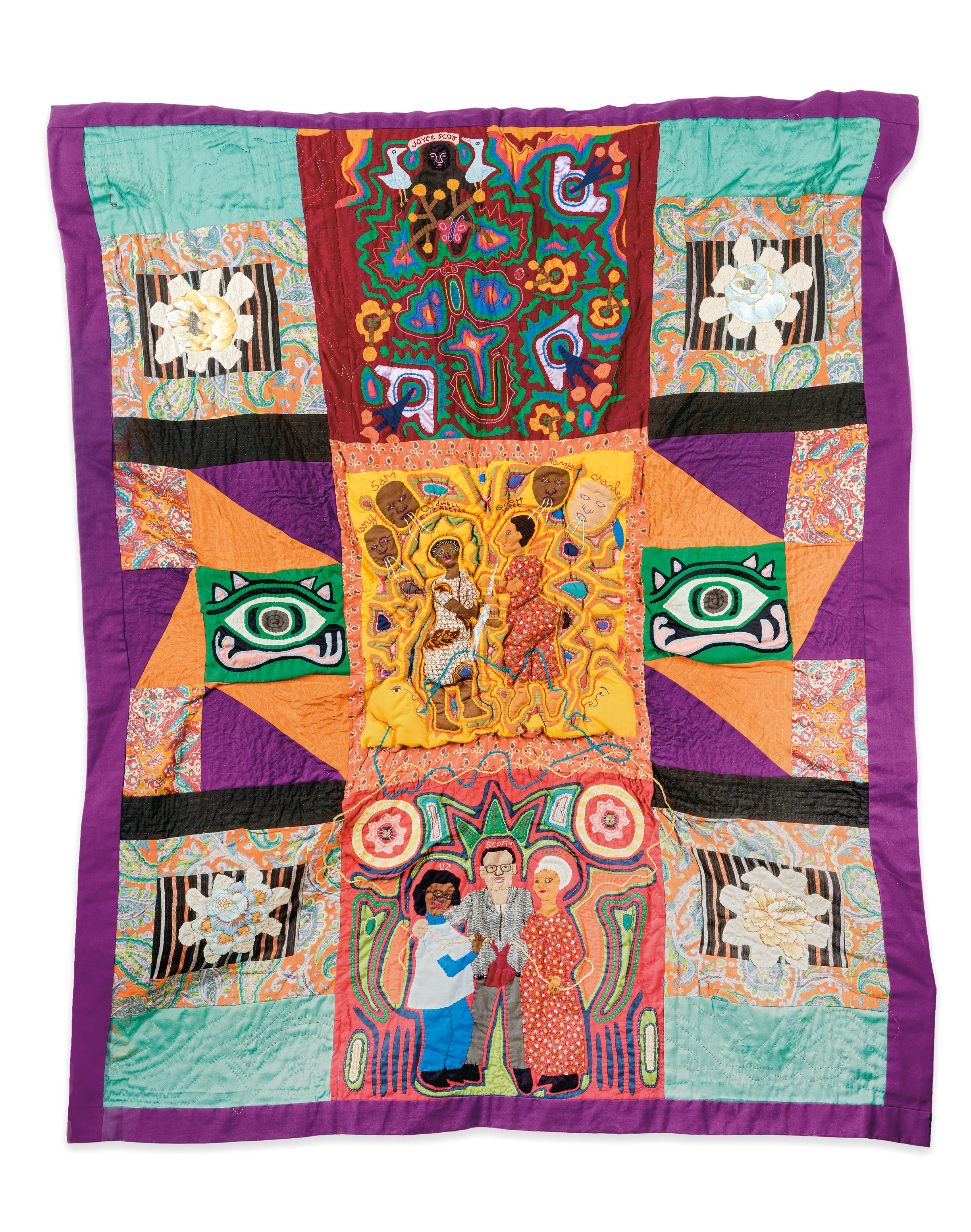
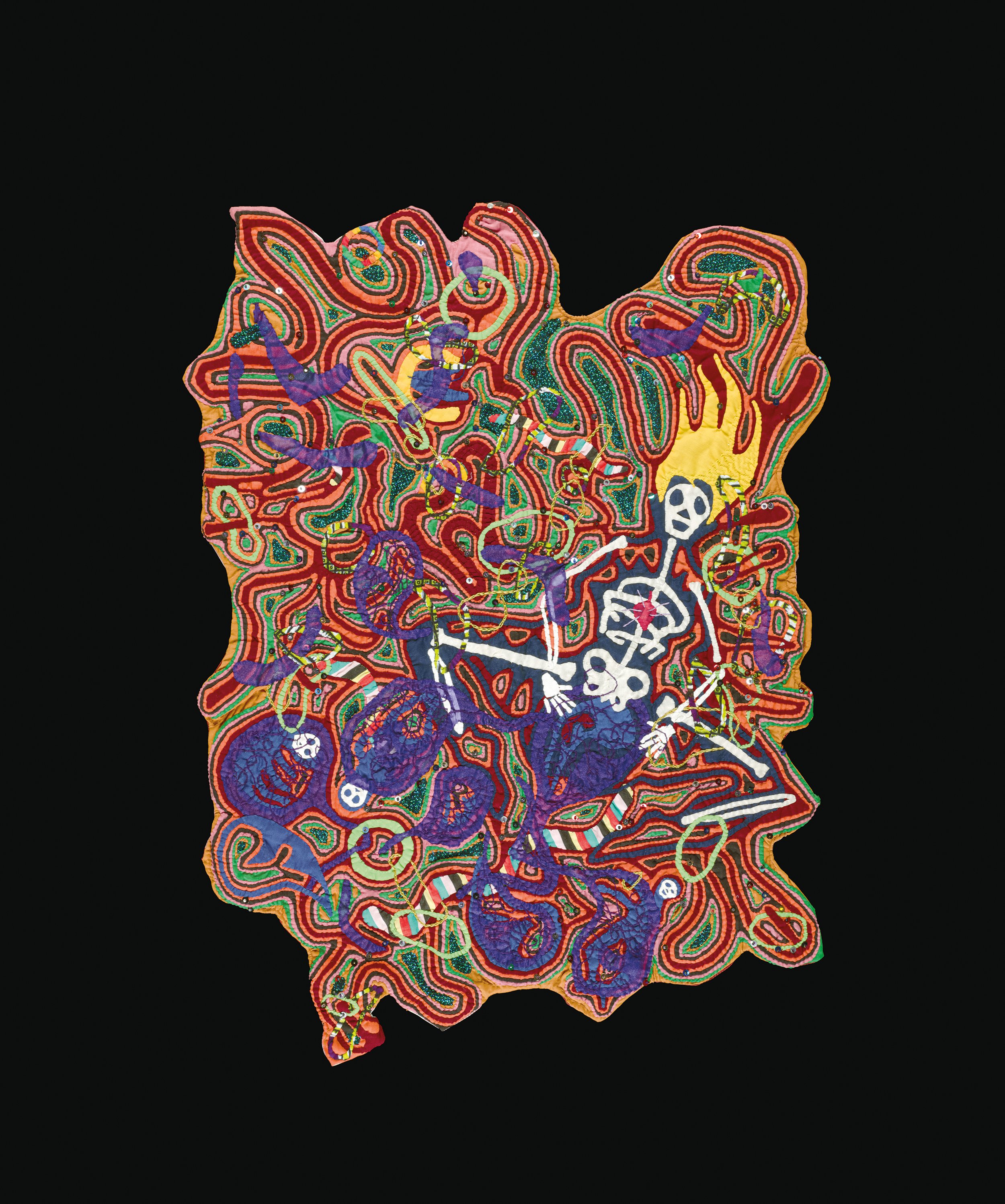








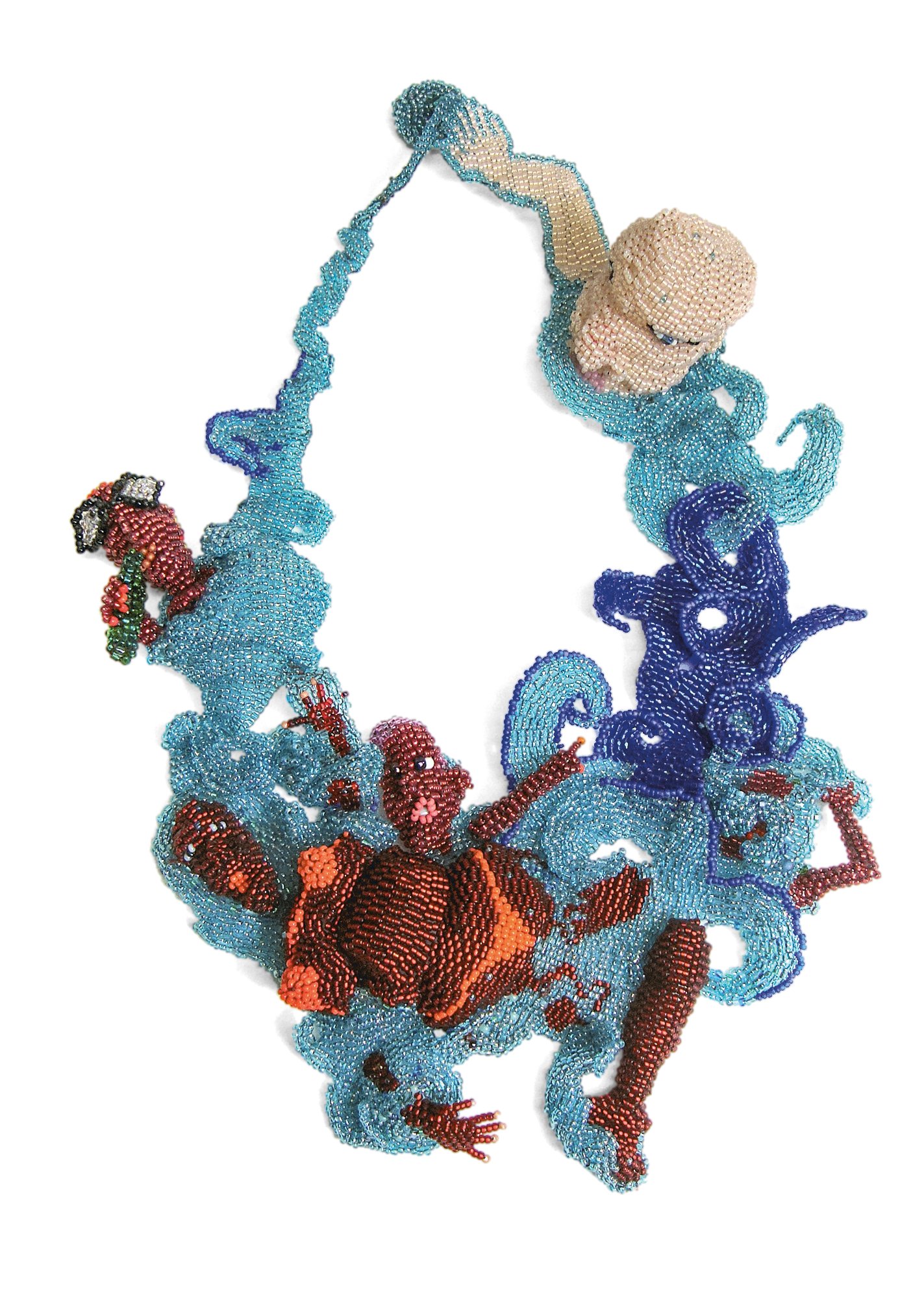



• A new large-scale commission titled The Threads That Unite My Seat to Knowledge (2024) that gathers heirloom family quilts to honor generations of makers in Scott’s family and create a storytelling environment within the exhibition.
• A fashion vignette featuring expressive garments Scott made for herself and friends beginning in the 1970s and sculptural necklaces such as What You Mean Jungle Music (1987) and Hunger (1991) that bridge performance and sculpture, showing how wearing difficult truths can incite conversations about social justice.
• Significant examples from iconic cycles of work reunited for the first time in many years, including Scott’s "Mammy/Nanny” series of the 1980s-90s; riffs on the watermelon trope such as Man Eating Watermelon (1986); and works from her “Still Funny” series that show Scott confronting American history and racial violence in the U.S. and abroad.
Joyce J. Scott performs Walk a Mile in My Drawers, Theatre Project, Baltimore, May 18-19, 2006. Image courtesy of Kel C. Millionie. Photo by Kel C. Millionie
• Ephemera and rare performance footage that bring to life Scott’s earliest performances with Robert Sherman (late 1970s); her legendary “Thunder Thigh Revue” act with Kay Lawal- Muhammad (1985-90); and solo theater pieces such as “Generic Interference/Genetic Engineering” (1988-95) and “Walk a Mile in My Drawers” (2006).
• A communal weaving area echoes Scott’s improvised performances from the 1970s and invites a new generation to discover this collaborative artform. The loom and tables will be periodically activated by Scott and other teaching artists with materials provided by Scrap B-More. Visitors may participate any time; completed works will be presented in the gallery then raffled with proceeds going to support a scholarship fund established by the artist at MICA.Joyce Scott
Joyce J. Scott. Mammie Wada. 1981. Baltimore Museum of Art: Gift of J.B. Hanson and Tom Haulk, Baltimore. © Joyce Scott courtesy Goya Contemporary, photo: Mitro Hood
“Joyce J. Scott’s sophisticated and virtuosic use of a wide range of materials brings beauty and biting irony to bear on subjects ranging from the traumatic to the joyous and transcendent,” said co-curators Wichmann and Manchanda. “Her intergenerational practice is radical in its commitment to community and place while building self-awareness and empathy. Those who already know Scott’s intimate and revelatory work will be astonished to see the many facets of her practice brought together—and those who encounter her work for the first time can expect to be blown away.”




Installation view of Joyce J. Scott: Walk a Mile in My Dreams at the Baltimore Museum of Art, March 2024. Photo by Mitro Hood.
Catalog
A fully illustrated 288-page catalog—co-published by SAM and BMA and distributed by Yale University Press—offers a critical resource that introduces the richness and complexity of Scott’s work through new scholarship, artist reflections, and a selection of vital out-of-print source materials. In addition to an introduction co-authored by Manchanda and Wichmann, the publication features two thematic interviews with the artist by Dr. Leslie King Hammond, Dean Emeritus of the Maryland Institute College of Art, and Valerie Cassel Oliver, Sydney and Frances Lewis Family Curator of Modern and Contemporary Art at the Virginia Museum of Fine Arts. Essays on key aspects of Scott’s work are contributed by scholars Tiffany E. Barber, Angela N. Carroll, Henry J. Drewal, Ashley Minner Jones, and Lowery Stokes Sims. A cross-generational group of artists—Oletha DeVane, Sonya Clark, Kay Lawal-Muhammad, Jeffrey Gibson, Malcolm Peacock, and William Rhodes—reflect on Scott’s influential role as artist, mentor, and educator. The out-of-print catalogue from Scott’s 30-year retrospective organized by guest curator George Ciscle at the BMA with students from MICA’s Exhibition Development Seminar remains a vital resource on Scott’s work and has been digitized and archived: artbma.org/kickinit

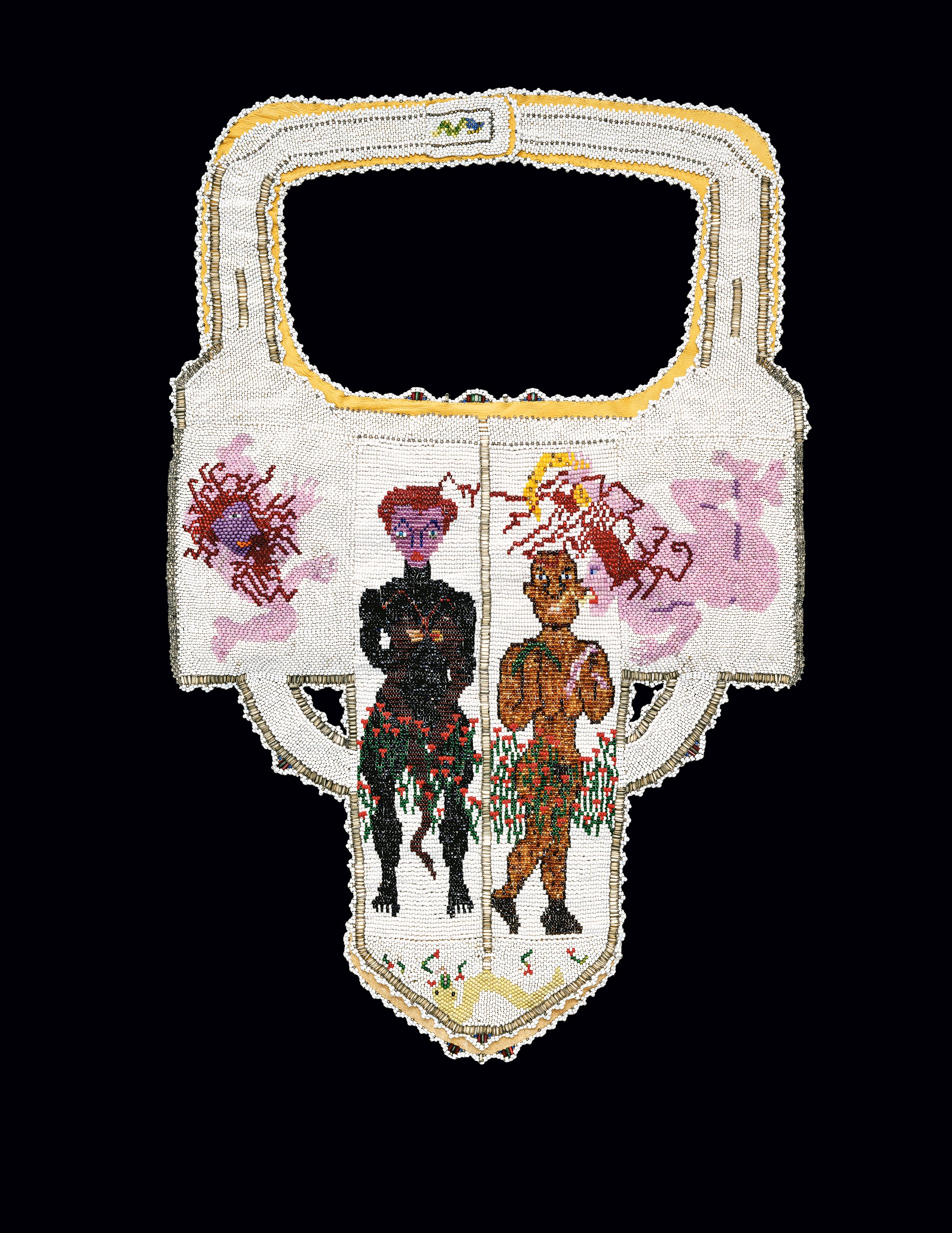



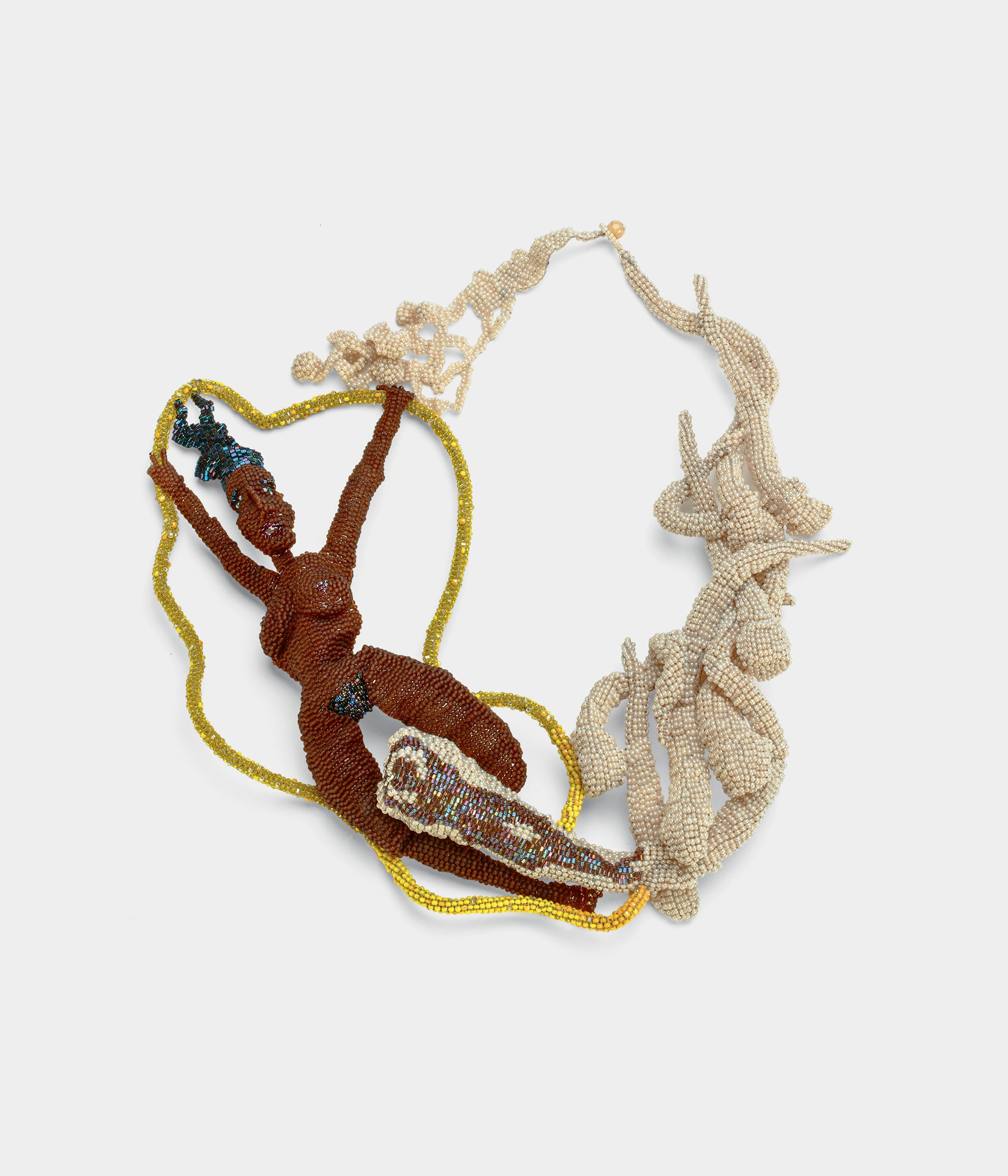

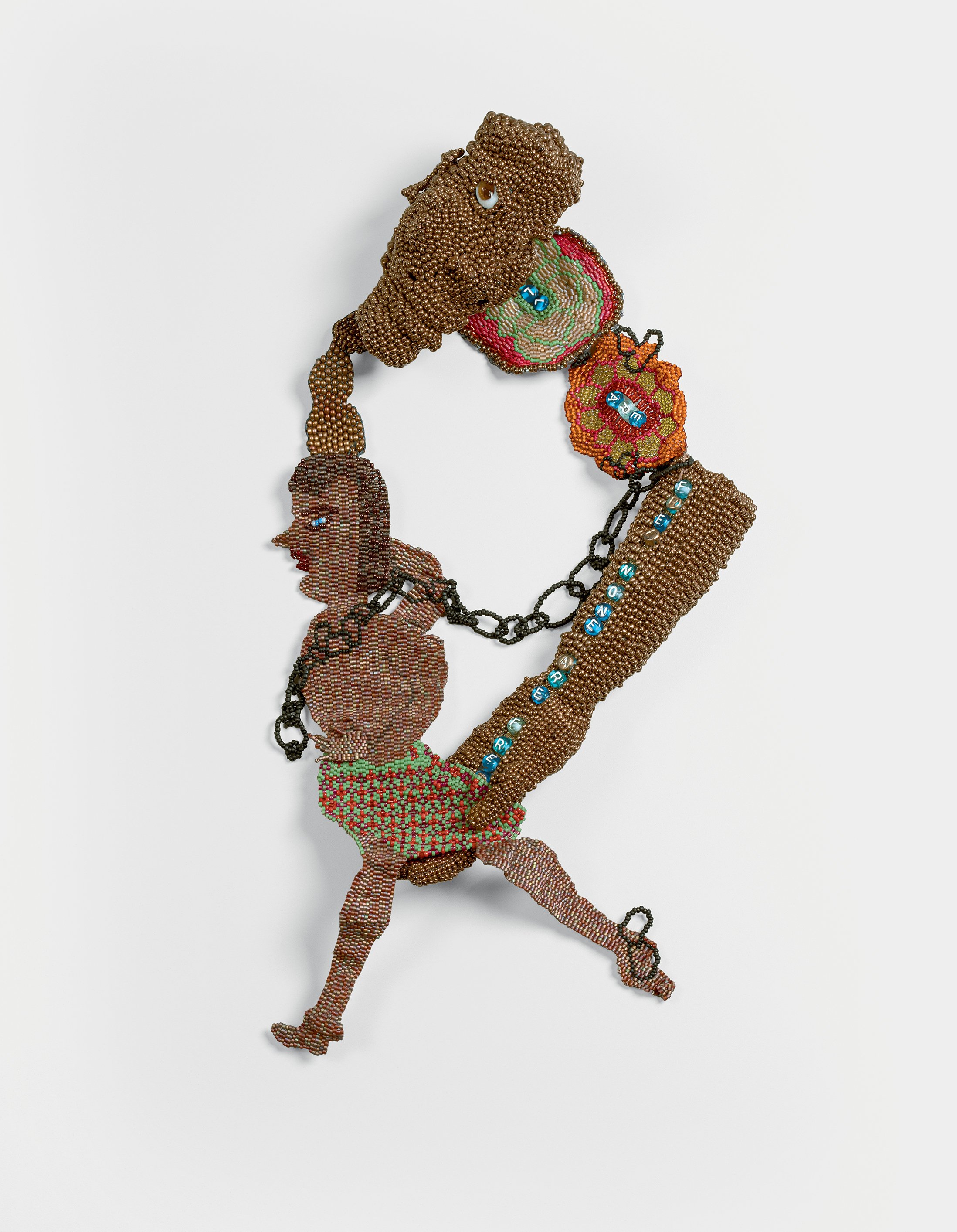



Sponsors
This exhibition and national tour are made possible by substantial grants from the Ford Foundation, Henry Luce Foundation, Terra Foundation for American Art, and The Andy Warhol Foundation for the Visual Arts. In Baltimore, the exhibition is also supported by the Alvin and Fanny B. Thalheimer Exhibition Endowment Fund, the Suzanne F. Cohen Exhibition Fund, Bank of America, Wagner Foundation, Joanne Gold and Andrew Stern, The Jacques and Natasha Gelman Foundation, Transamerica, the National Endowment for the Arts, the Clair Zamoiski Segal and Thomas H. Segal Contemporary Art Endowment Fund, Goya Contemporary Gallery and Martha Macks-Kahn, The Coby Foundation, Ltd., and the American Craft Council.
Courtesy of Joyce J. Scott
Joyce J. Scott
Joyce J. Scott (b. 1948, Baltimore, MD) earned her Bachelor of Fine Arts from the Maryland Institute College of Art and a Master of Fine Arts from the Instituto Allende in Mexico. In 2018, she was awarded an honorary fellowship from NYU, as well as honorary doctorates from both MICA and the California College of the Arts. In 2022, she was awarded an honorary doctorate from Johns Hopkins University. Her work has been the subject of numerous exhibitions, with major solo shows such as Joyce J. Scott: Harriet Tubman and Other Truths at Grounds for Sculpture, Hamilton, NJ (2018); Joyce J. Scott: Truths and Visions at the Museum of Contemporary Art, Cleveland (2015); Maryland to Murano: The Neckpieces & Sculpture of Joyce J. Scott at the Museum of Arts and Design, New York (2014-15); and Joyce J. Scott: Kickin’ It with the Old Masters at the BMA (2000). She has received commissions, grants, awards, residencies, and honors, including from MacArthur Foundation Fellowship (2016), Lifetime Achievement Award from the Women’s Caucus for the Arts, Anonymous Was a Woman, and Smithsonian Visionary Artist Award, among others. Scott’s work is also included in many public collections, including the BMA, Metropolitan Museum of Art, Brooklyn Museum of Art, Los Angeles County Museum of Art, National Museum of African American History and Culture, the Seattle Art Museum, and many others.
Baltimore Museum of Art
Founded in 1914, the Baltimore Museum of Art (BMA) inspires people of all ages and backgrounds through exhibitions, programs, and collections that tell an expansive story of art—challenging long-held narratives and embracing new voices. Our outstanding collection of more than 97,000 objects spans many eras and cultures and includes the world’s largest public holding of works by Henri Matisse; one of the nation’s finest collections of prints, drawings, and photographs; and a rapidly growing number of works by contemporary artists of diverse backgrounds. The museum is also distinguished by a neoclassical building designed by American architect John Russell Pope and two beautifully landscaped gardens featuring an array of modern and contemporary sculpture. The BMA is located three miles north of the Inner Harbor, adjacent to the main campus of Johns Hopkins University, and has a community branch at Lexington Market. General admission is free so that everyone can enjoy the power of art.
Visitor Information
General admission to the BMA is free. The BMA is open Wednesday through Sunday from 10 a.m. to 5 p.m., with extended hours on Thursdays until 9 p.m. The Sculpture Gardens are open Wednesday through Sunday, 10 a.m. to dusk. The museum and gardens are closed New Year’s Day, Juneteenth, July 4, Thanksgiving Day, and Christmas Day. The BMA is located at 10 Art Museum Drive, three miles north of Baltimore’s Inner Harbor. For general museum information, call 443-573-1700 or visit here.
For more information about this exhibition and other exhibitions at the Baltimore Museum of Art, please visit their site here. The museum can also be found on YouTube, Facebook, and Instagram.






